
Grand Transitions: How the Modern World Was Made
by
Vaclav Smil
Published 2 Mar 2021
Figure 2.1 Simplified trajectory of the demographic transition, showing successive declines of death and birth rates and the resulting temporary increase in natural growth rate. In the long run, the fortunes of any species depend on its population dynamics. Consequently, one would expect demographic transitions, so obviously central to the creation of the modern world, to have received a great deal of attention by studies ranging from economic development to environmental degradation. Curiously, this has not been the case. As Tim Dyson concluded, the role of demographic transition “has generally been underestimated” and “unless development theory puts the demographic transition at its core, it cannot adequately account for key social-structural transformations which are integral to the concept of development” (Dyson 2001, 67).
…
That is why Lesthaeghe (2014) concludes that declining fertility is a part of a broader emancipation process motivated by the quest for the attainment of individual goals. Demographic transitions have no single triggers and national experiences do not repeat an orderly preordained sequence. Outlining the consequences of demographic transitions is much easier, and some of those impacts have amounted to the most fundamental transformations of modern civilization, none more so than the rapid multiplication of global population. Consequences of demographic transition The focus should start with the profound effects the process has had on the lives of children and families.
…
Twilight of the Mammoths. Berkeley, CA: University of California Press. Mason, A. 2005. Demographic Transition and Demographic Dividends in Developed and Developing Countries. Mexico City: UN. https://www.researchgate.net/publication/252403184_Demographic_Transition_and_Demographic_Dividends_in_Developed_and_Developing_Countries/link/5432ee0c0cf225bddcc99892/download Mason, A. et al. 2017. Support Ratios and Demographic Dividends: Estimates for the World. New York: UN. Mateos-Planas, X. 2002. The demographic transition in Europe: A neoclassical dynastic approach. Review of Economic Dynamics 5:646–680.
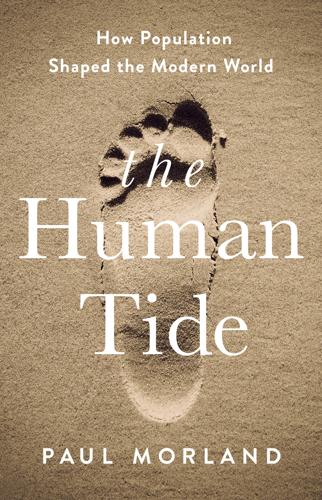
The Human Tide: How Population Shaped the Modern World
by
Paul Morland
Published 10 Jan 2019
Modernisation is a sufficient condition of moving through or having moved through the demographic transition to low fertility and long life expectancy. It alone will ensure that the demographic transition occurs. Women with university degrees will not, in general, have seven children. Office workers living in homes with sewage systems and having access to cars will live longer than did their peasant ancestors who toiled in the fields and relied for transport on their feet and, if lucky, their shoes. But full modernity is not a necessary condition for having made the demographic transition. As the twentieth century progressed it was possible for a still relatively rural country with low levels of income and education to achieve low fertility rates and to lengthen life expectancy.
…
However, the trend turned out to be more than short-lived. Total fertility in the United States, which had fallen to a little over two before the war, rose to well over three and a half by the late 1950s.5 Nothing in Frank Notestein’s demographic transition theory had prepared anyone for this near doubling of fertility once the transition to low mortality and low fertility had been achieved. With hindsight it is clear that Notestein’s model of demographic transition, while not exactly upturned, was in need of refining. The total number of births per annum in the latter part of the 1930s had been a little over 2 million across the US, but by the late 1950s it was twice this number.6 Annual population growth now, even in the continued absence of mass immigration, was double its 1930s level.7 By 1960 the United States had around 180 million citizens compared with a little over 100 million barely forty years earlier.
…
Thereafter, it flattened out and recovered somewhat, hovering at or slightly above two children per woman from the early 1990s, close to if not quite at what is generally considered to be replacement level and thus only a little below its pre-war level, and most recently there appears to have been a reversal down to somewhat below two. Speaking generally, then, the United States can be seen as having reverted to the norm of the final stage of the (first) demographic transition, and is now somewhat beyond this point. Against this backdrop, the post-war baby boom can be seen in retrospect as an aberration–a kink–in the demographic transition, rather than a reversal. The virtuous cycle (virtuous at least to some) of new families creating demand for new goods, boosting the economy, boosting economic prospects and encouraging the formation of new and larger families could not go on forever.
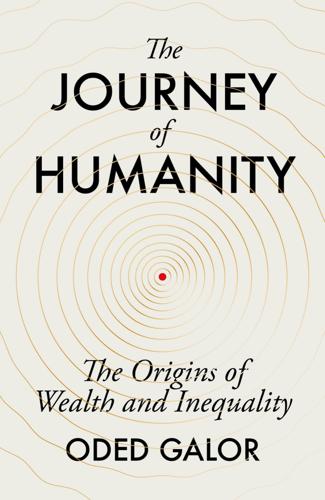
The Journey of Humanity: The Origins of Wealth and Inequality
by
Oded Galor
Published 22 Mar 2022
Yet, in the second half of the nineteenth century, that trend reversed: population growth and birth rates in developed countries fell sharply – a pattern that was repeated in the rest of the world at a faster pace during the twentieth century.[1] Between 1870 and 1920, fertility rates declined by 30 to 50 per cent in most Western European nations (Fig. 8), and in the United States they plummeted even more precipitously.[2] This dramatic collapse in fertility rates along with the fall in mortality rates, which often preceded it, have become known as the Demographic Transition. The Demographic Transition shattered one of the cornerstones of the Malthusian mechanism. Suddenly, higher incomes were no longer channelled towards sustaining an expanded population; ‘bread surpluses’ no longer had to be shared among a larger number of children. Instead, for the first time in human history, technological progress led to an elevation in living standards in the long run, sounding the death knell for the epoch of stagnation.
…
And some evidence suggests that spermicides and primitive condoms were used in the ancient civilisations of Egypt, Greece and Rome.[8] But since all these methods of managing fertility had been present throughout history and had not changed on the eve of the Demographic Transition, the catalysts for such a major, sudden and widespread decline in fertility must have been more profound. Triggers of the Demographic Transition The Rise in the Return on Human Capital As seen in the previous chapter, the growing importance of education in response to a rapidly changing technological environment contributed to human capital formation.
…
The improvements in the Olsson family’s quality of life – a direct product of technological progress – do not recede over the next few generations but only intensify. The descendants of the Jones family will have lived through the Demographic Transition and been liberated from the Malthusian trap a little earlier than the Olssons, towards the end of the nineteenth century, while those of the Kelly family will have broken free of it soon after them in the early part of the twentieth century. At last, thanks to the Demographic Transition, humanity has undergone its phase transition. Phase Transition From the dawn of humankind, technological progress helped generate a gradual increase in population size as well as the proliferation of traits that were conducive to further technological progress.

Common Wealth: Economics for a Crowded Planet
by
Jeffrey Sachs
Published 1 Jan 2008
POPULATION POLICIES AND THE REDUCTION IN FERTILITY It might be supposed that fertility choices are among the most private of all decisions and the least amenable to government action (except, perhaps, by coercion). Yes, societies will pass through a demographic transition, but it would seem to be one that can, should, and will be determined by individual choices, not by government policies. Indeed, for today’s rich countries of Western Europe and the United States, the demographic transition that took place during the twentieth century occurred largely through such decision making of individual households. Yet the same has not been the case in the poorer countries. Their demographic transitions, where they have occurred, have typically been accelerated, and even triggered, by proactive government policies.
…
This is not to blame the poorest countries for their plight, or to fear them. It is to suggest to them, and to us, that reducing the TFR from very high levels is part of their own security and ours. SPEEDING THE DEMOGRAPHIC TRANSITION The world is not locked in a demographic straitjacket but is instead in a transition, albeit one that is stretched out over many decades and with large differences across regions. The core idea is known as the demographic transition, illustrated in Figure 7.6. A society begins with very high mortality rates (especially of young children) and very high fertility rates. The population is roughly stable because the high fertility rates are offset by high mortality rates.
…
Caldwell and coauthors: John C. Caldwell, James F. Phillips, and Barkat-e-Khuda, “The Future of Family Planning Programs,” Issues in Family Planning 33, no. 1 (March 2002): 1–10. CHAPTER 8: COMPLETING THE DEMOGRAPHIC TRANSITION 186 Correlation does not prove: To show lower mortality causes lower fertility see Jeffrey Sachs, Dalton Conley, and Gordon C. McCord, “Africa’s Lagging Demographic Transition: Evidence from Exogenous Impacts of Malaria Ecology and Agricultural Technology,” NBER Working Paper 12892, February 2007. Whether the effect of reducing the fertility is greater than the effect of the mortality reduction depends not only on reducing child mortality, but also on complementary actions regarding education, family planning, and broader economic development as described in the text. 187 Education of Girls: Of course, the education of boys matters greatly as well.

Growth: From Microorganisms to Megacities
by
Vaclav Smil
Published 23 Sep 2019
Instead, population growth has undergone a fundamental transformation through the process of demographic transition, and our abilities to support a larger population (and with better nutrition) have been transformed no less fundamentally by reliance on high direct and indirect energy subsidies (mechanization, irrigation, fertilization, pesticides) that have resulted in increasing harvests. Demographic Transition The unprecedented population growth of the past two centuries is explained by the gradual progress of the demographic transition, the outcome of a complex process of declining death rates (mortality) and birth rates (natality) that was conceptualized by Warren Thompson (1929), called first a “demographic transition” by Landry (1934), and received its standard (classic) formulations from Notestein (1945) and Davis (1945).
…
During the earliest stage of demographic transitions, the death rate begins to fall, in some cases relatively rapidly (as a result of better nutrition and better health care), while birth rates remain at traditionally high levels and this combination results in high rates of population growth (commonly in excess of 1%, that is an order of magnitude higher than in pretransition societies). Eventually birth rates begin to fall as well (and, again, rather precipitously in some cases) and population increase decelerates. A society that has undergone a demographic transition finds itself at a new equilibrium as low birth rates and low death rates result in low natural increases, or even in no growth and absolute population decline.
…
These include growing individualism (stress on self-actualization and autonomy) and secularization, rising symmetry in sex roles, availability of welfare, wider access to higher education, and changes brought by the rise of the service economy and electronic communication (Sobotka 2008; Lesthaege 2014). As with all broad generalizations, the concept of the second demographic transition has been criticized (after all, in some affected countries cohort fertility rates have remained fairly close to the replacement level) and some observers questioned its validity beyond non-European (or non-Western) cultures. But there is no doubt about the direction of the fertility change, and about the presence of the second demographic transition in non-European settings, including parts of East Asia and Latin America (Lesthaege 2014). Reliable statistics document Europe’s rapid fertility declines once the post-WWII baby boom was over.
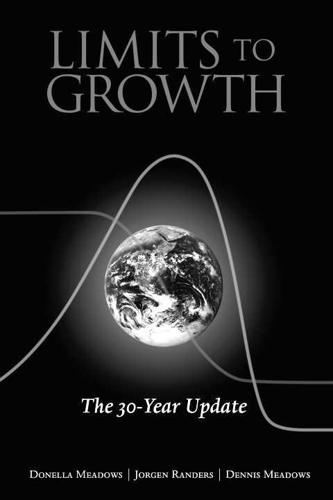
The Limits to Growth: The 30-Year Update
by
Donella H. Meadows
,
Jørgen Randers
and
Dennis L. Meadows
Published 15 Apr 2004
This part of the world has experienced rates of population growth much greater than any the North ever had to deal with (except for North America, which absorbed high rates of immigration from Europe). The populations of many countries of the South have already grown by factors of 10 and are still growing. Their demographic transitions are far from complete. FIGURE 2-6 Demographic Transitions in Industrialized Countries (A) and in Less Industrialized Countries (B) In the demographic transition a nation's death rate falls first, followed by its birth rate. Sweden's demographic transition occurred over almost 200 years, with the birth rate remaining rather close to the death rate. During this time Sweden's population increased less than fivefold.
…
The less industrialized countries of the late 1900s have experienced much larger gaps between their birth and death rates than any that ever prevailed in the now industrialized countries. (Sources: N. Keyfitz and W. Flieger; J. Chesnais; UN; PRB; UK ONS; Republic of China.) FIGURE 2-6 Demographic Transitions in Industrialized Countries (A) and in Less Industrialized Countries (B) FIGURE 2-6 Demographic Transitions in Industrialized Countries (A) and in Less Industrialized Countries (B) Demographers argue about why there appears to be a demographic transition linked to industrialization. The driving factors are more complicated than rising income alone. Figure 2-7 shows, for example, the correlation between per capita income (measured as the gross national income, or GNI,8 per person per year) and birth rates in various countries of the world.
…
Figure 2-5 World Annual Population Increase World Population Prospects 2000 (New York: United Nations, 2000). Donald J. Bogue, Principles of Demography (New York: John Wiley and Sons, 1969). Figure 2-6 Demographic Transitions in Industrialized Countries and in Less Industrialized Countries Nathan Keyfitz and W. Flieger, World Population: an Analysis of Vital Data (Chicago: Univ. Chicago Press, 1968). J. Chesnais, The Demographic Transition: Stages, Patterns, and Economic Implications; a Longitudinal Study of Sixty-Seven Countries Covering the Period 1720-1984 (New York Oxford University Press, 1992). Demographic Yearbook (New York: United Nations, various years).

The Rational Optimist: How Prosperity Evolves
by
Matt Ridley
Published 17 May 2010
Even Yemen, the country with the highest birth rate in the world for most of the 1970s with an average of nearly nine babies per woman, has halved the number. Once the demographic transition starts happening in a country it happens at all levels of society pretty well at the same time. Not everybody saw the demographic transition coming, but some did. When the journalist John Maddox wrote a book in 1973 arguing that the demographic transition was already slowing Asian birth rates, he was treated to a condescending blast by Paul Ehrlich and John Holdren: The most serious of Maddox’s many demographic errors is his invocation of a ‘demographic transition’ as the cure for population growth in Asia, Africa and Latin America.
…
Environmental heresies. Technology Review, May 2005. p. 206 ‘the entire world is experiencing the second half of a “demographic transition”’. Caldwell, J. 2006. Demographic Transition Theory. Springer. p. 207 ‘a condescending blast by Paul Ehrlich and John Holdren’. Maddox’s book was called The Doomsday Syndrome (1973, McGraw Hill) and Holdren’s and Ehrlich’s review is quoted by John Tierney at http://tierneylab.blogs.nytimes.com/2009/04/15/the-skeptical-prophet/. p. 207 ‘demographic transition theory is a splendidly confused field.’ Or to put it in academic-ese, ‘the debate continues with a plethora of contending theoretical frameworks, none of which has gained wide adherence.’
…
Rarely has a paragraph proved so wrong so soon. An unexplained phenomenon Deliciously, nobody really knows how to explain this mysteriously predictable phenomenon. Demographic transition theory is a splendidly confused field. The birth-rate collapse seems to be largely a bottom-up thing that emerges by cultural evolution, spreads by word of mouth, and is not commanded by fiat from above. Neither governments nor churches can take much credit. After all, the European demographic transition happened in the nineteenth century without any official encouragement or even knowledge. In the case of France, it happened in the teeth of official encouragement to breed.

The State and the Stork: The Population Debate and Policy Making in US History
by
Derek S. Hoff
Published 30 May 2012
Latham, Modernization as Ideology: American Social Science and “Nation Building” in the Kennedy Era (Chapel Hill: University of North Carolina Press, 2000); Robertson, Malthusian Moment, chap. 4; and Daniel Aksamit, “Precursors to Modernization Theory in United States Government Policy: A Study of the Tennessee Valley Authority, Japanese Occupation, and Point Four Program” (master’s thesis, Kansas State University, 2009). 14. An excellent entry into demographic transition theory and the evolution from 1945 to 1955 of activist support for family planning programs is Dennis Hodgson, “Demography as Social Science and Policy Science,” Population and Development Review 9 (March 1983): 1–34. Also see Robertson, Malthusian Moment, chap. 3. For a perspective that locates a more a consistent policy orientation among demographers and stresses the influence of the Cold War in driving the theory’s evolution, see Simon Szreter, “The Idea of Demographic Transition Theory and the Study of Fertility Change: A Critical Intellectual History,” Population and Development Review 19 (December 1993): 659–701.
…
Population concerns, in turn, have remade American political development and the American political economy. Sustained population growth has been a defining feature of the American experiment. The first census in 1790 recorded 4 million people, and, even as birthrates began coming down in response to modernization (a process demographers call the “demographic transition”), the population had risen to 31 million by the Civil War. In 1900, 76 million citizens inhabited the United States; in 2000, 281 million. After crossing the 300-million milestone in the fall of 2006, the population when this book came out was about 315 million. The US is the third most populous nation in the world, trailing only China and India.
…
As women increasingly participated in civic affairs and the market, and egalitarian notions of the household took root, average family size began to decline.109 (During the nineteenth century, each generation would have fewer children than the one before it, and the birthrate decreased from about eight babies per woman in 1800 to four in 1900.)110 White Americans underwent the “demographic transition” to lower birthrates well in advance of women in every European nation except France. The immediate causes of the transition were later marriages and planned and spaced procreation (more so than increased use of contraception). Historians debate potential deeper causes, such as the rise of companionate marriage, a more sentimental view of childbearing, the higher cost of raising children, consumerism, urbanization and industriali- foundations 33 zation, the spread of the wage system, and, for women, the leveling spirit of the American Revolution.111 Yet even as families had fewer children, many older elite Americans weaned on Revolutionary-era republicanism still feared the limits described by Malthus.

The End of Doom: Environmental Renewal in the Twenty-First Century
by
Ronald Bailey
Published 20 Jul 2015
“I am one of twelve,” my driver replied, adding that he had grown up on a farm in the northern part of the country. Then I asked, “How many children do your kids have now? “None,” he replied with a hint of a frown. “City life is so expensive, a couple are still finishing up school, and good jobs are hard to find,” he explained. That’s the demographic transition right there, I thought to myself. Population researchers define the demographic transition as the change in the human condition from high mortality and high fertility to low mortality and low fertility. Initially, both birthrates and death rates are high and natural population growth is low. With the advent of modern medicine and sanitation, mortality rates fall and fertility remains high, producing a rapidly growing population.
…
On the other hand, poor countries channeled a larger share of their gains from increased international trade into producing more children. As a consequence, “the demographic transition in these nonindustrial economies has been significantly delayed,” asserts Galor, “increasing further their relative abundance of unskilled labor, enhancing their comparative disadvantage in the production of skill-intensive goods, and delaying their process of development.” OECD economist Fabrice Murtin concurs with Galor that education is the key to lower fertility rates. In his 2009 study “On the Demographic Transition,” Murtin assembled data from seventy-one countries from 1870 to 2000, to conclude that “education, rather than income or health-related variables, is the most robust determinant of the birth rate, potentially explaining about 50 to 80 percent of its decrease when average schooling grows from 0 to 10 years.”
…
Lutz calculates that world population in 2060 would be 1 billion fewer if the education of women globally could be speeded up to the rate achieved by South Korea in the 1960s and 1970s. As Galor noted, the demographic transition was delayed in many poor countries, but in the second half of the twentieth century these countries also began to see rapid declines in their fertility rates. Bucknell University political scientist John Doces finds that increasing international trade is now propelling the demographic transition throughout much of the developing world. In fact, as global fertility declined since the 1950s, the value of world merchandise exports during the same period has soared by nearly ninety times.

China's Future
by
David Shambaugh
Published 11 Mar 2016
The aging of the population is also contributing to the gradual shrinking of the labor force as the “baby boomers” born in the 1960s–1970s, who powered the post-reform boom, age. Let us look at this more closely. Demographic Transition Of all the multiple social challenges we catalogue in this chapter, perhaps the most profound—yet quietest—factor shaping China’s future is its demographic transition from a young to an aging society (Figure 3.8). The size of the country’s population aged 60 and above will increase dramatically, growing by 100 million in just fifteen years—from 200 million in 2015 to over 300 million by 2030—and a projected 450 million by 2050.
…
The Third Plenum Revisited Rebalancing Growth Rates Worrying Sectoral Signs The Financial System Personal Consumption and Spending State-Owned Enterprise Reform The Key to Success: Innovation Pathways to China’s Economic Future Prospects Notes 3 China’s Society China’s Shifting Class Composition The Volatile Periphery Civil Society Urbanization Migration and the Labor Market Demographic Transition Provision of Public Goods Pathways to China’s Social Future Notes 4 China’s Polity China’s Recent Political Evolution Pathways to China’s Political Future Notes 5 China’s Future and the World Rising Tensions on China’s Periphery China’s Relations with Other Powers The Global South: Fraternity or Neo-Colonialism?
…
This chapter catalogues many of the major societal challenges in China today. Effectively addressing these challenges will create ongoing tasks for the government into the future. Some—such as urbanization, healthcare, education, pensions, and environmental cleanup—are occurring as a result of government initiatives. Others, such as social stratification or demographic transition, are occurring largely irrespective of government policies. And some—such as repression of the public sphere and unrest along China’s periphery—are occurring because of government policies. In some spheres a stronger and more proactive state is required (environmental protection, public good provision), while in other domains a looser and less repressive state is needed (public sphere, Xinjiang and Tibet) in order to cope with the challenges.

Exceptional People: How Migration Shaped Our World and Will Define Our Future
by
Ian Goldin
,
Geoffrey Cameron
and
Meera Balarajan
Published 20 Dec 2010
Growing Working-Age populations in Developing countries In forecasting future population trends, the concept of the “demographic transition” can explain why the age distribution within nations and regions changes over time. The demographic transition is the movement of a country—over several decades—from a pattern of high mortality and high fertility to one of low mortality and low fertility. Death rates typically drop faster than birth rates (which may actually increase due to better maternal health),50 and as a result, countries beginning the transition experience a population bulge. The age distribution becomes younger at this first stage of the demographic transition, and the working-age population increases annually—with more people entering the workforce than are leaving it. 51 These population changes are linked to broader socio-economic processes of development and urbanization—which improve incomes and access to health care and education—that lead mortality rates to fall.
…
The reason that cities have grown so fast in developing countries—aside from rural-urban migration—is because they were typically the first part of the country to experience the demographic transition. Health care services are more easily available and information is transmitted more quickly in urban areas, which leads mortality to decline before the trend takes hold in rural areas.52 Most highly populated countries in the developing world have recently passed this stage of accelerated population growth, which is currently contributing to growing numbers of working-age people. Historically, countries experiencing the first phase of the demographic transition have experienced high rates of emigration. This was certainly true of Europe in the nineteenth century, when a boom in the number of “migration-sensitive” young adults led to greater migration pressure.
…
United Nations. 2009. Population Prospects: The 2008 Revision. Available at http://esa.un.org/unpp; accessed 29 May 2009. What we can say for certain is that working-age populations are already growing rapidly in some developing countries due to late demographic transitions. While many countries in East Asia are beyond the phase of their demographic transition when population growth peaks, other developing countries are still expecting significant population growth over the next forty years (see figure 7.5). Even after fertility declines, the total population continues to increase because the big cohorts born due to earlier higher fertility enter child-bearing age.
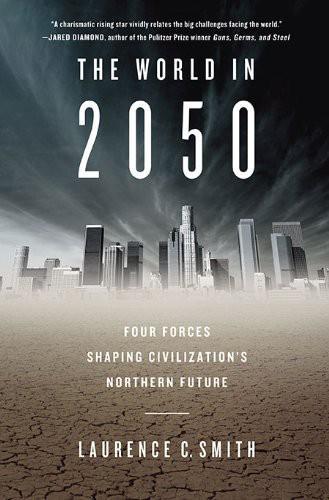
The World in 2050: Four Forces Shaping Civilization's Northern Future
by
Laurence C. Smith
Published 22 Sep 2010
Even if fertility rates later fall to match death rates—thus completing the Demographic Transition and halting further growth—a new, much larger population balance is then carried forward. In the twentieth century, one Demographic Transition concluded and another began. In Europe and North America it took from about 1750 to 1950 to complete, making these places the fastest-growing in the world while most of Asia and Africa grew slowly. This growth then slowed or stopped as industrialized countries completed the Demographic Transition, their fertility rates falling to near or even below the death rate. But in the developing world, a new Demographic Transition that began in the early twentieth century with the arrival of modern medicine has still not finished.
…
Instead of being small, poor, prolific, and death-prone they were now large, rich, and long-lived with few children. This chain of events, in which a population run-up is at first initiated, then later stabilized, by the forces of modernization is called the Demographic Transition and is a bedrock concept in demography.16 The Demographic Transition supposes that modernization tends to reduce death and fertility rates, but not simultaneously. Because people tend to readily adopt technological advances in medicine and food production, death rates fall first and quickly. But fertility reductions—which tend to be driven by increased education and empowerment of women, an urban lifestyle, access to contraception, downsized family expectations, and other cultural changes—take more time.
…
Thanks to the inventions of antibiotics and vaccines, along with insecticides to control diseases like malaria, death rates have plummeted17 but fertility rates, while dropping, have fallen less quickly. In some countries they haven’t fallen at all, defying the classic Demographic Transition notion that all modernized women prefer fewer babies. Such discrepancies underline a known weakness of the Demographic Transition model: Not every culture will necessarily adopt the western ideal of a small nuclear family, even after women’s rights, health, and security conditions improve. So somewhere around 1950, our fastest population growth rates left the OECD countries18 and went to the developing world.
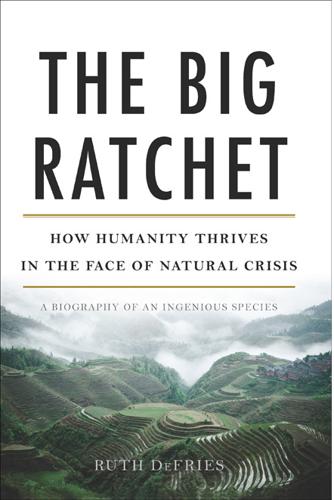
The Big Ratchet: How Humanity Thrives in the Face of Natural Crisis
by
Ruth Defries
Published 8 Sep 2014
Social vulnerability and ecological fragility: Building bridges between social and natural sciences using the Irish potato famine as a case study. Conservation Ecology 7:9. French, F., and C. Burgess. 2007. Into That Silent Sea: Trailblazers of the Space Era, 1961–1965. University of Nebraska Press, Lincoln. Galor, O. 2012. The demographic transition: Causes and consequences. Cliometrica 6:1–28. Galor, O., and D. Weil. 2000. Population, technology, and growth: From Malthusian stagnation to the demographic transition and beyond. American Economic Review 90:806–828. Geertz, C. 1963. Agricultural Involution: The Process of Ecological Change in Indonesia. University of California Press, Berkeley. Kearney, J. 2010. Food consumption trends and drivers.
…
Balzer, E. Bennett, S. Carpenter, J. Hill, C. Monfreda, S. Polasky, J. Rockström, J. Sheehan, S. Siebert, D. Tilman, and D. Zaks. 2011. Solutions for a cultivated planet. Nature 478:337–342. Galor, O. 2012. The demographic transition: Causes and consequences. Cliometrica 6:1–28. Galor, O., and D. Weil. 2000. Population, technology, and growth: From Malthusian stagnation to the demographic transition and beyond. American Economic Review 90:806–828. Garnett, T. 2011. Where are the best opportunities for reducing greenhouse gas emissions in the food system (including the food chain)? Food Policy 36:S23–S32.
…
A rationale for large families disappeared as labor-intensive farm life gave way to city living. Women married and had children later in life. We can all probably trace this arc of large to small families with a view back a few generations into our own family trees. The shift from high death and birth rates to low rates for both is known as the demographic transition. It is responsible for the massive explosion in the number of mouths to feed during the Big Ratchet, although it began in around 1800 in northwestern Europe. The Big Ratchet’s transition ranks among the largest demographic upheavals in human history, and in most countries it is still underway.
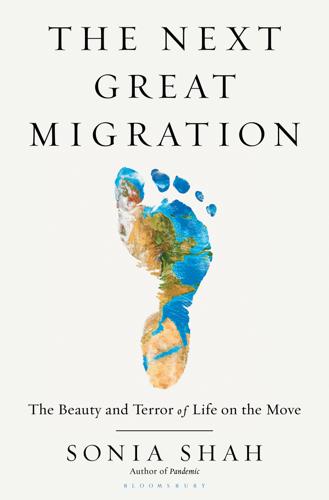
The Next Great Migration: The Beauty and Terror of Life on the Move
by
Sonia Shah
But then, after World War II, demographic trends shifted. In the United States and other prosperous countries, birth rates zoomed. The “baby boom” reversed the prediction of demographic transition theory, which suggested that people in prosperous societies tended to have smaller families. Meanwhile, in poor countries such as India, death rates fell. Chemicals such as fertilizers and antibiotics, developed during the war, circumvented the disease and famine that otherwise killed off millions. That undermined demographic transition theory, too, because there’d been no underlying economic development or modernization. Scientists started resurrecting Malthusian concerns in a spate of popular books.
…
Thanks to people working together to develop and share new technology, improve education, and modernize societies, the pull of the demographic transition—by which people have fewer babies when the death rate falls—asserted itself over the postwar Malthusian blip. The U.S. birth rate had started to decline in 1955, even as millions of Americans panicked about a coming population explosion. By 1972 it had fallen below the level recommended by ZPG. Global population growth had peaked too. Demographic transition theory reestablished its authority. A 2009 Nature paper called it “one of the most solidly established and generally accepted empirical regularities in the social sciences.”
…
Klein, “The Introduction, Increase, and Crash of Reindeer on St. Matthew Island,” Journal of Wildlife Management 32 (1968): 3S0367; Ned Rozell, “When Reindeer Paradise Turned to Purgatory,” University of Alaska Fairbanks Geophysical Institute, August 9, 2012. the “demographic transition” Jeremy Greenwood and Ananth Seshadri, “The US Demographic Transition,” American Economic Review 92, no. 2 (2002): 153–59; Friedrich Engels, “Outlines of a Critique of Political Economy,” Deutsch-Französische Jahrbücher 1 (1844). “remarkable lack of wanderlust” Paul R. Ehrlich and Ilkka Hanski, On the Wings of Checkerspots: A Model System for Population Biology (New York: Oxford University Press, 2004).
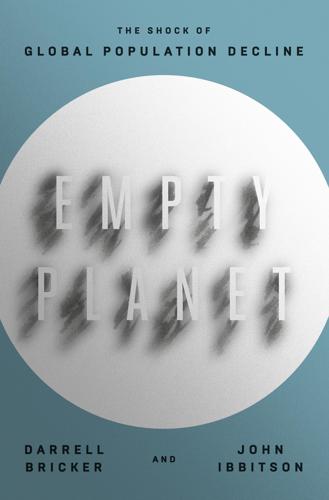
Empty Planet: The Shock of Global Population Decline
by
Darrell Bricker
and
John Ibbitson
Published 5 Feb 2019
A Deutsche Bank report, for example, has the planetary population peaking at 8.7 billion in 2055 and then declining to 8 billion by century’s end.84 So who is right: the demographers at the UN or their critics in Europe and elsewhere? One way to begin to answer that question is to look around the world to see at what stage of the demographic transition various countries and regions of the world find themselves. When the Demographic Transition Model was first developed, back in 1929, it contained only four stages. Stage Four, the final stage, envisioned a world in which life expectancy was high and the fertility rate was low, around the level needed to sustain the population: 2.1 babies per mother.
…
Title: Empty planet: the shock of global population decline / Darrell Bricker and John Ibbitson. Description: New York: Crown Publishers, 2019 | Includes bibliographical references and index. Identifiers: LCCN 2018029016 (print) | LCCN 2018031644 (ebook) | ISBN 9781984823236 (ebook) | ISBN 9781984823212 (hardcover) | ISBN 9781984823229 (pbk.) Subjects: LCSH: Demographic transition. | Population—Social aspects. | Population—Economic aspects. Classification: LCC HB887 (ebook) | LCC HB887 .B75 2019 (print) | DDC 304.6/2—dc23 LC record available at https://lccn.loc.gov/2018029016. ISBN 9781984823212 Ebook ISBN 9781984823236 Cover design by Taylor Boudreaux v5.3.2 prh To Nina and Emily.
…
Pestilence, famine, and war combined to keep the human population in check throughout the middle centuries of the last millennium. If there were, perhaps, four hundred million people on earth in 1300, there were not many more than six hundred million in 1700.27 The world was locked in Stage One of the Demographic Transition Model, developed in 1929 by the American demographer Warren Thompson. In Stage One, which encompassed all of humanity from the dawn of the species until the eighteenth century, both birth rates and death rates are high, and population growth is slow and fluctuating. Hunger and disease are part of the problem: in medieval Europe, a typical Stage One society, about one third of all children died before the age of five, and if you did manage to grow up, chronic malnutrition meant that disease would probably carry you off in your fifties.
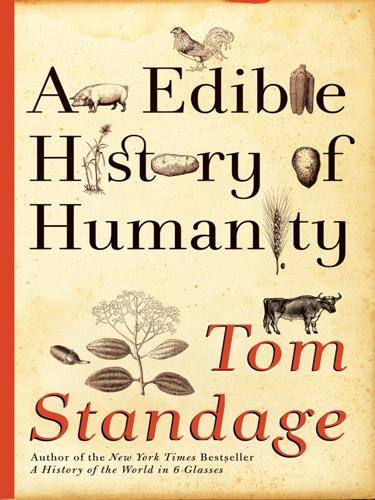
An Edible History of Humanity
by
Tom Standage
Published 30 Jun 2009
In some European countries the fertility rate (the average number of births per woman) has now fallen below the replacement rate. Most developing countries, meanwhile, are now in the midst of their demographic transition. Of course, the reality is more complicated than this simple model suggests, due to other factors such as the effects of migration, the impact of HIV/AIDS in Africa, and China’s one-child policy, introduced in 1980. But having initially sustained a population boom, the green revolution is now tipping many countries, and consequently the world as a whole, into demographic transition. According to forecasts published by the United Nations in 2007, the world population is expected to reach eight billion around 2025, and to peak at 9.2 billion in 2075, after which it will decline.
…
Research carried out in the village of Manupur, in the Indian Punjab, illustrates how the demographic transition has manifested itself on the ground. In 1970, men in the village all said that they wanted as many sons as possible. But when researchers returned to the village in 1982, following the introduction of green-revolution crops, fewer than 20 percent of men said that they wanted three or more sons, and contraceptives were being widely used. “These rapid changes in family size preference and contraceptive practice are indications that the demographic transition will continue, if not accelerate, in rural areas experiencing the green revolution,” the researchers concluded.
…
A burgeoning population creates incentives to find new ways to increase the food supply; but greater availability of food also means that women are more fertile, and children are healthier and more likely to survive. So there is no simple answer. But history clearly shows that in cases where the greater availability of food enables a country to industrialize, there is a population boom, followed by a fall in the population-growth rate as people become wealthier—a phenomenon called “demographic transition.” In a preindustrial society, it makes sense to have as many children as possible. Many of them will not survive, due to disease or malnutrition. But once those that do survive are old enough to work in the fields, they can produce more food than they consume, so the household will benefit overall (provided that availability of labor is the main constraint on agricultural production).
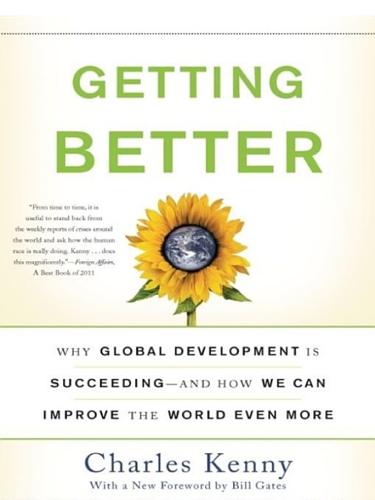
Getting Better: Why Global Development Is Succeeding--And How We Can Improve the World Even More
by
Charles Kenny
Published 31 Jan 2011
The final escape from the Malthusian trap in the UK involved moving from a stagnant economy accompanied by cycling population growth to comparatively rapid output expansion (GDP growth) accompanied by declining birthrates, improved health, and a growing population.3 The exact nature of the relationship between rising incomes, declining fertility, and improved health in the nineteenth century in the UK is debated—all three changed at the same time, so it’s difficult to see what caused what. Nonetheless, Michael Bar and Oksana Leukhina, economists at San Francisco State and Chapel Hill, respectively, suggest that growing incomes were not the cause of the demographic transition to low mortality and low birthrates. Instead, public and private health technologies (for example, sewers and toilets), knowledge, and ideas (hand washing and the Victorian cult of cleanliness) may have played a larger role in mortality decline. Meanwhile, declining birthrates were the result of more children surviving to adulthood.
…
Interviews with poor people worldwide suggest that more than anything else, they dread serious illness within the family as something that can push a household into inescapable poverty, according to Deepa Narayan of the World Bank. So anything that can reduce the extent of accidents and disease not only has significant quality-of-life benefits but also reduces the risk of immiserating illness. Again, reducing child mortality reduces birthrates, in turn fostering a demographic transition toward more adults per child in the population. This has been linked to better economic performance over the medium term.4 Similarly, an agenda focused on rights may help long-term growth performance. The importance of institutions does not translate into a straightforward policy reform agenda, and it may not be clear in a particular case that more or less government is a growth-promoting answer.
…
“The Economic Lives of the Poor.” MIT Department of Economics Working Paper 06–29. Banerjee, A., et al. 2006. “Can Information Campaigns Spark Local Participation and Improve Outcomes? A Study of Primary Education in Uttar Pradesh, India.” World Bank Policy Research Working Paper 3967. Bar, M., and O. Leukhina. 2006. “Demographic Transition and Industrial Revolution: A Coincidence?” Society for Economic Dynamics 2006 Meeting Paper No. 383. Barro, R., and R. McCleary. 2003. “Religion and Economic Growth.” NBER Working Paper No. 9682. Behbehani, A. 1983. “The Smallpox Story: Life and Death of an Old Disease.” Microbiological Reviews 47, no. 4.

Whiteshift: Populism, Immigration and the Future of White Majorities
by
Eric Kaufmann
Published 24 Oct 2018
Now 7.5 billion of us share the planet. The West was the first to go through its demographic transition from high birth and death rates to low birth and death rates. East Asia soon followed, and now much of the rest of the world apart from a few spots in Central Africa and West Asia is following suit. During a demographic transition, death rates fall first and there is a lag period when birth rates are temporarily higher than death rates, producing a population explosion. However, the historic demographic transition in Europe and its settler offshoots was different to that now taking place in the global South.
…
Its transition will have produced a population expansion five times that of Denmark. Multiplied across many countries, this explains why the West’s share of world population dropped so rapidly after 1950.20 The demographic transition is important for politics because it unfolds at different times between world regions, between nations and even between ethnic groups within nations. In Northern Ireland, for instance, Protestants entered the demographic transition sixty to eighty years before Catholics. That meant Catholic birth rates were higher than Protestant ones for decades, which is why the Catholic share of Northern Ireland increased from 35 per cent in 1965 to close to 50 per cent today.
…
Since voting in Northern Ireland largely takes place on ethnic lines, this had serious political ramifications, which played a part in the violence which gripped the province between 1969 and 1994.21 In other words, it is the unevenness of the demographic transition between groups which carries political implications.22 Now let’s zoom out to the global level. The number of children a woman bears over her lifetime is called the total fertility rate (TFR). Countries in figure 1.1 are shaded by TFR. Ninety-seven per cent of global population growth takes place in a tropical belt from Central America through Africa and into West Asia, where TFR is well above the 2.1 level needed to replace the population. Some sixty-five countries are still early in their demographic transition with the average woman expected to bear between 3.5 and 7 children over her lifetime.
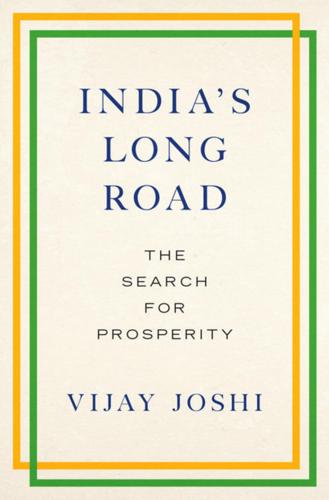
India's Long Road
by
Vijay Joshi
Published 21 Feb 2017
But many obstacles to the growth of labour-intensive activities still remain, including strong disincentives to the use of low-skilled labour in both manufacturing and services.19 DEMOGRAPHIC TRANSITION: DIVIDEND OR DISASTER? The employment scenario described above is distinctly unattractive but it promises to become even more so in future. To make the point, some explanation is necessary of the ‘demographic transition’ that India is going through. The ‘transition’ arises from the fact that mortality and fertility rates in the population do not change at the same pace. When economic development begins, child mortality rates fall rapidly in response to improvements in public health.
…
The decline in the real rate of return on saving to negative levels reduced the incentive to save in the form of financial assets and diverted savings towards holding gold instead. (This is an example of the close connection between growth and macroeconomic stability.) Given the expected favourable effects of the demographic transition on savings, it should be possible to restore a high level of the household saving rate, and then increase it further, provided inflation is maintained at a moderate level of around 5 cent a year and financial sector reform continues to improve the efficiency of intermediation. Experience has shown that to avoid capital account crises, the current account deficit should not average more than about 2 per cent of GDP.
…
Here, I ignore land as a factor of production. However, it is included in the empirical estimates of the sources of growth reported below. 3. This is true as a matter of arithmetic provided the labour force participation rate does not fall and the unemployment rate does not increase. But the demographic transition also has favourable effects on growth for more substantive reasons such as its positive effect on the rate of saving in the economy. Note, however, that the demographic ‘bonus’ will be reaped only if the growing labour force is productively employed (see below). The demographic bonus is examined more closely in Chapter 5. 4.

The Big Sort: Why the Clustering of Like-Minded America Is Tearing Us Apart
by
Bill Bishop
and
Robert G. Cushing
Published 6 May 2008
A1. 21. Sarah Schweitzer, "Like Recycling? Cooking? Then Welcome Home," Boston Globe, September 3, 2006. 22. Ron Lesthaeghe and Lisa Neidert, "The Political Significance of the 'Second Demographic Transition' in the US: A Spatial Analysis" (paper prepared for the annual meeting of the Population Association of America, March 28–30, 2007). See also Ron Lesthaeghe and Lisa Neidert, "The Second Demographic Transition in the United States: Exception or Textbook Example?" Population and Development Review 32, no. 4 (December 2006): 669–98. 23. Émile Durkheim, Selected Writings, ed. Anthony Giddens (Cambridge: Cambridge University Press, 1972), pp. 142–44. 24.
…
Lazarsfeld, Paul, Bernard Berelson, and William McPhee. Voting A Study of Opinion Formation in a Presidential Campaign. Chicago. University of Chicago Press, 1954. Lesthaeghe, Ron, and Lisa Neidert. "The Political Significance of the 'Second Demographic Transition' in the US: A Spatial Analysis." Paper prepared for the annual meeting of the Population Association of America, March 28–30, 2007. ———. "The Second Demographic Transition in the United States: Exception or Textbook Example?" Population and Development Review 32, no. 4 (December 2006): 669–98. Lindsey, Hal. The Late Great Planet Earth. Grand Rapids, MI. Zondervan, 1970. Lipset, Seymour Martin, and William Schneider.
…
[back] *** * Lesthaeghe and those working in this field called the change in families that took place as the economy switched from farms to factories in the late nineteenth and early twentieth centuries the "first demographic transition." The change he saw beginning in the 1960s was tied to the gradual decline of industry and the rise of service employment Lesthaeghe called this the "second demographic transition." The change was gradual, of course, but it is interesting that in the unraveling year of 1965, the New York Times announced in a front-page story that the "shift in the nation's employment from goods manufacturing to services has become so pronounced that it is no longer correct to call the United States economy an 'industrial economy.'

The God Species: Saving the Planet in the Age of Humans
by
Mark Lynas
Published 3 Oct 2011
Second, the amount of land space taken up by cities is actually relatively small compared with the number of people they shelter: Satellite image composites show that urban sites cover only 2.8 percent of the Earth’s land; accordingly the UN estimates that about 3.3 billion people occupy an area less than half the size of Australia.65 Imagine all these people forced to fan out into the countryside in some kind of Khmer Rouge-style Year Zero experiment: The result would be a global ecological disaster. This gainsays conventional environmental wisdom in several ways. Clearly, the best strategy to curb future population growth is to speed up the “demographic transition” in developing countries—and this transition toward women having fewer babies is inextricably linked both with increasing levels of prosperity and with urbanization. Therefore rising rates of economic growth and the expansion of cities are good news for the environment because—more than anything else—they will restrain the future growth in human population.
…
Urbanization is good for sustainability because it reduces population growth and concentrates the overall human impact on the land in a smaller area. Handled properly, migration away from rural areas and into cities offers a huge opportunity for ecosystem protection and restoration. Our best hope for meeting the land use planetary boundary is therefore to encourage the trends toward rising prosperity and demographic transition in developing countries, in order to allow their forests and other important natural habitats to survive and regrow. Given the choice, most people around the world already find city life more attractive and varied than that in the countryside. Forget the “back to the land” self-indulgence of some disgruntled people in rich countries.
…
For a start, it only follows that population reductions lead to emissions reductions if the factors affecting birth and death rates are themselves independent of economics. In the real world, the best way to reduce the growth in human populations is to encourage faster economic development, accelerated urbanization, and therefore an earlier demographic transition to the lower birth rates already experienced in the most affluent societies. But faster economic growth will mean higher use of energy and more emissions, everything else remaining equal. One way around this is to accept that population control must be authoritarian, as the environmentalist Jonathon Porritt appears to do in writing approvingly about China’s one-child policy, which he calls “the biggest single CO2 abatement achievement since Kyoto.”6 Population enthusiasts like Porritt also tend to ignore the fact that the biggest driver of increasing human numbers has been better life expectancies thanks to economic progress and modern medical science.

Billions & Billions: Thoughts on Life and Death at the Brink of the Millennium
by
Carl Sagan
Published 11 May 1998
In little countries and big countries, capitalist countries and communist countries, Catholic countries and Moslem countries, Western countries and Eastern countries—in almost all these cases, exponential population growth slows down or stops when grirfcling poverty disappears. This is called the demographic transition. It is in the urgent long-term interest of the human species that every place on Earth achieves this demographic transition. This is why helping other countries to become self-sufficient is not only elementary human decency, but is also in the self-interest of those richer nations able to help. One of the central issues in the world population crisis is poverty. The exceptions to the demographic transition are interesting. Some nations with high per capita incomes still have high birthrates.
…
But few believe the Earth can support so many people. Because of the power of this exponential increase, dealing with global poverty now will be much cheaper and much more humane, it seems, than whatever solutions will be available to us many decades hence. Our job is to bring about a worldwide demographic transition and flatten out that exponential curve—by eliminating grinding poverty, making safe and effective birth control methods widely available, and extending real political power (executive, legislative, judicial, military, and in institutions influencing public opinion) to women. If we fail, some other process, less under our control, will do it for us.

Capital in the Twenty-First Century
by
Thomas Piketty
Published 10 Mar 2014
The system established in the 1790s for recording wealth in land, buildings, and financial assets was astonishingly modern and comprehensive for its time. The Revolution is the reason why French estate records are probably the richest in the world over the long run. My second reason is that because France was the first country to experience the demographic transition, it is in some respects a good place to observe what awaits the rest of the planet. Although the country’s population has increased over the past two centuries, the rate of increase has been relatively low. The population of the country was roughly 30 million at the time of the Revolution, and it is slightly more than 60 million today.
…
Europe (including its American offshoot) experienced its most rapid demographic growth between 1700 and 1913, only to see the process reverse in the twentieth century: the rate of growth of the European population fell by half, to 0.4 percent, in the period 1913–2012, compared with 0.8 percent between 1820 and 1913. Here we see the phenomenon known as the demographic transition: the continual increase in life expectancy is no longer enough to compensate for the falling birth rate, and the pace of population growth slowly reverts to a lower level. In Asia and Africa, however, the birth rate remained high far longer than in Europe, so that demographic growth in the twentieth century reached vertiginous heights: 1.5–2 percent per year, which translates into a fivefold or more increase in the population over the course of a century.
…
Between 1970 and 1990, global population was still growing 1.8 percent annually, almost as high as the absolute historical record of 1.9 percent achieved in the period 1950–1970. For the period 1990–2012, the average rate is still 1.3 percent, which is extremely high.3 According to official forecasts, progress toward the demographic transition at the global level should now accelerate, leading to eventual stabilization of the planet’s population. According to a UN forecast, the demographic growth rate should fall to 0.4 percent by the 2030s and settle around 0.1 percent in the 2070s. If this forecast is correct, the world will return to the very low-growth regime of the years before 1700.
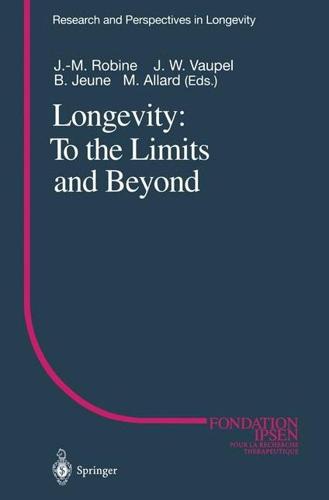
Longevity: To the Limits and Beyond (Research and Perspectives in Longevity)
by
Jean-Marie Robine
,
James W. Vaupel
,
Bernard Jeune
and
Michel Allard
Published 2 Jan 1997
Towards a New Horizon in Demographic Trends: The Combined Effects of 150 Years Life Expectancy and New Fertility Models ]. Vallin', G. Caselli*' The hypothesis of a widespread and conclusive stabilization of the world's population, the focus of recent United Nations' forecasts, is obviously mer-ely a reference model - the demographic transition. It is fairly plausible that initially populations will tend to follow this model. However, on the one hand, this is by no means certain and, on the other hand, it is unlikely that after this "transition" things will continue as before. Regarding the first point, the United Nations' forecasts comprise, on both sides of the average hypothesis, "low" and "high" hypotheses whose difference with the former lies in the level to which fertility would tend, with mortality remaining unchanged (United Nations 1995).
…
We will examine, in the next two parts of our work, the consequences they would entail in the far future of the world's population, in terms of global size as well as of age structure. Thinking out New Fertility and Mortality Evolutions As early as 1966, during the 1st European Demographic Conference convened by the Council of Europe even before the prospect of a generalization of the demographic transition became plausible enough to be adopted as the central hypothesis of the UN forecasts, Jean Bourgeois-Pichat assumed that progress in the field of biology would some time or other bring about new schemes of demographic behaviours. Not only would increased longevity - becoming a factor of the population's aging - compel future societies to reconsider the distribution of the economic and social roles played by the different age cohorts, but also delaying menopause would make it possible for women to spread the constitution of their descent over time.
…
J Embryol Exp Morphol 76:283-296 Subject index E A ACE 132,133 ACE/DD 133 Age structure 7, 45, 57, 59 Ag(e)ing 131, 133, 134, 136, 140, 142, 144, 149, 151, 155, 165, 175 Ag( eling process 70, 73, 75, 109, 110, 113, 114, Education 92, 96 Elderly 92 Entropy 2,8 Environment 151, 165 Environmental factor 135, 175 Environmental risk 73, 123 115, 131, 137, 140 Alcohol consumption 100 Alzheimer's disease 107, 173, 174 Antioxidant 70, 74, 75 Antioxidant defense 139, 140, 142, 144, 149, 150, 151 Antioxidant enzyme 70, 139, 149, 150 ApoE 132 F Fertility 29, 30, 43, 44, 51 Fertility model 31, 32 Fertility rate 32-36 Forecasts 30, 43 Frailty 123 B G Birth rate 53, 54, 55 Gene 134, 157 Genetic componant 156 Genetic control 155 Genetic endowment 121, 124 Genetic factor 69, 123, 124, 132 Genetic structure 131 Genetic variant 156 Genome 131, 137, 156, 158, 165 Genotype 151, 157, 165, 175 Gerontogene 155, 156, 158, 159, 161 C Cause of death 36 Extrinsic 12, 13, 23, 24, 38 Intrinsic 12, 13, 23, 24, 38 Cellular senescence 134 Cell number 165, 166, 167, 175, 176 Census 95 Centenarian 19, 20, 77, 83, 92 Cognitive function 106 Compensatory adaptation 131, 135, 136 Compression of morbidity 110 D Data quality 92, 93, 103 Death rate 1, 3, 5, 8, 11, 15, 19, 22, 53, 54, 55, 92 Dementia 106-109 Demographic transition 29 Disease 107 DNA repair 70, 71 H Health status 91, 92, 101, 102, 103 Heritability 72, 121, 122 I Infant mortality 125, 126 180 Subject Index L Q Life duration 125, 127, 128 Life expectancy 3, 7, 8, 22, 26, 36, 38, 39, 42, 43, Quality oflife 109, 117 51, 54, 55, 69, 79, 80, 126, 176 Lifespan 69, 73, 74, 103, 132, 140, 144, 146, 150, 156, 158, 159, 161, 165, 166 Life table 1, 6 Longevity 1, 13, 25, 116, 117, 118, 131, 132, 137, 156, 158 M Maintenance process 70 Maintenance system, 72, 74 Marital status 99 Mobility 102, 103 Morbidity 38, 170 Mortality 1, 2, 5, 11, 13, 16, 22, 25, 26, 29, 30, 43, 51, 78, 80, 125, 170 Mutation 159, 161 N Naming latency 114, 115 Natural selection 70 Neuron 172-176 Non-genetic factor 165 Nutrition 75 R Reactive Oxygen Species (ROS) 139, 140, 141, 143, 144, 149, 151 Repair system 72, Repair process 139, 140, 142 Risk Factor 170 Robustness 121 S Selection 121, 134 Natural selection 123, 131, 136 Selection forces 122 Senescence 70, 145, 165 Sex disparities 108 Sex distribution 96, 98 Sex ratio 81 Somatic damage 71, 72 Smoking 100 Stress response 70, 75 Successful aging 113, 115, 116, 117 Survival 2, 4, 5, 19, 26, 131 Survival curve 39, 127 Rectangularization of survival curve 6, 39 Derectangularization of survival curve 40-42 o Occupation 97 Oldest old 12, 15, 21, 23, 77 Only child 31 Oocyte 165, 167, 169, 170, 176 Organogenesis 165 -167 Oxidative stress 141, 144, 149, 151 Oxidative damage 73, 139, 140, 142, 143, 149, 151 p Parental age 123 -127 Phenotype 157 Physical ability 107 Predictor 116, 118 Projection 11, 139, 140, 151 Pro oxidant production 139, 140, 151 V Vulnerability 134-137

Does Capitalism Have a Future?
by
Immanuel Wallerstein
,
Randall Collins
,
Michael Mann
,
Georgi Derluguian
,
Craig Calhoun
,
Stephen Hoye
and
Audible Studios
Published 15 Nov 2013
The Soviet managers needed labor to accomplish the plan assignments, and workers could in effect bargain for better conditions or seek them elsewhere in the specially supplied Moscow or in the generously paying industries of Siberia. Yet by far the biggest structural reason giving more power to Soviet workers was demographic transition. The villages of central Russia now stood drained of manpower. By default, this situation significantly increased the social power of women. In the meantime towns, industrial employment, and education irreversibly changed their lifestyles, and birthrates plummeted in merely a generation. The shortage of labor was historically unprecedented in Russia.
…
Things would change, however, in the 1960s with the arrival of energetic student activists and dissidents in the intelligentsia spreading organizational techniques along with the ideologies and singable slogans of rebellion against “the System.” The antisystemic movements of the New Left gained traction wherever they could tap (often without fully realizing it) into latent social tensions generated by conjunctures of many factors: industrial recessions, demographic transitions, the changing social geography of urban neighborhoods, repressed ethnic memories, even the sectarian religious fervors or the regional elite factionalisms previously marginalized by modernistic planners of new towns, industries, and states. Profoundly changing the historical pattern of revolutions, these anti-authority rebellions were diffuse, nonviolent in their preferred tactics, and centered on the demands for greater autonomy from bureaucratic regimentation and recognition for the many and greatly varied status groups that were now called identity politics.
…
Lest we forget, villages provided intimate coziness and shelter that meant, by extension, intrusive supervision and the social caging of individuals. The protective inertia of traditions, the inequalities of age and sex inscribed in the patriarchal households, the denigrating and violently vengeful attitudes toward strangers and outsiders were part and parcel of village life, too. The modern history of mass migrations, demographic transitions, and the creation of new political communities brought enormous costs and traumas. The overseas emigration of European settlers helped to improve the ratio of demographics to resources at the cost of the displacement, enslavement, and downright extermination of the indigenous peoples in the colonies who lacked guns and immunity to the germs brought by the invaders.
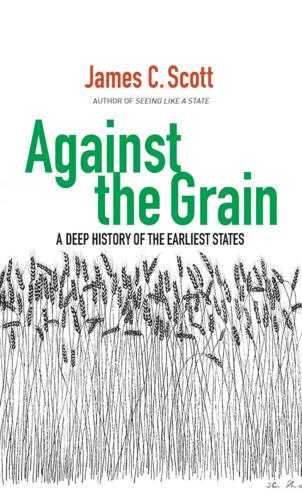
Against the Grain: A Deep History of the Earliest States
by
James C. Scott
Published 21 Aug 2017
Blinman, Eric. “2000 Years of Cultural Adaptation to Climate Change in the Southwestern United States.” AMBO: A Journal of the Human Environment 37, sp. 14 (2000): 489–497. Bocquet-Appel, Jean-Pierre. “Paleoanthropological Traces of a Neolithic Demographic Transition.” Current Anthropology 43, no. 4 (2002): 637–650. ———. “The Agricultural Demographic Transition (ADT) During and After the Agricultural Inventions.” Current Anthropology 52, no. S4 (2011): 497–510. Boone, James L. “Subsistence Strategies and Early Human Population History: An Evolutionary Perspective.” World Archaeology 34, no. 1 (2002): 6–25.
…
The dominant explanation until fairly recently was what might be called the “backs-to-the-wall” theory of plough agriculture associated with the great Danish economist Ester Boserup.5 Starting from the unassailable premise that plough cultivation typically required far more work for the calories it returned than did hunting and gathering, she reasoned that full cultivation was taken up not as an opportunity but as a last resort when no other alternative was possible. Some combination of population growth, the decline in wild protein to hunt and nutritious wild flora to gather, or coercion, must have forced people, reluctantly, to work harder to extract more calories from the land they had access to. This demographic transition to drudgery has been read by many as metaphorically captured in the biblical tale of Adam and Eve being expelled from Eden to a world of toil. Despite its apparent economic logic, the backs-to-the-wall thesis, at least in Mesopotamia and the Fertile Crescent, fails to match the available evidence.

How Did We Get Into This Mess?: Politics, Equality, Nature
by
George Monbiot
Published 14 Apr 2016
In the history of most countries which acquire access to modern medical technology, there is a period during which the rates of contraception and abortion rise simultaneously. Christian fundamentalists suggest that the two trends are related, and attribute them to what Pope Benedict XVI calls ‘a secularist and relativist mentality’.4 In fact it’s a sign of demographic transition. As societies become more prosperous and women acquire better opportunities, they seek smaller families. During the early years of transition, contraceptives are often hard to obtain and poorly understood, so women will also use abortion to limit the number of children they have. But, as a study published in the journal International Family Planning Perspectives shows, once the birth rate has stabilised, the use of contraceptives continues to increase and the rate of abortion falls.
…
But as the super-wealthy grab an ever greater share and resources begin to run dry, this, for most of the very poor, is a diminishing prospect. There are strong social reasons for helping people to manage their reproduction, but weak environmental reasons, except among wealthier populations. The Optimum Population Trust glosses over the fact that the world is going through demographic transition: population growth rates are slowing down almost everywhere and the number of people is likely, according to a paper in Nature, to peak this century,6 probably at around 10 billion.7 Most of the growth will take place among those who consume almost nothing. But no one anticipates a consumption transition.
…
See also drug consumption; global consumption; pathological consumption; pointless consumption assault on the biosphere by consumption machine, 101 as associated with prosperity and happiness, 206 diminishing satisfactions of, 100 of fossil fuels, 87, 153, 204 of paper, 177 rise of, 107, 200 contraception, 73, 74, 75 Coors, Adolph, 16, 219 corporate lobbyists, 26 corporate power appeasing of, 281 media as instrument of, 212 neoliberal think thanks and, 213 politics as operated by, 23 promotion of, 4 Corporation of the City of London, 192 corporation tax, 281 Costa, Antonio Maria, 32, 34, 35 Cotton, Charles, 137 council tax, 282 counter-cultural association, 33 counter life, 24 Cowie, Ian, 216 crime, rise and fall of violent crime, 160–3 Crime and Disorder Act (1998), 28, 70 criminal responsibility, age of, 69 Crompton, Tom, 285, 287 cross compliance, 125 Crow, Bob, 267 Cú Chulainn, 90 cultural diversity, loss of, 97 Curran, Kevin, 267 D Daily Mail, 214, 215, 235, 267, 284 Daily Telegraph, 198, 214, 216, 275 Darling, Alistair, 150 Darwin, Charles, 3, 234 Davey, Ed, 156 Davies, Nick, 33 Dearlove, Richard, 242 Deepwater Horizon disaster, 201 Defending the Dream Summit (2009), 211 dehumanisation, 235 dematerialisation, 177 Democracy Centre, 252 Democrats, in US, 56, 220 demographic transition, 73, 106 Department for Environment, Food and Rural Affairs (Defra), 125, 126, 127, 129 depression, rise in, 17 deregulation, 15, 186, 205, 218, 219 Der Lebensraum (Ratzel), 234 Deutsche Bank, 195 dimethyl sulphide, 85 dispersal orders, 30, 70 dispersal powers, 29 Dissertation on the Poor Laws (Townsend), 180 divorce, 60 domestic extremism/domestic extremist, 258, 260, 261 dominant ideology, 3 dominant narratives, 14–15 Drax (England), 172 dredging, 136 drone strikes, 53–7, 255, 256 drug addiction, 33, 35 drug consumption, 34 drugs, legalisation and regulation of, 33–4 drugs policy, 32, 33 drug use as elective, 33 prohibition vs. legalisation of, 35–6 due process, 255, 256 E Eagle, Angela, 149 early boarding, 64–6 Earth First!

Countdown: Our Last, Best Hope for a Future on Earth?
by
Alan Weisman
Published 23 Sep 2013
“The twentieth century would have been really ugly—uglier than it was—if we hadn’t done that. Admittedly, we now need a second Green Revolution, one that’s much greener. But by avoiding catastrophic food shortages and the Malthusian crisis we’re now headed towards, the Green Revolution allowed us to humanely go through the demographic transition.” The demographic transition—a country’s passage from high birth and death rates to low—is considered both an indicator and a result of becoming developed. “Imagine if we’d had a world armed with nuclear weapons and billions of starving people. That’s a powder keg that we avoided.” Yet another University of Minnesota scientist, Green Revolution founder Norman Borlaug, warned that we’d really avoided nothing: we’d merely postponed the inevitable population crush.
…
Whether technology can meet such human psychological needs remains to be seen, but something has to deal with the larger demographic dilemma that Riba II was invented to help solve. Western Europe is watching closely to see what will happen here, because Japan is the first to reach the end of its demographic transition—when high mortality and high birthrates both turn to low. Japan’s first shrunken generation—born in the late forties and early fifties, when Japanese severely curtailed their reproduction—is now entering retirement, and members of the generation before them are entering their final years.
…
Couples of my own species were also present, along with young mothers pushing strollers on the paths beneath weeping willows. So much of this planet was still as beautiful as I always remembered it, and I hoped that Cizik was right about another thing he’d said: that the Scriptures don’t predict a world that burns up and disappears, but a refined, purified Earth. The demographic transition is a reality: among the fruits of development are longevity and a reduced need for parents to make extra copies of themselves, in hopes that at least some survive. Except in poorest Africa or south Asia, or in enclaves of religious extremism such as in the Philippines, Afghanistan, and haredi Israel, the momentum of our increase has declined.

What Technology Wants
by
Kevin Kelly
Published 14 Jul 2010
Three United Nations scenarios (high, medium, low) for world population in the next 300 years, from 2000 to 2300, in billions. What’s going on here? As countries become developed, their fertility rates drop. This drop-off has happened in every modernizing country, and this universal decrease in fertility rates is known as the “demographic transition.” The problem is that the demographic transition has no bottom. In developed countries the fertility rate keeps dropping. And dropping. Look at Europe (chart on the next page) or Japan. Their fertility rates are headed to zero. (Not zero population growth, which they long ago sank past, but zero population.) In fact, most countries, even developing countries, see their fertility rates dropping.
…
clocks clothing cloud computing coal power coevolution Cole, John Colonial America compass, magnetic complex adaptive systems complexity future scenarios of as long-term trend specialization and computer chips transistors in see also Moore’s Law computers digital storage in DNA increased software complexity of invention of multiple functions of obsolete specialty computer simulations computer viruses contingency choices in in convergent inventions convergence see also inventions, convergence of “Convergent Evolution” (McGhee) conviviality Conway, John Cooke, William corals Bryozoa cornets Correns, Karl Erich crafts Crichton, Michael Cro-Magnons, see Sapiens crossbows cryptochromes customization, personal Daguerre, Louis Darwin, Charles Davies, Paul Davis, Mike Dawkins, Richard DDT Dean, Bashford decentralization de Duve, Christian deforestation demographic transition Dennett, Daniel Denton, Michael desert environments de Vries, Hugo Diamond, Jared Didion, Joan dinosaurs convergent lineages of diversity cultural differences in of ethnic and social preferences excessive choices offered by fringe of intelligence as long-term trend uniformity in DNA invented alternatives to mutation rate in mysterious origins of self-organization of synthesis of DNA sequencing Dobe tribe dolphins intelligence of domestication animal crop independent inventions of double-entry bookkeeping du Chaillu, Paul Dunn, Mark Dyson, Freeman Earth First!
…
matter and nuclear production of requirements for sustainable Engelbart, Doug England entropy environmental issues atmospheric carbon dams deforestation Precautionary Principle and environments niche Europe fertility rates in feudalism in European Union evocative objects evolution accumulated genetic information in adaptation in anachronisms in archetypal forms in beauty in Cambrian explosion in chlorophyll and codiscoverers of coevolution in combinatorial common ancestors in contingency in convergence in of cornets “could be” life forms in current scientific understanding of DNA and exaptations in exotropy in experimental re-creation of of eyes of helmets historical vs. ahistorical forces in homologous incremental inevitability in natural selection in nonrandom variations in on other planets physical constraints on of proteins randomness and rerunning tape of specialization in of teeth transition sequence in triadic nature of vertical evolution, human acceleration of brain in coevolution with cooking in cultural cultural devolution and tool use in evolvability as long-term trend exaptations exotropy definition of dematerialization in entropy vs. in evolution information as metaphor of self-organization in trends of extinctions of megafauna of Neanderthals rate of eyes rhodopsin in retina of Farnsworth, Philo Ferguson, Niall fertility rates demographic transition of in Europe of hunter-gatherers in Japan replacement rate of feudalism Finite and Infinite Games (Carse) Finn, Bernard fire Fish Creek tribe Fisher, Richard flight convergent evolution of flapping-wing speed trend curve of flint knappers flint knives Florence, Hercules Flores Island hominids Florida, Richard food production Ford, Henry four-factor formula fractal patterns France Frank’s Life (Dunn) freedom civilization and latitude vs.

Water: A Biography
by
Giulio Boccaletti
Published 13 Sep 2021
Politics and Justice in Late Medieval Bologna. Leiden: Brill, 2010. Bocquet-Appel, Jean-Pierre. “The Agricultural Demographic Transition During and After the Agriculture Inventions.” Current Anthropology 52 (October 2011): S497—S510. Bogart, Dan. “Did the Glorious Revolution Contribute to the Transport Revolution? Evidence from Investment in Roads and Rivers.” Economic History Review 64 (July 2011): 1073–1112. Bongaarts, John. “Human Population Growth and the Demographic Transition.” Philosophical Transactions of the Royal Society B Biological Sciences 364 (October 2009): 2985–90. Bookhagen, Bodo, and D.
…
The first step in that transition: Snir et al., “The Origin of Cultivation.” In north China, for example, millet: Jia et al., “The Development of Agriculture.” The journey of modern man had begun: Lev-Yadun et al., “The Cradle of Agriculture.” The sedentary population grew: Bocquet-Appel, “The Agricultural Demographic Transition.” Eventually, larger, walled centers: Wilkinson et al., “Settlement Archaeology in Mesopotamia.” Transport of cereals was limited: Widell et al., “Land Use of the Model Communities.” Productive wetlands or estuaries could not form: Kennett and Kennett, “Early State Formation in Southern Mesopotamia.”
…
“this project will be more profitable”: Sun, The International Development of China, 33. 13 Setting the Stage for Revolution By 1900, it was a free-trade zone: “General Act of the Conference of Berlin Concerning the Congo.” human population had grown: Kremer, “Population Growth and Technological Change.” Indeed, by 2000, over six billion people: Bongaarts, “Human Population Growth and the Demographic Transition.” But to satisfy the demands of mass consumption: Smil, Energy and Civilization. The two decades leading up to the First World War: Wimmer and Min, “From Empire to Nation-State.” So, in 1902, British engineers: Robinson et al., “The High Dam at Aswan,” 237. Then, in 1910, Murdoch MacDonald: Hurst, “Progress in the Study of the Hydrology of the Nile in the Last Twenty Years.”

On the Future: Prospects for Humanity
by
Martin J. Rees
Published 14 Oct 2018
Population trends beyond 2050 are harder to predict. They will depend on what today’s young people, and those as yet unborn, will decide about the number and spacing of their children. Enhanced education and empowerment of women—surely a priority in itself—could reduce fertility rates where they’re now highest. But this demographic transition hasn’t yet reached parts of India and sub-Saharan Africa. The mean number of births per woman in some parts of Africa—Niger, or rural Ethiopia, for instance—is still more than seven. Although fertility is likely to decrease, it is possible, according to the United Nations, that Africa’s population could double again to four billion between 2050 and 2100, thereby raising the global population to eleven billion.
…
See also big bang Coursera, 98 creationism, 195, 196 Crick, Francis, 204–5 CRISPR/Cas9, 66–67, 73–74 Crutzen, Paul, 31 cryonics, 81–82 Cuba, environmental plan of, 45 Cuban missile crisis, 17–18, 20 Curiosity rover, 127–28, 143 cyberattack, threat of, 20–21, 94–95 cybertech, benefits and vulnerabilities of, 5, 6–7, 63, 109–10 cyborg technologies, 7, 151 dark matter, 179 Dartnell, Lewis, 217 Darwin, Charles, 121–22, 175, 194, 195, 196, 214. See also evolution Dasgupta, Partha, 34 death: assisted dying, 70–71; organ transplants and, 71 Deep Blue, 86 DeepMind, 86–87, 106 demographic transition, 30 Dengue virus, 74 designer babies, 68–69 Deutsch, David, 192 developing countries: clean energy for, 48–49, 51; effective redeployment of existing resources for, 224; genetically modified (GM) crops and, 66; impact of information technology on, 83–84; megacities of, 22, 29, 77, 109; need for good governance in, 28–29; need to bypass high-consumption stage, 27, 36; population trends in, 30–31.

Origin Story: A Big History of Everything
by
David Christian
Published 21 May 2018
dark energy: Energy whose nature and source is not yet understood but which may account for the accelerating expansion of the universe and for perhaps 70 percent of the mass of the universe. dark matter: Matter whose gravitational effects are detectable but whose exact source and form is not yet understood; accounts for perhaps 25 percent of the mass of the universe. demographic transition: In modern times, declining mortality drove population growth, but increasing urbanization eventually drove down fertility rates, so population growth is slowing today; the demographic transition has transformed the attitudes to families and gender roles that were dominant in most peasant societies. differentiation: The process by which the early Earth heated up, melted, and was sorted into layers of decreasing density, among them the core, the mantle, and the crust.
…
Eventually, though, traditional attitudes began to change as families moved into towns, as educating and rearing children became more expensive, and as more children survived to adulthood. Urban families began to have fewer children, and fertility rates began to fall. The fall in fertility rates after the earlier fall in mortality rates is what demographers call the demographic transition: the emergence of a new demographic regime of low fertility and low mortality. And that explains why, in the twentieth century, rates of population growth began to slow, first in more affluent countries, and then throughout the world. It also helps explain fundamental changes in gender roles.
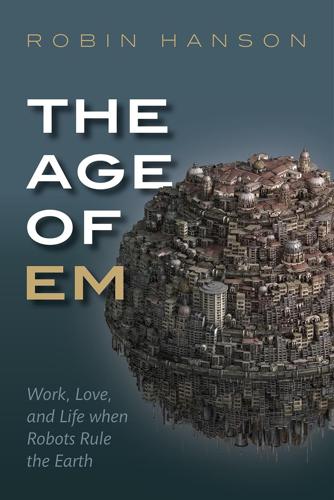
The Age of Em: Work, Love and Life When Robots Rule the Earth
by
Robin Hanson
Published 31 Mar 2016
We thus believe and consume such things far more than is adaptively useful. The “demographic transition” is the tendency of societies to switch to having far fewer children as they become rich, often via new status norms transmitted via education and mass media (Jensen and Oster 2009; La Ferrara et al. 2012; Cummins 2013). Whereas in farming societies richer people tended to have more children, thus selecting for genes that promoted wealth, today richer people now have fewer children (Clark 2008, 2014). Although some evidence suggests that early during the demographic transition having fewer children led to having more grandchildren, it seems clear that fewer children now results in fewer grandchildren (Mulder 1998; Lawson and Mace 2011).
…
“Mindfulness Training Improves Working Memory Capacity and GRE Performance While Reducing Mind Wandering.” Psychological Science 24(5): 776–781. Mueller, Dennis. 1982. “Redistribution, Growth, and Political Stability.” American Economic Review 72(2): 155–159. Mulder, Monique. 1998. “The Demographic Transition: Are we any Closer to an Evolutionary Explanation?” Trends in Ecology & Evolution 13(7): 266–270. Mullainathan, Sendhil, and Eldar Shafir. 2013. Scarcity: Why Having Too Little Means So Much. Times Books, September 3. Müller, Vincent, and Nick Bostrom. 2014. “Future Progress in Artificial Intelligence: A Survey of Expert Opinion.”
…
Index A abstraction 102, 278, 281, 340 adaptations 128, 179, 180, 227, 313, 335 behavior 25–6 to new situations 2 adiabatic gates 79 advice 180, 187, 208–9, 356 on call 315–18 legal 271 on-call 315–18 prediction markets 255 relationship 172 safe-based 173 age 5, 10, 162, 201, 291, 325 peak productivity 11, 202–4, 356 agglomeration 215 aggression 175 aging 128, 129, 136, 169, 208, 358 air 75, 90–2, 95, 326, 360 pressure 95, 218 aliens 154, 364–5 alms 302 ancestors 1, 2, 29, 132, 310, 330, 358, 383 see also farming era; foragers animals 5, 16, 22, 24, 28, 73, 74, 87, 128, 147, 302 emulations of 105, 160–1 anti-messages 82 appearances 99–107 comfortable 101–3 merging real and virtual 105–7 of shared spaces 103–5 of virtual reality 99–101 application teams 210 archives 72, 80, 229, 271 frequency made 71 memory costs 70 message 81 art 203 artificial intelligence 6, 355, 370, 382 intelligence explosion 347–50 research 51–4, 60 artificial light 18 asexuality 10 assets 116, 181, 183, 196, 261, 273, 274, 363, 377, 378 assumptions 45–54 alternative 354–9 artificial intelligence 51–4 of brains 45–7 complexity of emulations 49–51 of emulations 47–9 attacks 106, 252, 354–5 auctions 220–1 see also combinatorial auctions audits 132, 172 authenticity 113, 305 autonomy 320, 321 B bacteria 62, 92 baseline scenarios 7, 36–7, 38, 44, 354, 359 base speed 70–1, 131, 222, 265 beauty 163 behavior, energy-efficient hardware and 80 beliefs, false/biased 261 bets 116, 173, 183, 187, 360 biases 40–4, 174 bipolar disorder 165 birth cohort 202, 325 bits 78, 80 blackmail 274 bodies 72–4, 103, 106, 167 quality of 74 bosses 172, 176, 200 bots 113–14 brain cells 46 brain emulations see emulations brain scanners 46 brain, the 6, 45–7, 341, 342, 346, 349 aging of 128 cell models 46 complexity of 49 emulating brain processes 59 function of 45 modeling 364 reaction time 72 size changes 357 synapses 78 brand loyalty 304 breach of contract 274 buildings 92–5, 191 bulk buying 231 Burj Khalifa, Dubai 93 business 179–88 combinatorial auctions 184–6 cycle fluctuations 197 institutions 179–80 new institutions 181–4 organizations 201 prediction markets 186–8 C capacities 341, 342, 343, 345, 346, 347 capital 190, 191, 193, 361 careers 199–202 castration 285 celebrities 212, 298, 299 charity 302–3, 376–7 childhood 11, 48, 208, 210–2 children 210–2, 303, 383 see also youth choices, regarding em world 367–79 charity 376–7 evaluation of 367–70 policies 372–6 quality of life 370–2 success 377–9 cities 17–18, 85–6, 215–17, 245, 303, 374 air-cooled 90–2 auctions 220–1 centers 86, 89, 90, 93–5, 137, 217–19, 232, 238, 251, 257, 290, 324 first em 360–1, 362 optimal size 216 peripheries 89, 217–19, 223, 324 structure of 217–19 transport of items 226 water cooled 90–2 civilization 131, 132, 133, 135 clans 9–10, 144, 227–9, 291, 299 clan-specific computer hardware 355 concentration 155–6, 160, 237, 238, 244–5 and finance 195 firm-clan relations 235–7 governance 258, 260–4 identity 304–7, 317 inequality between 248 managing 229–31, nostalgia 308 one-name em 155 sexuality 286 signals 300, 301, 302 stories 333–4 voting via mindreading 265 classes 10, 12, 16, 258, 268, 310, 326 lower 312, 313 upper 312, 313 Cleisthenes 269 climate 85–98 clumping 215–26 clutter 103 CMOS (complementary metal–oxide–semiconductor) materials 77 coalitions 266–8 cold war 252 collaboration 309–20 combinatorial auctions 93, 184–6, 220, 261–2 communication 28, 58, 65, 71, 76, 89, 126, 183 hardware 85, 86, 147 networks 65, 81, 125 commuting 224 competition 144, 149, 151, 168, 189 clan 155 efficiency 156–9 complexity 49–51, 340 computer capital 193 computer chips 77 computer gates see logic gates computers 46 computer security 61 conceptual art 203 conflict 243–55 congestion 182, 215, 216 conscientiousness 163, 165 consciousness 48, 49, 343 consensus theories 37–9 conservatives 327 consortiums 363–4 construal level theory 24, 38, 42, 318 contract law 275 conversations 314–15 cooling 86–9, 126 fluids 90–2 systems 88 towers 90 coordination 200, 231, 234 copies 51, 71, 112, 113, 229 copy identity 305–8 copying 119–21, 144, 151, 323 cosmic rays 58 costs 60, 131, 233, 234, 236, 238, 240 and bulk buying 231 business cycle 197 communication 353 of cooling 357 and speed 70 critics 381–3 cultures 25, 41, 321–3 attitudes toward death 137 fragmentation 18, 258, 326 future 28, 29 global 29 identity 303, 305, 307 proto-industry 18 D data centers 91 data redundancy 71 death 112, 134, 135, 136–8, 312 accidental 71 decentralization 183, 185 decision markets 187–8, 260–1 decisions 262 defense 354, 355 democracy 264–6 demographic transitions 25 descendants 1–2, 29, 365, 381, 383, 384 development, cost of 355 research and 359 disasters 112, 369 discrimination see inequality diversity 368 divisions 323–6 doubling time, of economy 190, 191, 192, 193–4, 201–2, 221 drama 332 dreamtime 23–6, 29, 186 Drexler, K. Eric 33 dust 103 E early scans 148, 150 earthquakes 93 eating 298 economic analysis, v economic growth 28 economics 37–9, 382 economy 130, 179, 190, 276, 278, 374 doubling time of 190–4, 201–2, 221 early em 360 growth of 10, 92 size of 194 efficiency 155–65, 278 clan concentration 155–6 competition 156–9 eliteness 161–3 implications 159–61 qualities 163–5 elections 182, 183, 265 eliteness 161–3 ems see emulations emotion words 217 emulations 2, 6–7, 130, 338 assumptions 47–8 brain 2 compared to ordinary humans 11–2 enough 151–4 envisioning a world of 34–7 inequality 244–6 introduction to 1–2 many 122–4 mass 308 models 48 niche 308 one-name 155–6 opaque 61 open source 61 overview of 5–8 precedents 13–15 slow 257 start of 5–11 summary of conclusions 8–11 technologies 46 time-sharing 65, 222 energy 70, 71, 74, 75, 82 see also entropy control of 126 influence on behavior 83 entrenchment 344 entropy 77–80 see also energy eras 13–14, 15 see also farming era; foraging era; industrial era present 18–21 prior 15–18 values 21–3 erasures of bits 81, 82, 83 logical78rate of 80 reversible 79 eunuchs 285, 343 evaluations 367–70 evolution 22, 24, 25, 26, 134, 153 animal 24 em 153, 154 foragers 24, 25, 238 human 134, 153, 227 systems 344 existence 119–26 copying 119–21 many ems 122–4 rights 121–2 surveillance 124–6 existential risk 369 expenses 357 experimental art 203 experts, fake 254–5 exports 87, 95, 224 F faces 102, 297 factions 268–70 factories 96–7, 190, 191, 192, 193 failures 208 fake experts 254–5 fakery 113–14 farmers 1, 5, 8, 13, 16–17 communities 216 culture 326–8 farming era 5, 13, 14, 190, 252 firms 253 inequality 243 marriages 289 stories 331 wars 251 fashions 257, 268, 298, 310, 325, 326 clothes 18 intellectual 301 local 296 music 28 fast ems 257 fears 343 feelings 217 fertility 25, 26 fiction 1, 2, 41, 334 see also science fiction finance 195–7 financial inequality 247 fines 273 firms 231–4, 245 cost-focused 233 family-based 232 firm-clan relations 235–7 managers 234 mass versus niche teams 239–41 novelty-focused 233 private-equity owned 232 quality-focused 233 teams 237–9 first ems 147–50 flexibility 184, 202, 206, 224, 288, 378 flow projects 192 foragers 1, 5, 6, 8, 24–5, 29, 156, 190, 238 communities 13 pair bonds 289 foraging era 14, 16 inequality 243 stories 331 forecasting 33–4 fractal reversing 79, 81 fractional factorial experiment design 115 fragility 127–30 friendship 320, 371 future, vi 1, 26, 28, 31–2, 381 abstract construal of 42 analysis of 382, 383 em 384 eras 27, 29 evaluation of 367 technology 2, 7 futurists 35 G gates, computer 77–8 gender 290–1, 325 imbalance 291–3 geographical divisions 326 ghosts 132–3 global laws 124 God 316 governance 197, 258–62 clan 262–4 global 358 governments 364 gravity 74, 101 grit 164, 379 groups 227–41 clans 227–9 firm-clan relations 235–7 firms 231–4 managing clans 229–31 mass versus niche teams 239–41 signals 299–302 teams 237–9 growth 14, 15, 27, 28, 29, 189–97 estimate 192–4 faster 189–92 financial 195–7 modes 14 myths 194–5 H happiness 42, 165, 204–5, 232, 238, 247, 253, 303, 311, 320, 339, 370–1 hardware 54, 56–60, 63, 65, 278 clan-specific 355 communication 86 computer 86 deterministic 58, 86, 97, 174 digital 58 fault-tolerant 58 parallel 63–5 reversible 82 signal-processing 46, 57, 59 variable speed 82 heat transport 91–2 historians vi, 35 history 31, 32, 41, 248, 301 leisure 204, 207 personal 111 homosexual ems 292 homosexuality 10 hospitals 302 humans 1, 5, 7, 8, 14 introduction of 13 I identical twins 227 identity 49, 303–8, 317 ideologies 326 illness 305 implementation of emulations 55–65 hardware 56–60 mindreading 55–6 parallelism 63–5 security 60–3 impressions 295, 300 incentives 180, 181, 182, 183, 274 inclinations 342 income tax 182 individualism 20 industrial era 18–21 firms 253 stories 332 industrial organization 158 industrial revolution 232, 363 industry 5, 6, 13, 14 inequality 243–7 information 109–17 fake 113–14 records 111–2 simulations 115–17 views 109–11 infrastructure 85–98 air and water 90–2 buildings 92–5 climate controlled 85 cooling 86–9 manufacturing 95–8 innovation 189, 193, 275–7 institutions 179–80 new 181–4 intellectual property 124, 125, 147, 276, 277, 324, 362, 378 intelligence 163, 194, 295, 297, 299, 346–7 intelligence explosion 347–50 interactions 83, 109–10 interest rates 131, 196–7, 224 J job(s) categories 153 evaluations 159, 233 performance 164 tasks 356 see also careers; work judges 133, 173, 174, 261, 262, 267, 270, 272, 277, 286 K Kahn, Herman 33 kilo-ems 224 Kingdom Tower, Jeddah 93 L labor 54, 143–54, 190, 361 enough ems 151–4 first ems 147–50 Malthusian wages 146–7 markets 237 selection 150–1 supply and demand 143–5 languages 16, 128, 172, 217, 278, 345 law 229, 271–3 efficient 273–5 lawsuits 274 leisure 100, 102, 129, 168, 207, 374 activities 329 fast 258 speeds 222 liability 229, 273, 274, 277 liberals 327 lifecycle 199–212 careers 199–202 childhood 210–2 maturity 204–5 peak age 202–4 preparation for tasks 206–8 training 208–10 lifespan 11, 245, 246, 247 limits 27–9 logic gates 78, 79 loyalty 115, 117, 297, 299 lying 205 M machine reproduction estimates 192–3 machine shops 192 maladaptive behaviors 26 maladaptive cultures 25 Malthusian wages 146–7 management 200 of physical systems 109 practices 232–3 manic-depressive disorder 165 marketing 331 mass labor markets 239, 324 mass market teams 239–41 mass production 96 mating 285–93, 320, 342 gender 290–1 gender imbalance 291–3 open-source lovers 287–8 pair bonds 288–90 sexuality 285–7 maturity 204–5 meetings 75–7, 310 memories 48, 112, 136, 149, 207, 221, 304, 307 memory 63–5, 70–1, 79, 145, 219 mental fatigue 170 mental flexibility 203 mental speeds see mind speeds messages 81–2, 104 delays 77 methods 33, 34, 37, 40, 41, 42 Microsoft 91 military 359–60 mindfulness 165 minds 10, 335–50 features 344–5 humans 335–9 intelligence 346–7 intelligence explosion 347–50 merging 358 partial 341–3 psychology 343–6 quality 74 reading 55–6, 265, 271, 310, 314 speeds 65, 194, 199, 221–4 see also speed(s) theft 10, 61, 62, 76, 124, 302 unhumans 339–41 modeling, brain cell 364 modes of civilization 13–30 dreamtime 23–6 era values 21–3 limits 27–9 our era 18–21 precedents 13–15 prior eras 15–18 modular buildings 94 functional units 49 Moore’s law 54, 59, 80 moral choices 303 morality 2, 368 motivation, for studying future emulations 31–3 multitasking 171 music 311, 312, 328 myths 194–5 N nanotech manufacturing 97 nations 39, 87, 159, 163, 184, 195, 216, 243, 244, 245, 253 democratic 264 poor 22 rich 22, 39, 73, 94, 216, 234 war between 259 nature 81, 303 Neanderthals 21 nepotism 252–4 networks, talk 237 neurons 69 niche ems 308 niche labor markets 239, 324 niche market teams 239–41 normative considerations 44 nostalgia 308 nuclear weapons 251 O office politics 236 offices 100, 102, 104 older people 204–5 see also aging; retirement open-source lovers 287–8 outcome measures 260 ownership 120 P pair bonds 286, 288–90, 292–3 parallel computing 63–5, 278, 279, 280, 353 parents 383 partial sims 115 past, the see history patents 277 pay-for-performance 181–2 peak age 202–4 period 64–5, 70, 72, 76, 110 reversing 79–83 perseverance 164 personality, gender differences 290 personal signals 296–9 phase 65, 76, 81, 83, 110, 222 physical bodies 73, 75–6 physical jobs 73 physical violence 103 physical worlds 81 pipes 87, 88 plants 16, 87, 190, 303 police spurs 358 policy analysis 372–6 political power 354 politics 257–70, 322, 333 clan governance 262–4 coalitions 266–8 democracy 264–6 factions 268–70 governance 258–62 population 125 portable brain hardware 251 portfolios 196, 264, 378 positive considerations 44 poverty 246, 247, 249, 250 em 147, 153, 325 human 338 power 175–7 power laws 243 prediction markets 184, 186–8, 252, 255, 274, 317 city auctions 220 estimates 231 use of 276 pre-human primates 15–16 pre-skills 143–4, 152–3, 158, 356 preparation for tasks 206–8 prices 181–4, 187 of manufactured goods 145 for resources 179 printers, 3D 192 prison 273 privacy 172 productivity 12, 163, 171, 209–10, 211, 371 progress 2, 46–7, 49, 52, 53, 54 psychology 343–6 punishments 229, 273 purchasing 97, 182, 183, 277, 304 Q qualities 163–5 quality of life 370–2 quantum computing 357 R random access memory (RAM) 70 rare products 299 reaction time 72–3, 76–8, 83, 217 body size and 73 physical em body 223 real world, merging virtual and 105–7 records 111–2 redistribution 246–50 regulations 28, 37–8, 106, 110, 123, 151, 159, 217, 221, 264, 356, 358, 359 religion 276, 311–2, 326 research 194–5, 376 retirement 110, 127, 129–33, 135, 170, 174, 221–2, 336–9 human 8 reversibility 77–80, 82, 83 rewards 159–60 rights 121–2 rituals 309–11 rulers 259 rules 164, 271–81 S safes 172–3 salt water 91 scales 69–83 bodies 72–4 Lilliputian 74–5 speeds 69–72 scanning 148, 151, 363 scans 148–50 scenarios 34–7, 354–9, 363, 364 schools v, 20, 164, 168, 181, 233, 295–6, 302, 309, 333, 382 science fiction v, 2, 6, 312 scope 39–40 search teams 210 security 60–3, 71, 101, 104, 110, 117, 231, 306, 354, 357 breaches 85, 117 computer 104, 252, 357 costs 76 selection 5, 24, 26, 112, 137, 150–1, 153, 158, 162, 175, 263, 292, 339, 346 self-deception 173, 261, 296 self-governance 230 serial computing 353 sexuality 285–7, 328 shared spaces 103–5 showing off 295–6 sight perception 341 signals 295–308 copy identity 305–8 groups 299–302 identity 303–5 personal 296–9 processing 46 sim administrators 116 simulations 115–17 singing 311 sins 312 size 69, 72, 73, 74, 75, 110 slaves 16, 60, 121, 123–4, 147, 149, 245, 302, 327, 342 sleep 18, 60, 83, 133, 165 sleeping beauty strategy 131 social bonds 239 social gatherings 267 social interactions 238 social power 175–7 social reasoning 342 social relations 323 social science 382 social status 258 society 12, 321–34 software 54, 126, 277–9, 355 software developers 280–1 software engineers 200, 278, 280 souls 106 sound perception 341 spaces 110–14 space travel 225 speculation 39 speed(s) 69, 110, 137, 245, 246, 332 alternative scenario 355, 358 divisions 325, 326 em 8, 10, 353–4 em era 353 ghosts 132, 133 human-speed emulation 47 redistribution based on 248 retirement 130, 131 talking 298 time-shared em 65 top cheap 69, 70, 82, 89, 133, 222, 280, 281 travel 329, 330 variable speed hardware 82 walking 74 spurs 9, 110, 136, 169–71, 271, 292 social interactions 171 uses of 171–4 stability 131, 132 status 257–8, 301 stories 32, 35, 102, 325, 330–3 see also fiction clan 333–4 stress 20, 103, 134, 137, 164, 313 structure, city 217–19 subclans 227, 229 conflicting 356 inequality between 248 subordinates 200 subsistence levels 249 success 377–9 suicide 138–9 supply and demand 143–5 surveillance 124–6, 271 swearing 312–14 synchronization 309, 318–20 T takeovers 196 talk networks 237 taxes 249–50, 337 teams 237–9, 296, 299, 301, 306, 307 application 210 intelligence 346 mass versus niche teams 239–41 training 204 technologies 362–4 temperature 85, 88–91 territories 374 tests 114–17 theory 37, 39, 143 tools, non-computer-based 279 top cheap speed 69, 70, 82, 89, 133, 222, 280, 281 track records 181, 255 training 147, 151, 208–10, 212 transexuality 10 transgender conversions 292 transition, from our world to the em world 359–62 transport 224–6 travel 18, 22, 29, 43, 75, 102, 215, 218–19, 303, 329–30 travel times 102 trends 353–4 trust 208, 236 clans 227, 228, 234, 235 maturity and 204, 205 Tsiolkovsky, Konstantin 33 tweaking 150, 151 U undo action 104–5 unhumans, minds of 339–41 unions 236 United States of America 23 uploads see emulations utilitarianism 370, 372 V vacations 207 values 21–3, 237–8, 322, 383, 384 variety 20, 23, 96, 156, 157, 160, 189, 199, 234, 298, 375 views 109–11, 381, 382, 383 virtual meetings 217 virtual reality 8, 102, 103–4, 112, 217, 288, 291, 362 appearances 99–101 authentication 113 cultures 324 design of 104 leisure environments 102 meetings 76 merging real and 105–7 nature 81 travel, 224voices, pitch of 297 voting 183, 265–6 W wages 9, 12, 124, 143–5, 245, 336, 358 inequality 234, 248 Malthusian wages 146–7 rules 121, 122, 123 subsistence 354 war 16–17, 36, 131, 134, 250–2, 327, 354, 361 water 87, 90–2 Watkins, John 33 wealth 23, 26, 245–6, 321–2, 325, 336–8 weapons 251 Whole Brain Emulation Roadmap (Sandberg and Bostrom) 47 Wiener, Anthony 33 wind pressures 92, 93 work 167–77, 327, 328, 331 conditions 169 culture 321, 322, 323, 324 hours 167–9, 299, 372 methods 202 social power 175–7 speeds 222 spurs 169–71 teams 237–9 workers, time spent “loafing” 170 workaholics 165, 167 World Wide Web 34 Y Year 2000, The (Kahn and Wiener) 33 youth 11, 30, 376 see also children Z zoning 184, 185

Energy: A Human History
by
Richard Rhodes
Published 28 May 2018
Quoted in ibid., 40. 19. Alvin M. Weinberg, “Nuclear Energy and the Environment,” Bulletin of the Atomic Scientists 26, no. 6 (1970): 73. 20. UN ten billion by 2100: Fran Willekens, “Demographic Transitions in Europe and the World” (working paper WP 2014-004, Max Planck Institute for Demographic Research, 2014), 2 (online). 21. Eighteen billion: Weinberg, “Nuclear Energy and Environment,” 69. 22. UN growth rate to zero: Willekens, “Demographic Transitions,” 2. 23. Weinberg, “Nuclear Energy and Environment,” 79. 24. 30-megawatt reactor, surging to 100 megawatts: M. M. Werner, D. K. Meyers, and D. P. Morrison, “Follow-up of CRNL Employees Involved in the NRX Reactor Clean-up,” paper presented at the Third Annual Meeting of the Canadian Radiation Protection Association, Vancouver, BC, 4 May 1982 (Chalk River, Ont.: Chalk River Nuclear Laboratories), 1; more than a thousand men, two women: ibid., 2, table 1. 25.
…
The United Nations’s medium estimate for world population growth by 2030, he noted, was ten billion (a number that by 2017 the United Nations had revised, extending it seventy years forward to 2100).20 In 1970, going Malthusian, Weinberg postulated a world population of eighteen billion by 2050.21 No credible authority projects such an increase today—almost two and a half times the 2017 world population of seven and a half billion—because the demographic transition from high birth rates to lower birth rates that follows from increasing prosperity is advancing today throughout the world. The United Nations’s projection of ten billion people by 2100 also projects that the growth rate will decline by then to 0 percent, and world population growth will cease.22 But whatever the world’s population, Weinberg argued in 1970 that nuclear energy could help prevent Malthusian catastrophe.
…
Cambridge: Cambridge University Press, 1971. ———. Modes of Thought. New York: Free Press, 1938. Whitehead, J. Rennie. The Club of Rome and CACOR: Recollections, n.d. (online). Wilkinson, Paul. The Historical Development of the Port of Faversham, Kent 1580–1780, n.d., http://kafs.co.uk. Willekens, Frans. “Demographic Transitions in Europe and the World.” Max Planck Institute for Demographic Research Working Paper WP 2014-004, 2014 (online). Williams, James H., Andrew DeBenedictis, Rebecca Ghanadan, Amber Mahone, Jack Moore, William R. Morrow III, Snuller Price, and Margaret S. Torn. “The Technology Path to Deep Greenhouse Gas Emissions Cuts by 2050: The Pivotal Role of Electricity.”

Radical Uncertainty: Decision-Making for an Unknowable Future
by
Mervyn King
and
John Kay
Published 5 Mar 2020
But Malthus was sceptical, instead advocating celibacy until late marriage (he himself had three children after marrying at the age of thirty-eight). Yet time would show that as women enjoyed higher incomes and better education, helped by the availability of contraception, they bore fewer children – the ‘demographic transition’, first described a century ago by Warren Thompson and subsequently observed in many countries. 4 And if Ehrlich had paid more attention to ‘what is going on here’ he might have observed not only the demographic transition but the ‘green revolution’ – the hybrid seed varieties which have produced dramatic new gains in agricultural productivity. The Victorian economist Stanley Jevons published The Coal Question in 1865, in which he explained that limitations on coal resources would inevitably constrain Britain’s economic growth. 5 In Malthus’s model, exponential population growth met linearly expanding food production; in Jevons’ book, exponentially growing industrial production met finite resource of coal.
…
Prices and competition promote not only discovery and innovation, but also changes in preferences and expectations. Malthus was polemicist as well as economist, but never foolish enough to believe he could predict the crises his model described. And, properly analysed, the framework he sets out invites us to understand what factors influence agricultural productivity and demographic transitions. Jevons – one of the great minds of his time, but also an unpredictable eccentric whose obsession with resource scarcity made him a hoarder of paper – lived long enough after Malthus to understand some of the weaknesses of Malthus’s concern about food supplies. He wrote that ‘the plains of North America and Russia are our corn fields; Chicago and Odessa our granaries; Canada and the Baltic our timber forests; Australia contains our sheep farms, and in Argentina and on the Western prairies of North America are our herds of oxen . . . the Hindus and the Chinese grow our tea for us, and our coffee, sugar and spice plantations are all in the Indies.
…
E., ‘Chairman’s Letter to Shareholders’ (1988) Buffett, W. E., ‘Chairman’s Letter to Shareholders’ (1989) Buffett, W. E., ‘Chairman’s Letter to Shareholders 2014’ (2015) Burns, R., ‘Impromptu on Carron Iron Works’ (1787) < http://www.robertburns.org/works/176.shtml > (accessed 9 Oct 2018) Caldwell, J. C., Demographic Transition Theory (Dordrecht: Springer, 2006) Camerer, C. F. et al., ‘Evaluating Replicability of Laboratory Experiments in Economics’, Science , Vol. 351 (2016), 1433–6 Candler, G. V. and Prescott, E. C., ‘Calibration’, The New Palgrave Dictionary of Economics (10 Dec 2016), accessed 17 May 2018 Capen, E.

The Great Leveler: Violence and the History of Inequality From the Stone Age to the Twenty-First Century
by
Walter Scheidel
Published 17 Jan 2017
Modern research has emphasized the importance of responses to population growth and resource stress that increase productivity and thereby help ward off Malthusian crises. The most sophisticated neo-Malthusian models thus envision a ratchet effect in which population and production develop through tradeoffs between scarcity pressures and technological or institutional progress. Moreover, the Demographic Transition of the last 150 years is thought to have mitigated Malthusian constraints through a combination of runaway innovation coupled with declining fertility in the face of rising real incomes, a novel feature of modernity that cannot be observed in the same way in earlier periods of history. For this reason, Malthusian mechanisms are primarily relevant for our understanding of premodern societies, which are also the subject matter of this chapter.
…
This is a sobering finding considering that—just as in South Korea and Taiwan—its highly restrictive immigration policy had previously helped maintain a relatively egalitarian distribution of income before taxes and transfers.4 All these projections assume a considerable volume of ongoing immigration: without this demographic contribution, the European dependency ratio could be as high as 0.6 by 2050. The arrival of many millions of newcomers will thus merely mitigate the long-term consequences of the secular aging process. At the same time, immigration may test redistributive policies in unprecedented ways. In his pioneering study of what he labels the “Third Demographic Transition,” the eminent demographer David Coleman calculates that even on conservative assumptions about immigration rates and the fertility of immigrants, by 2050 the share of the national population that is of foreign origin (a concept whose definition varies by country) will reach between a quarter and a third in six out of seven countries he reviews: Austria, England and Wales, Germany, the Netherlands, Norway, and Sweden.
…
The first two of these factors have already become defining features of the European experience, and the likelihood of persistent migratory pressures from the Middle East and Africa will ensure their continuing and arguably growing relevance. In all of this, it is important to realize that Europe’s “Third Demographic Transition,” which will transform the composition of national populations in response to subreplacement fertility and immigration, is still in its early stages. Over the course of the next generation, it may alter established patterns of redistribution and inequality in ways impossible to anticipate.

Global Catastrophic Risks
by
Nick Bostrom
and
Milan M. Cirkovic
Published 2 Jul 2008
The change that will have the largest immediate effect will be population control, through voluntary or coerced means or both. Such changes are already having an effect. The one-child policy enforced by the Chinese government, imperfect though it is in practice, has accelerated that country's demographic transition and helped it to gain a 20-fold increase in per capita income over the last quarter century. Such demographic transitions are taking place with increasing rapidity in most parts of the world, even in the absence of government coercion. Predictions of a human population of 1 2 billion by 2050 were made by the United Nations in 1960. These frightening projections envisioned that our population would continue to increase rapidly even after 2050.
…
These estimates have now been replaced by less extreme predictions that average nine billion by 2050, and some of these revised projections actually predict a slow decline in world population after mid-century. Demographic transitions in sub-Saharan Africa and South Asia will lag behind the rest of the planet, but there is no reason to suppose that these regions will not catch up during this century as education, particularly the education of women, continues to spread. These demographic transitions are unlikely to be reversed in the future, as long as education continues to spread. Recently the chief of a small village on the remote island of Rinca in Indonesia complained to me that all his six children Evolution theory and the future ofhumanity 67 wanted to go to medical school, and he could not imagine how he could send them all.
…
Recently the chief of a small village on the remote island of Rinca in Indonesia complained to me that all his six children Evolution theory and the future ofhumanity 67 wanted to go to medical school, and he could not imagine how he could send them all. Accompanying the demographic transitions will be technological changes in how the planet is fed. If rising ocean levels cause the loss of immense amounts of arable land (including major parts of entire countries, such as low-lying Bangladesh), hordes of refugees will have to be fed and housed. Technology and alterations in our eating habits hold out some hope. Soy protein is similar in amino acid content to animal proteins, and its production has increased 400% in the past thirty years.

Enlightenment Now: The Case for Reason, Science, Humanism, and Progress
by
Steven Pinker
Published 13 Feb 2018
Indeed, a naïve faith in stasis has repeatedly led to prophecies of environmental doomsdays that never happened. The first is the “population bomb,” which (as we saw in chapter 7) defused itself. When countries get richer and better educated, they pass through what demographers call the demographic transition.11 First, death rates decline as nutrition and health improve. This does swell the population, but that is hardly something to bewail: as Johan Norberg notes, it happens not because people in poor countries start breeding like rabbits but because they stop dying like flies. In any case, the increase is temporary: birth rates peak and then decline, for at least two reasons.
…
The era of the Beach Boys and American Graffiti is over: half of American eighteen-year-olds do not have a driver’s license.38 The expression “Peak Oil,” which became popular after the energy crises of the 1970s, refers to the year that the world would reach its maximum extraction of petroleum. Ausubel notes that because of the demographic transition, densification, and dematerialization, we may have reached Peak Children, Peak Farmland, Peak Timber, Peak Paper, and Peak Car. Indeed, we may be reaching Peak Stuff: of a hundred commodities Ausubel plotted, thirty-six have peaked in absolute use in the United States, and another fifty-three may be poised to drop (including water, nitrogen, and electricity), leaving only eleven that are still growing.
…
The demographers at Pew did the math and projected that the proportion of the world’s population that is Muslim might rise from 23.2 percent in 2010 to 29.7 percent in 2050, while the percentage of Christians will remain unchanged, and the percentage of all other denominations, together with the religiously unaffiliated, will decrease. Even this projection is a hostage to current fertility estimates and may become obsolete if Africa (religious and fecund) undergoes the demographic transition, or if the Muslim fertility decline discussed in chapter 10 continues.70 A key question about the secularization trend is whether it is being driven by changing times (a period effect), a graying population (an age effect), or the turnover of generations (a cohort effect).71 Only a few countries, all English-speaking, have the multidecade data we need to answer the question.

Deaths of Despair and the Future of Capitalism
by
Anne Case
and
Angus Deaton
Published 17 Mar 2020
Emile Durkheim, 1897, Le suicide: Etude de sociologie, Germer Baillière, but the link with education goes back further. See Matt Wray, Cynthia Colen, and Bernice Pescosolido, 2011, “The sociology of suicide,” Annual Review of Sociology, 37, 505–28. 2. Sara McLanahan, 2004, “Diverging destinies: How children are faring under the second demographic transition,” Demography, 41(4), 607–27; Andrew Cherlin, 2014, Labor’s love lost: The rise and fall of the working-class family in America, Russell Sage Foundation; Robert D. Putnam, 2015, Our kids: The American dream in crisis, Simon and Schuster; David Goodhart, 2017, The road to somewhere: The populist revolt and the future of politics, Hurst; Charles Murray, 2012, Coming apart: The state of white America, 1960–2010, Crown. 3.
…
Zidar, and Eric Zwick, 2019, “Capitalists in the 21st century,” Quarterly Journal of Economics, 134(4), 1675–745. 6. Robert D. Putnam, 2015, Our kids: The American dream in crisis, Simon and Schuster; Charles Murray, 2012, Coming apart: The state of white America, 1960–2010, Crown; Sara McLanahan, 2004, “Diverging destinies: How children are faring under the second demographic transition,” Demography, 41(4), 607–27. 7. Authors’ calculations using Gallup’s tracking poll. 8. Alex Bell, Raj Chetty, Xavier Jaravel, Neviana Petkova, and John van Reenen, 2019, “Who becomes an inventor in America? The importance of exposure to innovation,” Quarterly Journal of Economics, 134(2), 647–713. 9.
…
Coale and Susan Cotts Watkins, 1986, The decline of fertility in Europe, Princeton University Press; E. Anthony Wrigley and Roger Schofield, 1981, The population history of England 1541–1871: A reconstruction, Edward Arnold. 7. Sara McLanahan, 2004, “Diverging destinies: How children are faring under the second demographic transition,” Demography, 41(4), 607–27. 8. McLanahan; Kathleen Kiernan, Sara McLanahan, John Holmes, and Melanie Wright, 2011, “Fragile families in the US and the UK,” https://www.researchgate.net/profile/Kathleen_Kiernan3/publication/254446148_Fragile_families_in_the_US_and_UK/links/0f31753b3edb82d9b3000000/Fragile-families-in-the-US-and-UK.pdf; Kelly Musick and Katherine Michelmore, 2018, “Cross-national comparisons of union stability in cohabiting and married families with children,” Demography, 55, 1389–421. 9.
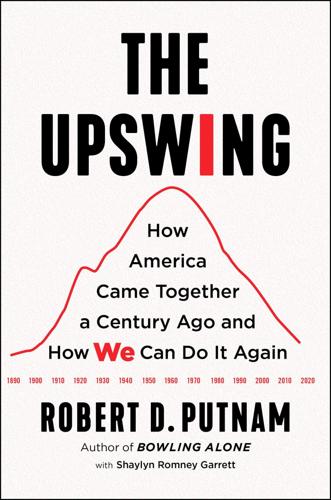
The Upswing: How America Came Together a Century Ago and How We Can Do It Again
by
Robert D. Putnam
Published 12 Oct 2020
Another way of describing this same pattern is that during the two Gilded Ages of the late nineteenth and early twenty-first centuries, men and women were less likely to marry and especially unlikely to marry outside their own social class, whereas at the peak of family formation in the 1950s and 1960s they were more likely both to marry and to marry outside their social class. Thus far we’ve focused on trends in marriage, but how about trends in parenthood? Measuring and accounting for trends in birth rates is a notoriously complex statistical task, as very long-term trends (the so-called “demographic transition” from high to low birth rates that typically accompanies industrialization) interact with short-term effects (like the reductions in birth rates associated with wars or cyclical economic upheaval).124 Leaving aside nonmarital births, lower and later rates of marriage directly produce lower birth rates, so the ups and downs of marriage that we’ve already explored should be expected to have left some mark on American birth rates over the last century, and they have.
…
The available statistical coverage is incomplete, but in 1950 in the midst of the postwar Baby Boom, the median age of a mother at her first birth was less than 21, while by 2016, after six decades of steady rise, it was nearly 27, and for female college graduates more than 30.125 A standard account of birth rates over this period puts the emphasis on the long-term “demographic transition” toward lower birth rates that began in the US at the beginning of the nineteenth century, augmented by more effective birth control in the twentieth century, briefly and only temporarily interrupted by the Baby Boom of the 1950s.126 However, that theory does not entirely fit the trend in whether couples decided to have children at all or not.
…
“The Rise of Cohabitation in the United States: New Historical Estimates,” Minnesota Population Center, Working Paper 3 (2005). 116 “Wide Acceptance of Cohabitation, Even as Many Americans See Societal Benefits in Marriage,” Fact Tank—News in the Numbers, November 5, 2019, https://www.pewresearch.org/fact-tank/2019/11/06/key-findings-on-marriage-and-cohabitation-in-the-u-s/ft_19-11-05_marriagecohabitation_wide-acceptance-cohabitation/. 117 Cherlin, The Marriage-Go-Round, 100. 118 “Among Americans with college degrees, we see a much greater centering of family life around marriage, whereas for those with less education we see a greater reliance on alternatives to marriage, such as cohabiting unions and lone parenthood, as well as a higher rate of marital dissolution.” Andrew Cherlin, “Degrees of Change: An Assessment of the Deinstitutionalization of Marriage Thesis,” Journal of Marriage and Family 82, no. 1 (Feb 2020). See also Lundberg, Pollak, and Stearns, “Family inequality”; Sara McLanahan, “Diverging Destinies: How Children Fare Under the Second Demographic Transition,” Demography 41, no. 4 (2004): 607–27; and McLanahan, Jaeger, and Catena, “Children in Fragile Families,” 2019. For more information about the landmark Fragile Families study, see https://fragilefamilies.princeton.edu/. 119 Cherlin, Marriage, Divorce, Remarriage, 15–16. 120 Cherlin, The Marriage-Go-Round, 102. 121 Lisa Bonos and Emily Guskin, “It’s Not Just You: New Data Shows More than Half of Young People in America Don’t Have a Romantic Partner,” Washington Post, March 21, 2019, https://www.washingtonpost.com/lifestyle/2019/03/21/its-not-just-you-new-data-shows-more-than-half-young-people-america-dont-have-romantic-partner/, citing the General Social Survey, https://gssdataexplorer.norc.org/trends/Gender%20&%20Marriage?

The Evolution of Everything: How New Ideas Emerge
by
Matt Ridley
Simon offered another bet to anybody who would take it: ‘I’ll bet a week’s or a month’s pay that just about any trend pertaining to material human welfare will improve rather than get worse.’ Nobody took up his offer before Simon’s untimely death in 1998. The solution to the population explosion turned out to be the Green Revolution and the demographic transition. Emergent phenomena rather than coercion and planning. Evolution, not prescription. It was an evolutionary, spontaneous and unplanned phenomenon that slowed population growth. Unexpected, unpredicted and unheralded, people started having smaller families because they were richer, healthier, more urban, more liberated and more educated.
…
Abandon the creationism of technocratic pessimism, the repeatedly debunked doom-mongering of the scientific elite with its simplistic and static misunderstanding of the nature of resources, the easy resort to the lazy plural pronoun ‘we’ and the dreadful word ‘must’. Embrace instead the evolutionary, unplanned, emergent phenomenon of the demographic transition. Leave the last word to Jacob Bronowski, speaking at the end of his television series The Ascent of Man. Standing in a pond at Auschwitz-Birkenau, where many of his relatives died, he reached down and lifted up some mud: ‘Into this pond were flushed the ashes of some four million people.
…
The Malthusian Delusion and the Origins of Population Control. PRI Review 13. On 1960s population books, Paddock, W. and Paddock, P. 1967. Famine 1975!. Little, Brown. And Ehrlich, P. 1968. The Population Bomb. Ballantine. Also Ehrlich, P., Ehrlich, A. and Holdren, J. 1978. Ecoscience. Freeman. On the demographic transition, Hanson, Earl Parker 1949. New Worlds Emerging. Duell, Sloan & Pearce. And Castro, J. de. 1952. The Geopolitics of Hunger. Monthly Review Press. On resources, Simon, Julian 1995. Earth Day: Spiritually uplifting, intellectually debased. Essay available at juliansimon.org. On the Club of Rome, Delingpole, J. 2012.

Everyware: The Dawning Age of Ubiquitous Computing
by
Adam Greenfield
Published 14 Sep 2006
If anything, as far as the technology and consumer-electronics industries are concerned, always-on, real-time any- and everyware can't get here fast enough. Thesis 29 Everyware is strongly implied by the needs of an aging population in the developed world. At the moment, those of us who live in societies of the global North are facing one of the more unusual demographic transitions ever recorded. As early childhood immunization has become near-universal over the last half-century, access to the basics of nutrition and healthcare have also become more widespread. Meanwhile, survival rates for both trauma and chronic conditions like heart disease and cancer have improved markedly, yielding to the application of medical techniques transformed, over the same stretch of time, by everything from the lessons of combat surgery, to genomics, to materials spun off from the space program, to the Internet itself.
…
To so many of us, the idea of living autonomously long into old age, reasonably safe and comfortable in our own familiar surroundings, is going to be tremendously appealing, even irresistible—even if any such autonomy is underwritten by an unprecedented deployment of informatics in the home. And while nothing of the sort will happen without enormous and ongoing investment, societies may find these investments more palatable than other ways of addressing the issues they face. At least if things continue to move in the direction they're going now, societies facing the demographic transition will be hard-pressed to respond to the needs of their elders without some kind of intensive information-technological intervention. Thesis 30 Everyware is strongly implied by the ostensible need for security in the post-9/11 era. We live, it is often said, in a surveillance society, a regime of observation and control with tendrils that run much deeper than the camera on the subway platform, or even the unique identifier that lets authorities trace the movements of each transit-pass user.

Elsewhere, U.S.A: How We Got From the Company Man, Family Dinners, and the Affluent Society to the Home Office, BlackBerry Moms,and Economic Anxiety
by
Dalton Conley
Published 27 Dec 2008
While Malthus could be said to have been right for most of the 13,000 years of human history during which the domestication of plants and animals has taken place, he certainly did not anticipate two phenomena: (1) the Agricultural (and Industrial) revolutions, which greatly improved living standards through increased production; and (2) the demographic transition, which slowed the rate of human population growth. The interplay of these two developments in human history is complicated and the source of much debate; needless to say, humans are not the mindless copulating rabbits that Malthus had presupposed. In fact, the average number of children started declining in the West well before modern contraception was available. We have seen demographic transitions—coupled with economic development—in other areas of the globe such as Asia and Latin America of late.

Selfish, Shallow, and Self-Absorbed: Sixteen Writers on the Decision Not to Have Kids
by
Meghan Daum
Published 29 Mar 2015
As for what explains the drastic disparity between family size in the West and the rest, sure, we have readier access to contraception. But medical technology is only one piece of the puzzle. During the Industrial Revolution, Western fertility rates plunged in a similar fashion. This so-called “demographic transition” is usually attributed to the conversion from a rural agrarian economy to an urban industrialized one, and thus to children’s shift from financial asset to financial burden. But what is fascinating about the abrupt decrease in family size at the turn of the last century is that it was accomplished without the Pill.
…
Whether through abstinence, backstreet abortion, infanticide, or the rhythm method, people who couldn’t afford more children didn’t have them. Therefore the increased availability of reliable contraception around 1960 no more than partially explains plummeting birthrates thereafter. The difference between Germany and Niger isn’t pharmaceutical; it’s cultural. I propose that we have now experienced a second demographic transition, which cannot be attributed to economics. In both America and Europe the engine driving the “birth dearth” among white, educated elites is existential. * * * To be ridiculously sweeping: baby boomers and their offspring have shifted emphasis from the communal to the individual, from the future to the present, from virtue to personal satisfaction.

Progress: Ten Reasons to Look Forward to the Future
by
Johan Norberg
Published 31 Aug 2016
Quite possibly, the most important long-term effect of the Green Revolution was that it reduced the number of mouths that had to be fed, long-term. When children began to survive to adulthood, parents began to have fewer children. The demographic transition that the West has already gone through is now being repeated across the developing world. The neo-Malthusians claimed this wouldn’t happen at all, but in fact it has happened much faster in low- and middle-income countries. Between 1950–5 and 2010–15, the number of children per woman declined from 6.1 to 2.6. The unprecedented demographic transition that took the Western world 200 years was repeated by the developing world in just sixty years. In East Asia, it declined from 5.6 to 1.6, in South Asia from 6 to 2.6, and in Latin America from 5.9 to 2.2.

One Billion Americans: The Case for Thinking Bigger
by
Matthew Yglesias
Published 14 Sep 2020
Description: New York : Portfolio, 2020. | Includes bibliographical references. Identifiers: LCCN 2020027461 | ISBN 9780593190210 (hardcover) | ISBN 9780593190227 (ebook) Subjects: LCSH: United States—Population—Economic aspects. | United States—Population—Environmental aspects. | Demographic transition—Economic aspects—United States. | United States—Emigration and immigration—Government policy. | United States—Economic conditions—21st century. Classification: LCC HB3505 .Y45 2020 | DDC 304.6/20973—dc23 LC record available at https://lccn.loc.gov/2020027461 While the author has made every effort to provide accurate internet addresses and other contact information at the time of publication, neither the publisher nor the author assumes any responsibility for errors or for changes that occur after publication.
…
Historically, women all over the world tended to have many children in large part because the child mortality rate was so high that giving birth to many children was the only reliable way to ensure that a few would survive into adulthood. Reliable contraceptives were not available, and women often lacked the legal, social, and cultural autonomy to control their own bodies. These conditions continue to persist in significant parts of the world today and are a major tragedy. The big picture “demographic transition” is nothing to regret. Nor should we regret the more recent evolution of social norms in developed countries that have opened up more career opportunities to women and thus somewhat diminished the allure of motherhood. But changing tastes actually don’t explain the changes we’ve seen over the past forty years or so.
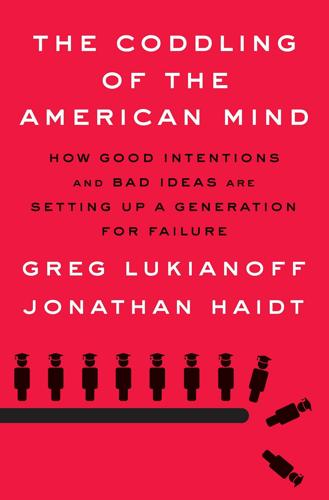
The Coddling of the American Mind: How Good Intentions and Bad Ideas Are Setting Up a Generation for Failure
by
Greg Lukianoff
and
Jonathan Haidt
Published 14 Jun 2018
A nation of wimps. Psychology Today. Retrieved from https://www.psychologytoday.com/articles/200411/nation-wimps 29. J. Lythcott-Haims (personal communication May 26, 2017). 30. This is called the demographic transition. See: Grover, D. (2014, October 13). What is the Demographic Transition Model? PopEd Blog. Retrieved from https://www.populationeducation.org/content/what-demographic-transition-model 31. Parker, K., & Wang, W. (2013, March 14). Modern parenthood: Roles of moms and dads converge as they balance work and family. Pew Research Center. Retrieved from http://www.pewsocialtrends.org/2013/03/14/modern-parenthood-roles-of-moms-and-dads-converge-as-they-balance-work-and-family 32.

Slouching Towards Utopia: An Economic History of the Twentieth Century
by
J. Bradford Delong
Published 6 Apr 2020
Low savings rates and the high cost of capital investment meant that the yield from a given savings effort in the global south was low. Because poor countries are by definition those in which labor is cheap and machines are expensive, and all the more so when governments made foreign-produced machines hard to obtain, prices on most manufactured goods remained high. An incomplete demographic transition to low fertility (because fear of poverty translates into more children, in the hopes that some of them will look after the aged) meant high rates of population growth, which meant, in turn, that investment went to equip a growing labor force with all the basic tools they needed, rather than to the higher-quality tools that would make a shrinking labor force productive.
…
If the optimists are wrong, then we are all in big trouble. Successful handling of global warming and other future global environmental problems, and successful long-run stabilization of human populations, hinges on successful industrialization in the global south and their consequent—rapid—passage through the demographic transition, especially in sub-Saharan Africa and in much of the Islamic world, where it is currently semistalled. “Neoliberalism” in the global south has thus been the strategy of pessimistic optimists. Having grown pessimistic about the ability of developing states to attain enough security, stability, and independence to pursue economic growth, they optimistically expect evidence of economic failure to generate ideas, constituencies, and pressures that will reform states toward economic growth.
…
Besides, there was still Big Government, even if Bill Clinton had thrown rhetorical red meat to working-class white men who felt somehow wounded by inclusion by claiming that Big Government’s era was over. There were powerful government interventions and policies that appear to have been powerful boosters of growth: education (especially female secondary education) in accelerating the demographic transition; policies making it easy for domestic producers to acquire industrial core technology (embodied in capital goods or not); administrative simplicity and transparency; transportation and communication infrastructure—all things that made government effective and that only the government could provide.

Plenitude: The New Economics of True Wealth
by
Juliet B. Schor
Published 12 May 2010
Alternatives for scarce fuels or minerals would be invented. Economists were sanguine about the possibility of surpassing physical realities with human ingenuity. Another key question was whether unabated exponential growth in population was a reasonable assumption. Europe and North America had already experienced their demographic transitions, with declining birth rates. China and India would not be far behind. Population fears had surfaced at the moment of maximal growth, without enough credit given to counteracting forces. This is a point that was relevant to the model more generally. The no-adaptation, or standard run, scenario that yielded the worst outcome was unlikely, because its negative effects would call forth responses, a point the systems dynamics researchers understood well.
…
Malthus believed that population growth would outrun increases in agricultural productivity, so that food production would fail to keep up with mouths to feed. He foresaw rising poverty and famines. The standard view is that he got it wrong, given the tremendous increases in agricultural productivity and the demographic transition toward lower birth rates. (With a sixth of the world’s population, or a billion people, already hungry, 1.4 billion living in one-dollar-per-day poverty, rising food prices, and intensifying competition for land between energy and food uses, one might be forgiven for wondering if the case against Malthus isn’t absolutely closed.)
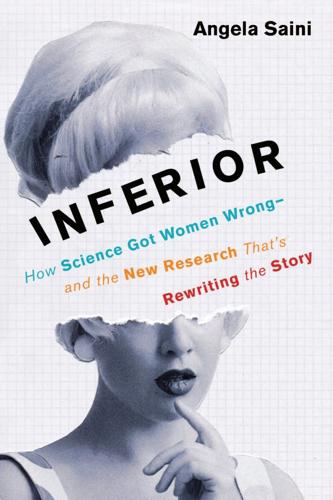
Inferior: How Science Got Women Wrong-And the New Research That's Rewriting the Story
by
Angela Saini
Published 29 May 2017
“Perinatal Risk Factors for Neonaticide and Infant Homicide: Can We Identify Those at Risk?” Journal of the Royal Society of Medicine 97, no. 2 (2004): 57–61. Bribiescas, Richard. Men: Evolutionary and Life History. Cambridge, MA: Harvard University Press, 2006. Sear, Rebecca, and David A. Coall. “How Much Does Family Matter? Cooperative Breeding and the Demographic Transition.” Population and Development Review 37 (2011): 81–112. Scommegna, Paola. “More U.S. Children Raised by Grandparents.” Population Reference Bureau, March 2012. https://www.prb.org/Publications/Articles/2012/US-children-grandparents.aspx. Muller, Martin N., Frank W. Marlowe, Revocatus Bugumba, and Peter T.
…
US National Center for Health Statistics. https://www.cdc.gov/nchs/data/databriefs/db229.htm. Accessed June 1, 2016. Hrdy, Sarah Blaffer. Mothers and Others: The Evolutionary Origins of Mutual Understanding. Cambridge, MA: Belknap Press of Harvard University Press, 2009. Sear, Rebecca, and David A. Coall. “How Much Does Family Matter? Cooperative Breeding and the Demographic Transition.” Population and Development Review 37 (2011): 81–112. Shanley, D. P., R. Sear, R. Mace, and T. B. L. Kirkwood. “Testing Evolutionary Theories of Menopause.” Proceedings of the Royal Society B: Biological Sciences 274, no. 1628 (2007): 2943–49. Foster, Emma A., et al. “Adaptive Prolonged Postreproductive Life Span in Killer Whales.”

Losing Control: The Emerging Threats to Western Prosperity
by
Stephen D. King
Published 14 Jun 2010
I have to admit that the ‘surge in optimism’ argument is rather unconvincing; to my mind, it sounds like an ex post rationalization. The study of demographics seems to be rather full of these kinds of arguments. 4. See, for example, David E Bloom, David Canning and Jaypee Sevilla, Economic Growth and the Demographic Transition (National Bureau of Economic Research, Cambridge, MA, 2001). 5. There are, of course, exceptions to this general rule. Birth rates in Russia, Belarus, the Ukraine and Georgia are remarkably low: their populations are ageing through an absence of youth rather than a huge increase in the elderly. 6.
…
SELECT BIBLIOGRAPHY Aherne, A., Gagnon, J., Haltmaier, J. and Kamin, S., Preventing Deflation: Lessons from Japan’s Experience in the 1990s, Federal Reserve International Finance Discussion Paper, Washington DC, 2002 Akerlof, G., ‘The market for lemons: quality uncertainty and the market mechanism’, Quarterly Journal of Economics, 84.3 (1970), pp. 488–500 Balassa, B., ‘The purchasing power doctrine: a reappraisal’, Journal of Political Economy, 72 (1964), pp. 584–96 Barbone, L., Bontch-Osmolovssky, M. and Zaidi, S., The Foreign-born Population in the European Union and its Contribution to National Tax and Benefit Systems, World Bank, Washington, DC, April 2009 Baumol, W., Litan, R. and Schramm, C., Good Capitalism, Bad Capitalism and the Economics of Growth and Prosperity, Yale University Press, New Haven, 2007 Bernanke, B., The Great Moderation, Federal Reserve, Washington DC, 2004 ———, The Global Savings Glut, Federal Reserve, Washington DC, 2005 Besley, T., ‘Principled Agents? The Political Economy of Good Government’, The Lindahl Lectures, Oxford, 2006 Bloom, D., Canning, D. and Sevilla, J., Economic Growth and the Demographic Transition, National Bureau of Economic Research, Cambridge MA, 2001 BP, Statistical Review of World Energy, London, June 2009 Buruma, I. and Margalit, A., Occidentalism: A Short History of Anti-Westernism, Penguin Press, New York, 2004 Chang, H.-J., Kicking Away the Ladder: Development Strategy in Historical Perspective, Anthem, London, 2002 ———, Bad Samaritans: The Myth of Free Trade and the Secret History of Capitalism, Bloomsbury, London, 2008 Clark, G., A Farewell to Alms: A Brief Economic History of the World, Princeton University Press, Princeton, 2007 Collier, P., The Bottom Billion: Why the Poorest Countries are Failing and What Can Be Done About It, Oxford University Press, Oxford, 2006 Davies, N., Europe: A History, Oxford University Press, Oxford, 1996 Desai, M., Marx’s Revenge: The Resurgence of Capitalism and the Death of Statist Socialism, Verso, London, 2002 Eichengreen, B., Globalizing Capital: A History of the International Monetary System, Princeton University Press, Princeton, 1996 ———, Sterling’s Past, Dollar’s Future: Historical Perspectives on Reserve Currency Competition, Tawney Lecture, Economic History Society, Leicester, April 2005 ———, Global Imbalances and the Lessons from Bretton Woods, The Cairoli Lectures, MIT Press, Cambridge MA, 2007 Federal Reserve Bank of Kansas, New Challenges for Monetary Policy, Proceedings, Jackson Hole, WY, 1999 Ferguson, N., Colossus: The Rise and Fall of the American Empire, Allen Lane, London, 2004 ———, The Ascent of Money: A Financial History of the World, Allen Lane, London, 2008 Findlay, R. and O’Rourke, K., Power and Plenty: Trade, War, and the World Economy in the Second Millennium, Princeton University Press, Princeton and Oxford, 2007 Friedman, B., The Moral Consequences of Economic Growth, Alfred A.
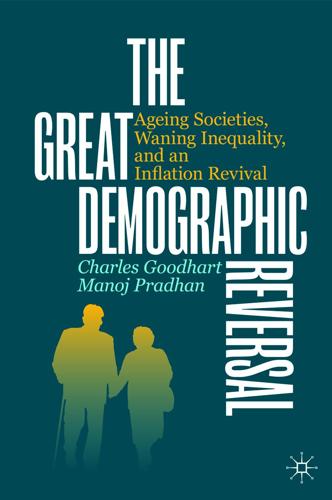
The Great Demographic Reversal: Ageing Societies, Waning Inequality, and an Inflation Revival
by
Charles Goodhart
and
Manoj Pradhan
Published 8 Aug 2020
It is highly unlikely that these highly technical industries, China’s best bet for productivity gains in the future, will move to the interior of China. In theory, a global pool of educated workers could at least partially offset some of the risks we have mentioned here. However, since every major manufacturing economy among the AEs and EMEs is going through a similar demographic transition, the global demand for such skilled labour is likely to intensify. Within China itself, the educated labour force already resides on the coast, close to the production hubs, and in the urban areas. In fact, rather than looking inward for growth, China’s ‘One Belt, One Road’ initiative is more promising as an outward-looking strategy.
…
In 2050, 44% of the world’s population will live in relatively aged countries, with at least 20% of the population aged 60 years or over, and one in four people will live in a country where more than 30% of people are above age 60. 3.2 The Demographic Cycle: Uniform Geographically, Lopsided Economically The World Bank provides a useful classification of the demographic cycle by splitting economies into those where the demographic dividend has already passed by to those that have yet to live through theirs. The four sets of economies—pre-dividend, early-dividend, late-dividend and post-dividend—capture a global economy in demographic transition. The differences in fertility and longevity among these economies help explain their labels. Countries with high fertility rates and low longevity are the ones that have yet to reap their demographic dividend. The expected fall in fertility rates and the increase in longevity, following the pattern in the rest of the world, will create the demographic dividend in the future.

The Story of Work: A New History of Humankind
by
Jan Lucassen
Published 26 Jul 2021
The smaller the age gap with her husband, the greater the chance that a married woman could determine the nature and intensity of her work.96 A second step could be taken in the nineteenth century following discoveries in the field of medical science, such as preventative vaccination and better hygiene. This led to greater numbers of children surviving and, therefore, an increase in domestic tasks. It has been calculated that ‘a baby adds about ten days’ worth of tasks to the household per month’.97 This great demographic transition occurred first in the cities, where there were the worst hygiene abuses and therefore the biggest gains to be made. Since this was linked to economic prosperity, community education got off the ground everywhere at the same time. The consequences for mothers were, on the one hand, that others looked after their children for part of the day, but, on the other hand, that children started working much later and therefore care for them increased.
…
Another hundred years later, effective birth control made its appearance in the form of the pill, approved by the American Food and Drug Administration (FDA) in 1960. Within a decade, what has been called the most effective invention of the twentieth century spread throughout the world, and some governments even turned it into active propaganda to stop the explosive population growth as a consequence of the demographic transition. This had a dual effect on the work of women. Firstly, they were pregnant less often, but, on the other hand, care for the few but therefore emotionally and materially expensive children increased sharply, especially when their education became the gateway to social success. Against the background of these three transitions, we must locate the great shift from married women outside the household to productive labour for the market.
…
Against the background of these three transitions, we must locate the great shift from married women outside the household to productive labour for the market. In addition, unpaid domestic and educational labour has generally remained an important task for married women and mothers to this day. From the Industrial Revolution to the demographic transition As we have seen, the fact that women in or at home could combine productive agrarian or industrial labour with domestic tasks was one of the secrets of the industrious revolution. With the shift of industrial work away from farm and craft to centrally powered factories, this bond was slowly but surely broken.

The Rise and Fall of Nations: Forces of Change in the Post-Crisis World
by
Ruchir Sharma
Published 5 Jun 2016
Pearson, On the Cusp: From Population Boom to Bust (New York: Oxford University Press, 2015). 3 Tristin Hopper, “A History of the Baby Bonus: Tories Now Tout Benefits of Program They Once Axed,” National Post, July 13, 2015. 4 Richard F. Hokenson, “Retiring the Current Model of Retirement,” Hokenson Research, March 2004. 5 Andrew Mason, “Demographic Transition and Demographic Dividends in Developing and Developed Countries,” United Nations Expert Group Meeting on Social and Economic Implications of Changing Population Age Structures, August 31–September 2, 2005. 6 “Women, Business, and the Law 2014,” World Bank, 2013. 7 Peter Hessler, “Learning to Speak Lingerie,” New Yorker, August 10, 2015. 8 “Fair Play: More Equal Laws Boost Female Labor Force Participation,” International Monetary Fund, 2015. 9 Jim Yong Kim, “CNBC Excerpts: CNBC’s Sara Eisen Speaks with World Bank Group President Jim Yong Kim on CNBC’s ‘Squawk Alley’ Today,” transcript of interview by Sara Eisen, CNBC, October 1 2015. 10 Caglar Ozden and Mathis Warner, “Immigrants versus Natives?
…
Alderman, Liz. “In Europe, Fake Jobs Can Have Real Benefits.” New York Times, May 29, 2015. Anderson, Jonathan. “Institutional Winners and Losers.” EM Advisers Group, December 18, 2014. ——. “How to Think About China.” EM Advisers Group, February 5, 2015. Anderson, Thomas M., and Hans-Peter Kohler. “Demographic Transition Revisited: Low Fertility, Socioeconomic Development, and Gender Equity.” Population Studies Center, Working Paper, May 15, 2015. Andreessen, Marc. “This Is Probably a Good Time to Say That I Don’t Believe Robots Will Eat All the Jobs.” Blog.pmarca.com, June 13, 2014. Andrews, Nick. “Being Polish.”
…
New York Times, April 24, 2015. “Malaysia’s Misguided Immigration Policy.” Foreign Policy Associations, 2011. Markoff, John. “The Next Wave.” Edge, July 16, 2015. Markus, Andrew. “Attitudes to Immigration and Cultural Diversity in Australia.” Journal of Sociology 50, no. 1 (2014): 10–22. Mason, Andrew. “Demographic Transition and Demographic Dividends in Developing and Developed Countries.” United Nations Expert Group Meeting on Social and Economic Implications of Changing Population Age Structures, August 31–September 2, 2005. Meeker, Mary. “Internet Trends: Morgan Stanley Executive Women’s Conference.” Kleiner Perkins Caufield Byers, October 1, 2013.

Irrational Exuberance: With a New Preface by the Author
by
Robert J. Shiller
Published 15 Feb 2000
Bakshi and Zhiwu Chen (“Baby Boom, Population Aging and Capital Markets,” Journal of Business, 67 [1994]: 165–202) found a substantial correlation between the average age of the U.S. population over age 20 and the real S&P Index, 1950–92. However, Robin Brooks (“Asset Market and Savings Effects of Demographic Transitions,” unpublished Ph.D. dissertation, Yale University, 1998) showed that their result was sensitive to the cutoff age (20), and when he N O TE S TO PAG E S 27–31 239 extended their analysis to seven other countries, he found that the fit was poorer. Bakshi and Chen are probably on the right track, but the evidence for a relation between the Baby Boom and the level of the stock market is weak. 13.
…
London: Nicholas Brealey, 1998. Bowman, Karlyn. “A Reaffirmation of Self-Reliance? A New Ethic of SelfSufficiency?” The Public Perspective, February-March 1996, pp. 5–8. Brennan, Michael. “Stripping the S&P 500.” Financial Analysts’ Journal, 54(1) (1998): 12–22. Brooks, Robin. “Asset Market and Savings Effects of Demographic Transitions.” Unpublished Ph.D. dissertation, Yale University, 1998. Brown, Stephen J., William Goetzmann, and Stephen Ross. “Survival.” Journal of Finance, 50 (1995): 583–73. Bruno, Michael, and William Easterly. “Inflation Crises and Long-Run Growth.” Journal of Monetary Economics, 41(1) (1998): 2–26.

A World Without Work: Technology, Automation, and How We Should Respond
by
Daniel Susskind
Published 14 Jan 2020
For England, see Alexandra Pleijt and Jacob Weisdorf, “Human Capital Formation from Occupations: The ‘Deskilling Hypothesis’ Revisited,” Cliometrica 11, no. 1 (2017): 1–30. A similar story unfolded in the United States; see Kevin O’Rourke, Ahmed Rahman, and Alan Taylor, “Luddites, the Industrial Revolution, and the Demographic Transition,” Journal of Economic Growth 18, no. 4 (2013): 373–409. 13. Quoted in Ben Seligman, Most Notorious Victory: Man in an Age of Automation (New York: Free Press, 1966), p. 11. 14. Joel Mokyr, The Lever of Riches: Technological Creativity and Economic Progress (New York: Oxford University Press, 1990), p. 137, quoted in O’Rourke et al., “Luddites.” 15.
…
Economic Research Service at the United States Department of Agriculture, Economic Information Bulletin Number 169 (March 2017). O’Neil, Cathy. Weapons of Math Destruction: How Big Data Increases Inequality and Threatens Democracy. New York: Crown, 2016. O’Rourke, Kevin, Ahmed Rahman, and Alan Taylor. “Luddites, the Industrial Revolution, and the Demographic Transition.” Journal of Economic Growth 18, no. 4 (2013): 373–409. Orwell, George. Essays. London: Penguin Books, 2000. Ostry, Jonathan, Andrew Berg, and Charalambos Tsangarides. “Redistribution, Inequality, and Growth.” IMF Staff Discussion Note (February 2014). Paine, Thomas, Agrarian Justice. Digital edition, 1999.

Whole Earth Discipline: An Ecopragmatist Manifesto
by
Stewart Brand
Published 15 Mar 2009
A feud about how to deal with overpopulation surfaced in Stockholm, between Ehrlich and his nemesis, Barry Commoner, whose popular book, The Closing Circle (1971), directly criticized Ehrlich’s population-bomb thesis. Both were on panels in Stockholm, with Commoner slyly planting invidious questions aimed at Ehrlich among various Third World participants in the conference, and Ehrlich yelling back. Commoner’s argument was that population policies weren’t needed, because what was called “the demographic transition” would take care of everything—all you had to do was help poor people get less poor, and they would have fewer children. Ehrlich insisted that the situation was way too serious for that approach, and it wouldn’t work anyway: You needed harsh government programs to drive down the birthrate.
…
The alternative was overwhelming famines and massive damage to the environment. I was for Ehrlich and against the ecosocialist Commoner. But Ehrlich’s predicted famines never came, thanks largely to the green revolution in agriculture, nor did the need for harsh government programs. Instead, Commoner’s thesis of demographic transition turned out to be mostly right, though in a way unanticipated by him or anybody else. • For decades, environmentalists organized their fears around the prospect of perpetually soaring human population, and early estimates from UN researchers reflected those fears. A population optimist, Wallace Kaufman, wrote in 1994: “Fortunately, population growth is likely to level off between 12 and 15 billion midway through the next century.”

The Economics of Enough: How to Run the Economy as if the Future Matters
by
Diane Coyle
Published 21 Feb 2011
This might seem surprising as so much attention has been paid to the headline global numbers, which are climbing in a slightly scary way: the world’s population is above 6.5 billion in 2009 and is expected to peak around 9 billion, and we rightly worry about the environmental impacts globally. Much of this expected growth will occur in poor countries. Yet in fact, population growth has already declined in many developing countries too. The key seems to be the education of women, along with their participation in the work force, as much as the well-known “demographic transition” of a high enough level of income that it is no longer necessary to have many children as an investment for one’s old age.7 And there is not one of the rich countries with a birthrate above replacement level. Those such as the United States and United Kingdom whose populations are growing are attracting enough immigrants to offset declining “native” birthrates.
…
In some cases, including Germany, Italy, Japan, and a number of eastern European countries, the demographic change under way is startling. Italy’s population, for example, is expected to shrink by a quarter between now and 2040, while the average age is likely to rise from 44 to 54. Among poorer countries, China faces the same unknown waters of demographic transition due to its strict one-child policy under authoritarian communism: two parent couples producing one child each makes for a rapidly shrinking population, and a disproportionately male one as so many baby girls have been aborted or killed in early infancy to ensure the sole permitted child is a son.8 Figure 5.
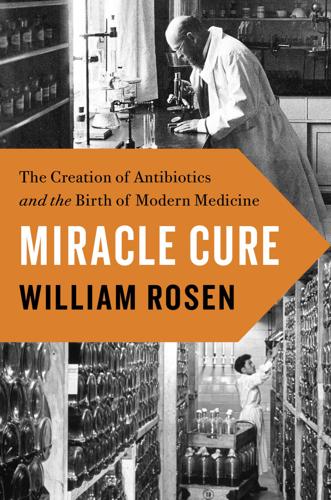
Miracle Cure
by
William Rosen
Published 14 Apr 2017
Recommended treatments had included insect blood, breast milk, bloodletting, high-altitude living, sea travel, drinking wine, avoiding wine, and—most famously—the “king’s touch,” which was the belief that a divinely sanctioned monarch, such as the king of England or France, could, by a laying on of hands, cure what they knew as scrofula.* However, the recorded history of tuberculosis is only the last part of its story. For a long time, the accepted wisdom was that tuberculosis emerged around the same time that humans discovered agriculture and started forming settled communities, during the so-called Neolithic Demographic Transition, or NDT, which began some ten to twelve thousand years ago. The reason that medical historians assumed this for so long has to do with the complicated nature of tuberculosis itself. Most of the really scary infectious diseases are what demographers call “crowd diseases.” Crowd diseases tend to feature high mortality—up to 50 percent when untreated—and a very rapid means of transmission.
…
R., 239 macrophages, 43, 80n, 185, 186 magic bullet, 39, 42, 48, 49, 52, 58, 59, 68, 78, 217, 238–39, 298 Major, Randolph, 2, 153, 161, 162, 195, 198–201 malaria, 52, 63, 99, 152, 163, 176, 177, 220, 224, 234 Malcolm, Wilbur G., 227n Manhattan Project, 152 Mann, Thomas, 188 margarine, 155n Marksman, The, 39 Martí-Ibáñez, Félix, 268–74, 279 Massengill, Samuel Evans, 75 Massengill Elixir Sulfanilamide, 75–76, 213n, 264, 281, 282 mast cells, 41, 43, 49 mastitis, 235, 236 Mayo, Charles H., 196 Mayo, William J., 196 Mayo, William Worrall, 195–96 Mayo Clinic, 195–97, 203, 206 Proceedings of the Mayo Clinic, 201 McGuire, James, 238, 240 McKeen, John, 172, 218–19, 222, 223, 227n, 240, 268 Mechnikov, Ilya, 80n Medical Research Council (MRC), 102–3, 107, 113–14, 121, 127, 128, 149, 155, 156, 173–74, 177, 208 streptomycin trials of, 211–13 Meister, Joseph, 31 Mellanby, Edward, 102, 113, 127, 128, 132, 155–56 Mendeleev, Dimitri, 51 meningitis, 76 mepacrine (Atabrine), 176, 177 meprobamate, 278 Merck, Friedrich Jacob, 158 Merck, George W., Jr., 2, 133, 153, 153n, 159–62, 198, 201–3, 207, 217, 239, 263 Merck, George W., Sr., 159, 160 Merck, Heinrich Emanuel, 158 Merck & Co., 2, 133, 153, 157–64, 166, 168–71, 170n, 176–77, 181, 198–202, 203, 230, 238, 240, 242, 294, 296, 304 Squibb and, 163 Waksman and, 191–92 Merck Institute for Therapeutic Research, 161–62 Merck’s Index, 158 mercurous chloride (calomel), 5, 9, 164 mercury, 8–10, 56, 187, 242 Merthiolate, 56n, 239 Mesmer, Franz, 12 Meticorten, 278 methylene blue, 52 Meyer, Karl, 165 microbiome, 301, 304 microorganisms, 11, 15, 19, 20, 25 connection of disease to, 23–24, 42, 43–44, 47 Koch’s postulates and, 28–29 toxins produced by, 44, 45, 47–48 microrespirometer, 108–10 microscopes, 18–19, 41, 50–51 Mietzsch, Fritz, 64–65, 70, 102 milk: penicillin in, 236 vitamin D in, 121, 154–55, 165, 230 Miller, Anne, 1–2, 139, 148, 166, 185, 294, 300 Miltown, 278 Mineral Springs Sanatorium, 182, 189, 203 Mintz, Morton, 284 molds and fungi, 90, 93, 94, 131, 165, 171, 192, 236 Molitor, Hans, 161 Monsanto, 160 Moran, Charles Wilson, Lord, 95 Morley, Christopher, 265 morphine, 73, 158, 159 Morrill, Justin Smith, 215n Morrill Act, 134, 215n Morris, William, 114, 173 mortality tables, 14 Moyer, Andrew, 136, 136, 138, 151, 156–57, 164, 165 MRSA, 301, 304 Muller, Otto Friedrich, 15 multiple myeloma, 283n mycobacteria, 194n Napoleon I, 6–7, 9, 15, 16, 29, 154, 246 Napoleon III, 16, 29, 57 National Academy of Sciences, 100, 202 National Defense Research Committee, 151–52 National Institutes of Health, 153, 165 National Research Council (NRC), 2, 133, 151, 251, 253, 254, 258 Nature, 190, 234 Nebuchadnezzar, King, 207 Neisser, Albert, 55–56 Nelson, Horatio, 148n Nembutal, 286 Neolithic Demographic Transition (NDT), 183–84 News Chronicle, 149 Newton, Isaac, 49 New York Herald Tribune, 168 New York Society of Security Analysts, 219 New York Times, 71, 75, 85, 222, 232–33, 278 nitrobenzene, 244 Nobel Prize, 35, 48, 50n, 76–77, 97, 98n, 101, 104–5, 105n, 140, 142, 180–81, 200, 206, 266, 296 Northern Regional Research Lab, 135–36, 136, 138–39, 151, 153, 156, 157, 168, 172, 176, 215n, 248, 295 NRTIs, 294 nuclear power, 152 Nuffield, William Morris, Lord, 114, 173 Nuffield Provincial Hospitals Trust, 114, 127 null hypothesis, 84 Nuremberg Military Tribunals, 210 nux vomica, 242 Nystatin, 270–71 Obama, Barack, 300 O’Brien, Daniel P., 108 Office of Strategic Services, 202 oleandomycin, 271 opiates, 261 opium, 158 opsonins, 85 optochin, 59 Orr-Ewing, Jean, 120, 125 Osler, William, 8, 254–55 OSRD (Office of Scientific Research and Development), 151–53, 156, 165, 171, 177, 178, 243, 277, 296 Ossietzky, Carl von, 77 oxalic acid, 138 oxazolidinones, 303 oxazolone, 174 oxygen, 87 oxytetracycline: Terramycin, 218–20, 222–25, 228, 229, 233, 236, 237, 240, 254, 271 see also tetracyclines Palmer, A.

Our Kids: The American Dream in Crisis
by
Robert D. Putnam
Published 10 Mar 2015
In north Fullerton, the home of Cal State Fullerton, where the median household income was roughly $100,000 in 2012, the percentage of Latinos more than doubled from about 10 percent to 25 percent. Though Fullerton is far from the most opulent part of Orange County, the draw for these Latinos is clear: high-quality schools, a thriving economy, and increasingly rich cultural pluralism. The net result of these demographic transitions is that economic inequality within the Latino community in Orange County has grown significantly during the past four decades, just as it has within the black community in Atlanta. The percentage of Latino families living on less than $25,000 a year (in inflation-adjusted dollars) nearly doubled between 1970 and 2010, from 13 percent to 25 percent, at the same time that the percentage living on more than $100,000 a year rose from 12 percent to 17 percent.
…
Cherlin, The Marriage-Go-Round: The State of Marriage and the Family in America Today (New York: Vintage, 2009); Frank F. Furstenberg, Jr., “Transitions to Adulthood: What We Can Learn from the West,” ANNALS of the American Academy of Political and Social Science 646 (2013): 28–41; Sara McLanahan, “Diverging Destinies: How Children Are Faring Under the Second Demographic Transition,” Demography 41 (2004): 607–27; and Sara McLanahan and Wade Jacobsen, “Diverging Destinies Revisited,” in Families in an Era of Increasing Inequality: Diverging Destinies, eds. Paul R. Amato, Alan Booth, Susan M. McHale, and Jennifer Van Hook (New York: Springer, forthcoming 2015); Frank F.

Confessions of an Eco-Sinner: Tracking Down the Sources of My Stuff
by
Fred Pearce
Published 30 Sep 2009
Homo sapiens – the naked ape with attitude and big ambitions – was at his most fecund. But demographers have long assumed that this great population surge will fizzle out during the twenty-first century, as most of the world’s women settle down to a conventional Western family life with mother, father and two children. They call this boom followed by stabilization the ‘demographic transition’. It described well enough the progress until recently of the first countries to industrialize. In Europe the annual death rate declined from more than thirty deaths per thousand people in the seventeenth century to below ten today. With fertility rates initially remaining high, population growth rates in Europe at the start of the twentieth century reached a peak of around 1.5 per cent a year.
…
He argues that female emancipation is the natural social consequence of the shift from agricultural societies, built round the family unit, to the modern industrial world. ‘Post-agricultural society does not need the traditional family,’ he says. ‘At the level of the individual, there is no necessity for either families or fertility. The individual has been freed.’ In other words, the fertility crash is the logical, but previously unseen, conclusion of the demographic transition. Perhaps so, but needs and wants can be different. Women may have children because they want them, not because they need them. The real answer may be simpler. Young women may no longer want to be wives and mothers. Tim Dyson, professor of population studies at the London School of Economics, says not having children has become a statement of modernity and emancipation.

The Red Queen: Sex and the Evolution of Human Nature
by
Matt Ridley
Published 14 Aug 1993
He believes that human beings have always taken into account the need to give a child a ‘good start in life’. They have never been prepared to sacrifice quality of children for quantity. Thus, when an expensive education became a prerequisite of success and prosperity around the time of the demographic transition to low birth rates, people were able to readjust and lower the numbers of children they had in order to be able to afford to send them to school. Exactly this reason is given today by Thai people for why they are having fewer children than their parents.61 There has been no genetic change since we were hunter-gatherers, but deep in the mind of modern man is a simple male hunter-gatherer rule: strive to acquire power and use it to lure women who will bear heirs; strive to acquire wealth and use it to buy affairs with other men’s wives who will bear bastards.
…
All that the Fisher effect requires is for men to show a tendency to prefer the average face and runaway selection will take over: any man who deviates from the average preference has fewer or poorer grandchildren because his daughters are considered less beautiful than the average. It is a cruel, despotic fashion, one that enforces its pitiless logic at the expense of many a brilliant, kind and accomplished woman who happens to be plain, and one that has ironically been made worse by the demographic transition to prescribed monogamy. In medieval Europe, or ancient Rome, powerful men took all the beauties into their harems, leaving a general shortage of women for the other men, so an ugly woman stood a better chance of eventually finding some man desperate enough to marry her. That may not sound very just, but justice is rarely the consequence of sexual selection.

The Planet Remade: How Geoengineering Could Change the World
by
Oliver Morton
Published 26 Sep 2015
Few would advocate measures designed quickly to reduce today’s population by half; but the idea of never having added the second half apparently sounds attractive to many. The pressure that humanity puts on its environment, they think, would surely be less in such a world. Not necessarily. The demographic transition which begins when declining death rates allow long-stable populations to grow quickly and ends when a subsequent decline in birth rates evens things out was well under way in much of the world well before the nitrogen revolution came into its own. When Vogt and Osborn were sounding the alarm about population in the 1940s there were already two and half billion people on the planet.
…
It may be that the Malthusians would have been proved right, and mass mortality would have held the population to two thirds or three quarters of what it is today. In avoiding such an outcome, it seems to me that the nitrogen revolution did something very like what Tom Wigley has imagined climate geoengineering doing: it provided breathing space. It used fossil-fuel energy to create room in the earthsystem for the global demographic transition to play itself out without disrupting huge amounts of land and incurring all sorts of other of damage. In so doing, it caused a lot of disruption. But it reduced the risks of much worse outcomes. It could surely have been done better; in speeding up and rerouting the nitrogen cycle, humans have undoubtedly made a mess.

And Finally
by
Henry Marsh
How could I reject technology that might lessen all the sorrows of ageing – arthritis, cataracts and macular degeneration, cancer, osteoporosis and the withering of my brain seen on my brain scan? And yet I find the thought of a world populated by more and more old people, however fit and healthy they might be, horrible. This is, of course, happening already, with the great demographic transition of declining birth rates, brought about by the emancipation of women, birth control, sanitation, vaccination and declining infant mortality. But even if human beings – though perhaps only very wealthy ones – are soon all living to 150, will their suffering at the end be any less, just because they lived so many extra years?

The Technology Trap: Capital, Labor, and Power in the Age of Automation
by
Carl Benedikt Frey
Published 17 Jun 2019
Voth, 2010, “Understanding Growth in Europe, 1700–1870: Theory and Evidence,” in The Cambridge Economic History of Modern Europe, ed. S. Broadberry and K. O’Rourke (Cambridge: Cambridge University Press), 1:7–42. 22. O. Galor and D. N. Weil, 2000, “Population, Technology, and Growth: From Malthusian Stagnation to the Demographic Transition and Beyond,” American Economic Review 90 (4): 806–28; G. Clark, 2008, A Farewell to Alms. 23. For example, Ronald Lee and Michael Anderson cast doubt on the idea that the world was still Malthusian after 1500, showing that very little of the long-term variation in either fertility or mortality can be explained by wage patterns (2002, “Malthus in State Space: Macroeconomic-Demographic Relations in English History, 1540 to 1870,” Journal of Population Economics 15 [2]: 195–220).
…
“Inequality, Human Capital Formation, and the Process of Development.” In Handbook of the Economics of Education, edited by E. A. Hanushek, S. J. Machin, and L. Woessmann, vol. 4, 441–93. Amsterdam: Elsevier. Galor, O., and D. N. Weil. 2000. “Population, Technology, and Growth: From Malthusian Stagnation to the Demographic Transition and Beyond.” American Economic Review 90 (4): 806–28. Ganong, P., and D. Shoag. 2017. “Why Has Regional Income Convergence in the U.S. Declined?” Journal of Urban Economics 102 (November):76–90. Gaskell, E. C. 1884. Mary Barton. London: Chapman and Hall. Gaskell, P. 1833. The Manufacturing Population of England: Its Moral, Social, and Physical Conditions.

Deep Utopia: Life and Meaning in a Solved World
by
Nick Bostrom
Published 26 Mar 2024
But if the number of pigeons hatched is capped to the number of pigeons that die, then all the pigeons could sustainably enjoy above-subsistence existences.37 What is easy to see in the case of pigeons is harder to see in the case of humans, for several reasons (beside culturally specific blind spots):38 The human generation cycle is longer, so the dynamic unfolds over a larger timescale, making it harder to perceive. Human culture gives human societies more degrees of freedom than pigeon communities. And it turns out that, initially, cultural phenomena—the demographic transition—inhibit human reproduction when conditions become plentiful. It can take many generations for cultural and genetic selection to overcome this initial inhibition. Human economic productivity exhibits much greater economies of scale. Pigeons benefit from being part of flocks or colonies because they can learn about foraging locations and techniques and share the labor of watching for predators.39 But humans can learn a virtually unlimited amount from each other across a vast range of economically relevant subjects.
…
And the link between income and outcome remains very wobbly if instead of subjective well-being we use a more virtue-based or perfectionist standard for evaluating how well somebody is doing. Now what happens if we drop the assumption that the size of the human population is constant? Demographers point to a demographic transition that occurs at a certain point in a country’s development, a shift toward lower birth rates and lower death rates. I pointed out, however, that elementary considerations from evolutionary biology suggest that, in the longer run, human populations will start to grow again, as higher fertility is selected for.
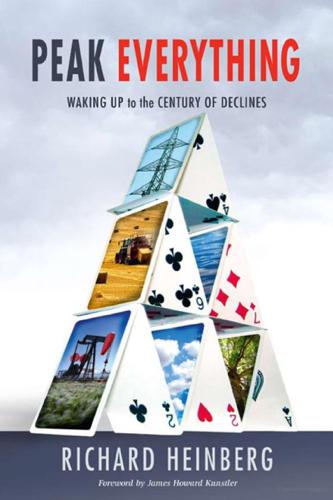
Peak Everything: Waking Up to the Century of Declines
by
Richard Heinberg
and
James Howard (frw) Kunstler
Published 1 Sep 2007
He believed this could be done with the introduction of universal suffrage, state-run education for the poor and, more controversially, the elimination of the Poor Laws and the establishment of an unfettered nation-wide labor market. He also argued that once the poor had a taste for luxury, then they would demand a higher standard of living for themselves before starting a family. Thus...Malthus is suggesting the possibility of “demographic transition,” i.e. that sufficiently high incomes may be enough by themselves to reduce fertility. Malthus believed that a general famine would occur in the near future unless his policies were implemented; in this he was clearly wrong. There have indeed been localized famines in the decades since his death (e.g., in Ireland, the Soviet Union, China, North Korea, and Ethiopia), but these have provided only a minor brake on global population, which has surged by over 500 percent in the interim.
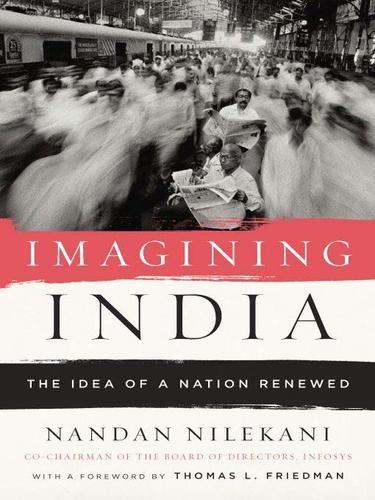
Imagining India
by
Nandan Nilekani
Published 25 Nov 2008
As Tom Friedman notes, these days rather than tell his children to finish their dinner because people are going hungry, “I tell my daughters to finish their homework because people in China and India are starving for their jobs.”j For a better idea of what has happened to our attitudes toward population, I spoke to the Harvard demographer David Bloom.k I met David for the first time at Davos in 2006, a decade after his paper titled “Demographic Transitions and Economic Miracles in Emerging Asia” made him famous much beyond academic circles—he is now one of those enviable scientists who can have a cocktail party audience hang onto his every word. David tells me that the key problem with early population theories was that “they were obsessed with overall population growth as an indicator, while ignoring the trends that lurked inside those figures.”
…
Dasgupta, Asim Datta, Aniruddha Dave, Surendra DCM D-Company Deewar Defense Research and Development Organization “defined contributions,” Delhi Delhi Development Act (1957) Delhi Development Authority (DDA) Delhi Metro Delhi Public School Delhi School of Economics (DSE) Delhi University (DU) Delimitation Commission Deming awards “demographic dividend,” “Demographic Transitions and Economic Miracles in Emerging Asia” (Bloom) Deng Xiaoping Deshpande. K. de Soto, Hernando Dharavi slum Dhoni, Mahendra Singh diabetes Dickens, Charles dietary issues direct benefit payments disease “double-hump dividend,” Dravida Munnetra Kazhagam (DMK) Dreamworks SKG Dreze, Jean droughts Dube, S.

The Half-Life of Facts: Why Everything We Know Has an Expiration Date
by
Samuel Arbesman
Published 31 Aug 2012
Science 171, no. 3970 (February 5, 1971): 450–59. 203 Do submerged islands…remain nation-states: “I Am a Rock, I Am an Island: How Submerged Islands Could Keep Their Statehood.” The Economist, May 26, 2011. 203 there are many who feel: “Tech Luminaries Address Singularity.” IEEE Spectrum, June 2008. 204 its development has gone hand in hand: This is known as the demographic transition. 204 his taxonomy had three kingdoms: Natural History Museum, London. “Carl Linnaeus.” http://www.nhm.ac.uk/nature-online/science-of-natural-history/biographies/linnaeus/index.xhtml. 205 the International List of Causes of Death was first adopted: World Health Organization. “History of the Development of the ICD.”

Who's Your City?: How the Creative Economy Is Making Where to Live the Most Important Decision of Your Life
by
Richard Florida
Published 28 Jun 2009
The advanced nations are going through a second transition, according to leading demographers. The first occurred during the early to mid-twentieth century and precipitated a golden age for marriage and family life. During that period, more people were married, divorce rates were low, and the age of first marriage for both men and women was the lowest in centuries. The second demographic transition, which began in the 1960s and has accelerated since the 1980s, is marked by declining marriage rates, rising divorce rates, falling fertility, and a sharp rise in the age of marriage for both men and women. So where do people turn for support during the increasingly long interval between leaving their parents’ house and getting married?
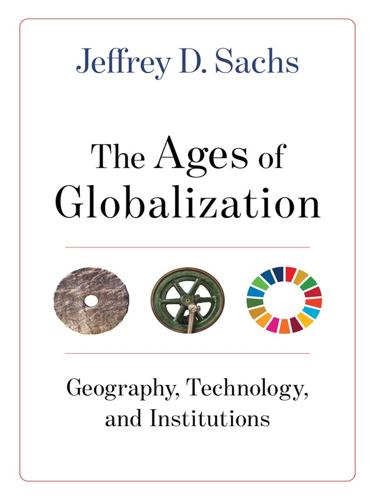
The Ages of Globalization
by
Jeffrey D. Sachs
Published 2 Jun 2020
The low-population trajectory, fortunately, is the one we would expect if we honor the commitments to healthcare for all (SDG 3), education for all (SDG 4), and gender equality (SDG 5). That combination would mean that both girls and boys will stay in school longer, marry later, join the labor force in greater numbers, and voluntarily choose to have smaller families, while investing more in the health, nutrition, and education of each child. That so-called demographic transition would lead to a peaking of the world population in this century of perhaps 9 billion, a faster reduction in poverty, and far less adverse stress on the natural environment than if the world population continues to rise throughout the century to more than 10 billion. 9.2 Low, Medium and High Fertility Projections Source: United Nations, Department of Economic and Social Affairs, Population Division (2019).

More Than You Know: Finding Financial Wisdom in Unconventional Places (Updated and Expanded)
by
Michael J. Mauboussin
Published 1 Jan 2006
Census Bureau data, which were not available until early 2001, based on 5.5 million firms and more than 100 million employees. Axtell notes that the distribution of firm sizes is insensitive to changes in political and regulatory environments, waves of mergers and acquisitions, new firm and bankruptcy trends, and even large-scale demographic transitions within the workforce (e.g., women entering the U.S. workforce).6 The implication is that there are important underlying mechanisms that create the order we see. EXHIBIT 35.1 Rank and Size of U.S. Cities, 1790-1990 Source: Batten, Discovering Artificial Economics, 165. Reproduced by permission of Westview Press, a member of Perseus Books, L.L.C.

The Origins of Political Order: From Prehuman Times to the French Revolution
by
Francis Fukuyama
Published 11 Apr 2011
Birdzell, How the West Grew Rich (New York: Basic Books, 1986); North and Thomas, The Growth of the Western World; Philippe Aghion and Steven N. Durlauf, eds., Handbook of Economic Growth, Vol. 1 (Amsterdam: Elsevier/North Holland, 2005), particularly the chapter by Oded Galor, “From Stagnation to Growth: Unified Growth Theory”; Oded Galor and David N. Weil, “Population, Technology, and Growth: From Malthusian Stagnation to the Demographic Transition and Beyond,” American Economic Review 90 (2000): 806–28. 8 Massimo Livi-Bacci, Population and Nutrition: An Essay on European Demographic History (New York: Cambridge University Press, 1991), p. 12. 9 Livi-Bacci, Concise History of World Population, p. 28. 10 See Alan Macfarlane, “The Malthusian Trap,” in William A.
…
American Interest 5(1):18–25. Furet, François. 1992. Revolutionary France, 1770–1880. Malden, MA: Blackwell. Fustel de Coulanges, Numa Denis. 1965. The Ancient City. Garden City, NY: Doubleday. Galor, Oded, and David N. Weil. 2000. “Population, Technology, and Growth: From Malthusian Stagnation to the Demographic Transition and Beyond.” American Economic Review 90:806–28. Galston, William A. 2010. Can a Polarized American Party System Be “Healthy”? Washington, D.C.: Brookings Institution Issues in Governance. Gati, Charles. 2008. “Faded Romance.” American Interest 4(2):35–43. Geertz, Clifford. 1973. The Interpretation of Cultures.

Immigration and Ethnic Formation in a Deeply Divided Society: The Case of the 1990s Immigrants From the Former Soviet Union in Israel
by
Majid Al Haj
Published 20 Nov 2003
The Melting Pot Ideology The school of thought presented above formed both the intellectual basis and legitimizing force of the melting-pot approach adopted by the Israeli absorption system. Based on the conception that sociocultural differences among Jewish communities are a symbol of “Diaspora existence,” it was expected that the demographic transition of 46 Jewish Diasporas to Israel—the ingathering of exiles—should be followed by a cultural-psychological mizzug galuyot or fusion of exiles (Ayalon, Ben-Rafael, and Sharot 1985). Behind the mizzug galuyot concept lies the belief of the IsraeliZionist establishment that cultural elements of Diaspora origin are part of a “false Diaspora identity” that should be replaced by an “authentic” Israeli one, so as to turn the ingathered exiles into a unified Jewish society in Israel (Halper 1985: 114).

Our Posthuman Future: Consequences of the Biotechnology Revolution
by
Francis Fukuyama
Published 1 Jan 2002
This looming crisis is real enough: Japan, for instance, will go from a situation in which there were four active workers for every retired person at the end of the twentieth century, to one in which there are only two workers per retired person a generation or so down the road. But there are other political implications as well. Take international relations.16 While some developing countries have succeeded in approaching or even crossing the demographic transition to subreplacement fertility and declining population growth, as the developed world has, many of the poorer parts of the world, including the Middle East and sub-Saharan Africa, continue to experience high rates of growth. This means that the dividing line between the First and Third Worlds in two generations will be a matter not simply of income and culture but of age as well, with Europe, Japan, and parts of North America having a median age of nearly 60 and their less developed neighbors having median ages somewhere in the early 20s.
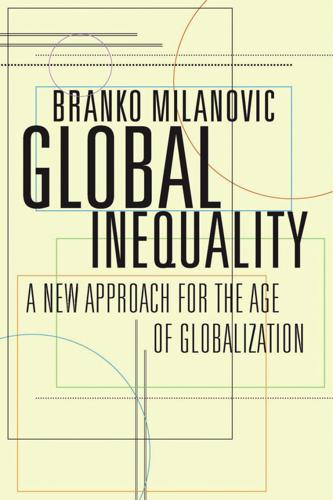
Global Inequality: A New Approach for the Age of Globalization
by
Branko Milanovic
Published 10 Apr 2016
It is only in growing economies that forces of rising education, greater political participation, and an aging population demanding social protection impart downward pressure on income inequality. In other words, it is not accidental that societies with higher (and growing) income are also societies that have a higher level of education and greater political rights and have gone through the demographic transition. Among the benign forces, I also list low-skill-biased technological change. I will have more to say about it at the end of this chapter, but this force is one, I believe, that has not been sufficiently explored and might hold some promise for the future. For historical reasons, we are used to thinking of technological progress as capital-driven, embodied in machines, and either complementing high-skilled labor (and thus raising the wage premium) and/or replacing low-skilled labor and thus producing the same effect of increasing the wage gap.

The 5 Types of Wealth: A Transformative Guide to Design Your Dream Life
by
Sahil Bloom
Published 4 Feb 2025
BACK TO NOTE REFERENCE 1 Walter Isaacson, “The Inspiration Behind Leonardo da Vinci’s Vitruvian Man,” Medium.com, October 30, 2017, https://medium.com/s/leonardo-da-vinci/the-inspiration-behind-leonardo-da-vincis-vitruvian-man-974c525495ec. BACK TO NOTE REFERENCE 2 Timothy B. Gage and Sharon DeWitte, “What Do We Know About the Agricultural Demographic Transition?,” Current Anthropology 50, no. 5 (October 1, 2009): 649–55, https://doi.org/10.1086/605017. BACK TO NOTE REFERENCE 3 “The Olympic Games,” History.com, June 12, 2024, https://www.history.com/topics/sports/olympic-games. BACK TO NOTE REFERENCE 4 Maria Popova, “The Science of Working Out the Body and the Soul: How the Art of Exercise Was Born, Lost, and Rediscovered,” Marginalian, May 10, 2022, https://www.themarginalian.org/2022/05/10/sweat-bill-hayes/.

Why We're Polarized
by
Ezra Klein
Published 28 Jan 2020
For the bulk of American history, you couldn’t win the presidency without winning a majority—usually an overwhelming majority—of the white vote. Though this changed before Obama—Bill Clinton won slightly less of the white vote than his Republican challengers—the election of an African American president leading a young, multiracial coalition made the transition stark and threatening. But this demographic transition is ongoing, not settled, and that makes the current moment particularly unstable. As Yale Law professor Amy Chua writes in Political Tribes: For two hundred years, whites in America represented an undisputed politically, economically, and culturally dominant majority. When a political tribe is so overwhelmingly dominant, it can persecute with impunity, but it can also be more generous.

Free World: America, Europe, and the Surprising Future of the West
by
Timothy Garton Ash
Published 30 Jun 2004
At exactly 1 P.M. on Monday, May 3, 2004, just before I sent this book to the typesetters, the figure was 6,361,555,780, but there’s a baby born every two-fifths of a second.109 Were the world’s population to carry on growing at this rate, it would be close to 13 billion in 2050.110 But the experts don’t think it will. They think the world is experiencing an outsize version of the demographic transition that many individual countries have gone through as they developed. First, food supplies, living conditions, and health care improve; as a result, life expectancy goes up while birth rates remain high, so population increases rapidly. Then, as people become more affluent, women more emancipated, and parents more confident that their children will survive, the curve flattens off—until eventually we start worrying about having too few children rather than too many.

Green and Prosperous Land: A Blueprint for Rescuing the British Countryside
by
Dieter Helm
Published 7 Mar 2019
In the 1970s and especially the 1980s, the assumption was that Britain’s population would peak and then perhaps gradually decline, and in the process it would age. The assumption was that Britain would go the way of Japan and Germany – with an ageing, static or even declining population. British women have already gone through the so-called ‘demographic transition’, and the silver lining to the silver age should be less pressure on resources. The depopulation of the rural areas that followed the great urbanisation of Britain in the nineteenth century, indeed since the enclosures, would continue relieving environmental pressures. We could, it was thought, become an older, less populated and greener country.

Red Flags: Why Xi's China Is in Jeopardy
by
George Magnus
Published 10 Sep 2018
‘China Has World’s Most Skewed Sex Ratio at Birth – Again’, South China Morning Post, 27 October 2016, <http://www.scmp.com/news/china/policies-politics/article/2040544/chinas-demographic-time-bomb-still-ticking-worlds-most>. 5. ‘China May Have 90 Million Fewer People Than Claimed’, South China Morning Post, 23 May 2017, <http://www.scmp.com/news/china/policies-politics/article/2095311/china-population-much-smaller-you-think-researchers-say>. 6. Harry X. Wu, Yang Du and Cai Fang, ‘China’s Premature Demographic Transition in Government-Engineered Growth’, in Asymmetric Demography and the Global Economy, ed. José Maria Fanelli, Palgrave Macmillan, 2015, pp. 187–212. 7. Hukou, discussed in Chapter 4, is the registration system according to which citizens are classified as rural or urban. 8. Shuaizhang Feng, Yingyao Hu and Robert Moffitt, ‘Long Run Trends in Unemployment and Labour Force Participation in China’, National Bureau of Economic Research, August 2015. 9.

The Coming of Neo-Feudalism: A Warning to the Global Middle Class
by
Joel Kotkin
Published 11 May 2020
Perhaps it is not surprising that identity politics based on such things as race, gender, or sexual orientation have taken a strong hold in places with few children and weakening family ties.12 The prevalence of singlehood and the culture of childlessness are often portrayed as matters of choice.13 But as generational researchers Morley Winograd and Mike Hais have pointed out, American millennial attitudes about family are not significantly different from prior generations, albeit with a greater emphasis on gender equality.14 Among American childless women under age 44, barely 6 percent are “voluntarily childless.”15 The vast majority of millennials want to get married and have children.16 A major reduction in childbearing may well be a blessing in some impoverished parts of the globe, but lower birth rates in higher-income countries will likely inhibit economic growth, due to rapid shrinkage of the labor force. Already in the United States, workforce growth has slowed to about one-third the level in 1970 and seems destined to fall even more.17 The demographic transition is even more marked in Japan, South Korea, Taiwan, and much of Europe, where finding younger workers is becoming a major problem for employers and could result in higher costs or increased movement of jobs to more fecund countries. As the employment base shrinks, some countries have raised taxes on the existing labor force to pay for the swelling ranks of retirees.18 In certain places, the prospect of an inexorable depopulation looms: in Russia between 1991 and 2011, around 13 million more people died than were born.19 China’s working-age population (those between 15 and 64 years old) peaked in 2011 and is projected to drop 23 percent by 2050.20 This decline will be exacerbated by the effects of the now discarded one-child policy, which led to the aborting of an estimated 37 million Chinese girls since it came into force in 1980.21 These grim statistics have created an imbalance between the sexes that could pose an existential threat to President Xi’s “China dream,” and perhaps to the stability of the Communist state.22 Getting Beyond Dogma Given the likely effects of greenhouse gas emissions on the world’s future climate, it will probably be necessary to change how we live, produce energy, and get around—even if such changes have significant economic costs.
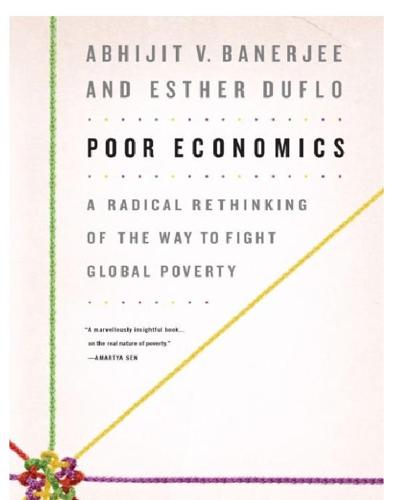
Poor Economics: A Radical Rethinking of the Way to Fight Global Poverty
by
Abhijit Banerjee
and
Esther Duflo
Published 25 Apr 2011
Gwatkin,“Political Will and Family Planning:The Implications of India’s Emergency Experience,” Population and Development Review 5 (1): 29–59 (1979), which is the source of this account of the forced sterilization episode during the Emergency. 2 John Bongaarts, “Population Policy Options in the Developing World,” Science 263 (5148) (1994): 771—776. 3 Jeffrey Sachs, Common Wealth: Economics for a Crowded Planet (New York: Allen Lane/Penguin, 2008). 4 World Health Organization, Water Scarcity Fact File, 2009, available at http://www.who.int/features/factfiles/water/en/. 5 Thomas Malthus, Population: The First Essay (Ann Arbor: University of Michigan Press, 1978). 6 Alywn Young, “The Gift of the Dying: The Tragedy of AIDS and the Welfare of Future African Generations,” Quarterly Journal of Economics 120 (2) (2005): 243–266. 7 Jane Forston, “HIV/AIDS and Fertility,” American Economic Journal: Applied Economics 1 (3) (July 2009): 170–194; and Sebnem Kalemli-Ozcan, “AIDS, ‘Reversal’ of the Demographic Transition and Economic Development: Evidence from Africa,” NBER Working Paper W12181 (2006). 8 Michael Kremer, “Population Growth and Technological Change: One Million B.C. to 1990,” Quarterly Journal of Economics 108 (3) (1993): 681–716. 9 Gary Becker, “An Economic Analysis of Fertility,” Demographic and Economic Change in Developed Countries (Princeton: National Bureau of Economic Research, 1960). 10 Sachs, Common Wealth. 11 Vida Maralani, “Family Size and Educational Attainment in Indonesia: A Cohort Perspective,” California Center for Population Research Working Paper CCPR-17-04 (2004). 12 Mark Montgomery, Aka Kouamle, and Raylynn Oliver, The Tradeoff Between Number of Children and Child Schooling: Evidence from Côte d’Ivoire and Ghana (Washington, DC: World Bank, 1995). 13 Joshua Angrist and William Evans, “Children and Their Parents’ Labor Supply: Evidence from Exogenous Variation in Family Size,” American Economic Review 88 (3) (1998): 450–477. 14 Joshua Angrist, Victor Lavy, and Analia Schlosser, “New Evidence on the Causal Link Between the Quantity and Quality of Children,” NBER Working Paper W11835 (2005). 15 Nancy Qian, “Quantity-Quality and the One Child Policy: The Positive Effect of Family Size on School Enrollment in China,” NBER Working Paper W14973 (2009). 16 T.

The Metropolitan Revolution: How Cities and Metros Are Fixing Our Broken Politics and Fragile Economy
by
Bruce Katz
and
Jennifer Bradley
Published 10 Jun 2013
Brookings, 2007 (www.brookings.edu/ research/reports/2007/11/06-metronation-berube). Berube, Alan, and Joseph Parilla. “Metro Trade: Cities Return to Their Roots in the Global Economy.” Brookings, 2012 (www.brookings. edu/research/papers/2012/11/26-metro-trade). Berube, Alan, and others. “The State of Metropolitan America: On the Front Lines of Demographic Transition.” Brookings, 2010. Burdett, Ricky, and Deyan Sudjie, eds. The Endless City. London: Phaidon, 2007. ———. Living in the Endless City. London: Phaidon, 2011. Calvino, Italo. Invisible Cities. New York: Harcourt Brace and Company, 1974. 245 11-2151-2 biblio.indd 245 5/20/13 7:00 PM 246 SELECTED BIBLIOGRAPHY Castells, Manuel.
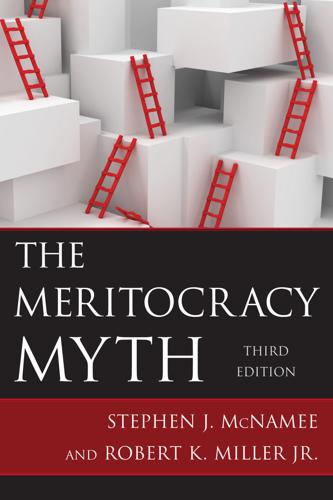
The Meritocracy Myth
by
Stephen J. McNamee
Published 17 Jul 2013
This rate has fallen from an average of 3.7 children born to American women in a lifetime at the height of the baby boom in 1957 (U.S. Census Bureau 2005) to 2.08 by 2008 (U.S. Census Bureau 2012a, 68), which is close to the replacement threshold of 2.1 that would be required to maintain current population size over time. According to the demographic transition theory, as countries industrialize, rates of fertility are reduced primarily because the economic incentives for higher fertility are reduced. That is, in agrarian societies it makes sense to have large families in order to have more potential workers available to work on the family farm.

A Small Farm Future: Making the Case for a Society Built Around Local Economies, Self-Provisioning, Agricultural Diversity and a Shared Earth
by
Chris Smaje
Published 14 Aug 2020
Ten heavily populated river catchments in Africa and Asia are responsible for 90% of marine plastic pollution, whereas pollution from populous catchments in wealthy countries is minimal. The significant factor isn’t bald population levels, but effective waste collection.6 With both examples there’s no simple and uniform relationship between population and impact. Another complicating factor is that, unnoticed by many, the world is now experiencing an unprecedented demographic transition. In just 50 years, global fertility has more than halved, from an average 5.07 live births per woman in 1964 to 2.45 in 2015. In three of the five most populous countries of the world, fertility rates are considerably below replacement rate; in fact, this is true in about half the countries of the entire world.
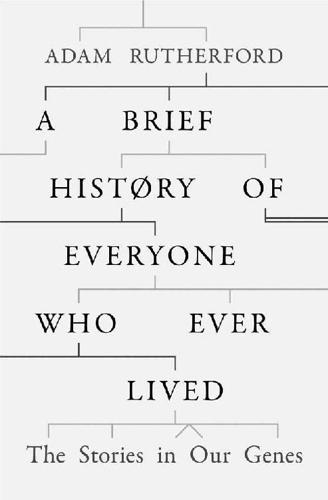
A Brief History of Everyone Who Ever Lived
by
Adam Rutherford
Published 7 Sep 2016
Davis Bradley Waldroup, Jr. (2011) Criminal Court for Polk County No. 08-101 Brooks-Crozier, Jennifer, ‘The nature and nurture of violence: early intervention services for the families of MAOA-LOW children as a means to reduce violent crime and the costs of violent crime’, Connecticut Law Review 44: 2 (2011) Lenders, J.W.M., et al., ‘Specific genetic deficiencies of the A and B isoenzymes of monoamine oxidase are characterized by distinct neurochemical and clinical phenotypes’, Journal of Clinical Investigation 97: 4 (1996), 1010–19 Frazzetto, G., et al., ‘Early trauma and increased risk for physical aggression during adulthood: the moderating role of MAOA genotype’, PLOS ONE 2: 5 (2007) Gibbons, Ann, ‘Tracking the Evolutionary History of a “Warrior” Gene’, Science 304: 5672 (2004), 818 Caspi, A., et al., ‘Role of genotype in the cycle of violence in maltreated children’, Science 297: 5582 (2002), 851–4 Lea, Rod and Chambers, Geoffrey, ‘Monoamine Oxidase, Addiction, and the “Warrior” Gene Hypothesis’, The New Zealand Medical Journal 120: 1250 (2007) McDermott, Rose, et al., ‘Monoamine oxidase A gene (MAOA) predicts behavioral aggression following provocation’, PNAS 106: 7 (2009), 2118–23 Beaver, Kevin M., et al., ‘Monoamine oxidase A genotype is associated with gang membership and weapon use’, Comprehensive Psychiatry 51: 2 (2010), 130–4 ‘“Ruthlessness gene” discovered by Michael Hopkin,’ Nature (4 April 2008) Hunter, Philip, ‘The Psycho Gene’, EMBO Reports 11: 9 (2010), 667–9 Tiihonen, J., et al., ‘Genetic background of extreme violent behavior’, Journal of Molecular Psychiatry 20: 6 (2015), 786–92 Hogenboom, Melissa, ‘Two genes linked with violent crime’, BBC Online (28 October 2014) On Adam Lanza Kolata, Gina, ‘Seeking Answers in Genome of Gunman’, New York Times (24 December 2012) Etchells, Peter J., et al., ‘Prospective Investigation of Video Game Use in Children and Subsequent Conduct Disorder and Depression Using Data from the Avon Longitudinal Study of Parents and Children’, PLOS ONE 11: 1 (2016) Myers, P.Z., ‘Fishing for meaning in a dictionary of genes’, Pharyngula (27 December 2012) The Hongerwinter Banning, C., ‘Food Shortage and Public Health, First Half of 1945’, The Annals of the American Academy of Political and Social Science 245: The Netherlands during German Occupation (May 1946), 93–110 Stein, A.D. and Lumey, L.H., ‘The relationship between maternal and offspring birth weights after maternal prenatal famine exposure: the Dutch Famine Birth Cohort Study’, American Journal of Human Biology 72: 4 (2000), 641–54 Kaati, G., et al., ‘Cardiovascular and diabetes mortality determined by nutrition during parents’ and grandparents’ slow growth period’, European Journal of Human Genetics 10: 11 (2002), 682–8 Pembrey, Marcus, et al., ‘Human transgenerational responses to early-life experience: potential impact on development, health and biomedical research’, Journal of Medical Genetics 51: 9 (2014), 563–72 Chopra, Deepak and Tanzi, Rudolph, ‘You Can Transform Your Own Biology’, www.chopra.com/ccl/you-can-transform-your-own-biology Chapter 7: A short introduction to the future of humankind Fu, W., O’Connor, T.D., et al., ‘Analysis of 6,515 exomes reveals the recent origin of most human protein-coding variants’, Nature 493 (2013), 216–20 Pandit, Jaideep J., et al., ‘A hypothesis to explain the high prevalence of pseudo-cholinesterase deficiency in specific population groups’, European Journal of Anaesthesiology 28 (2011), 550 Reich, D., et al., ‘Reconstructing Indian population history’, Nature 461 (2009), 489–94 Moorjani, Priya, et al., ‘Genetic Evidence for Recent Population Mixture in India’, The American Journal of Human Genetics 93: 3 (2013), 422–38 Bolund, Elisabeth, et al., ‘Effects of the demographic transition on the genetic variances and covariances of human life-history traits’, Evolution 69 (2015), 747–55 Rolshausen, Gregor, et al., ‘Contemporary Evolution of Reproductive Isolation and Phenotypic Divergence in Sympatry along a Migratory Divide’, Current Biology 19: 24 (2009), 2097–101 Excerpt from Eliot, T.S., ‘Little Gidding’ from Four Quartets (Faber and Faber, 1942).
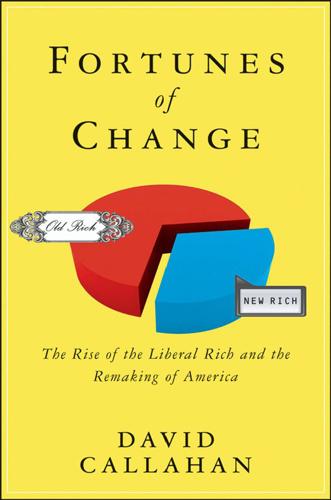
Fortunes of Change: The Rise of the Liberal Rich and the Remaking of America
by
David Callahan
Published 9 Aug 2010
They are as likely to be from Madras as Massachusetts. The same trend is evident in law. In 2009, the graduating class of Harvard Law School was a quarter nonwhite, and if you were to meet all of the first-year associates at a top firm like Cravath, Moore, you’d see a snapshot of a professional upper class in rapid demographic transition. To many in the new wealth elite, Obama’s race is no big deal. Although African Americans are still scarce within this elite, Obama is otherwise familiar: he’s the son of professional parents who attended an elite private school, graduated from an Ivy League university, and got a postgrad degree at yet another Ivy League school.
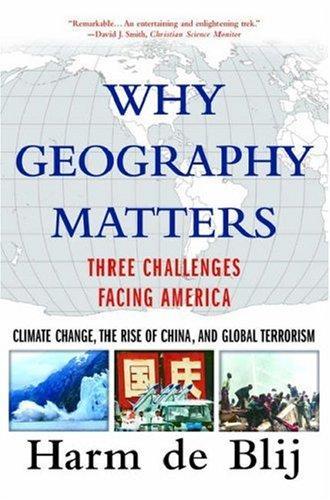
Why geography matters: three challenges facing America : climate change, the rise of China, and global terrorism
by
Harm J. De Blij
Published 15 Nov 2007
This is not to suggest that population growth is no longer a concern. The Earth's population overall is still growing rapidly if unevenly, so that the present decade will see an additional 600 million people, most of them in the poorer parts of the world. But it is also clear that the world is in a momentous demographic transition. Today, optimistic projections suggest that the human population will never exceed 10 billion. That is far too many; the neo-Malthusians say that the planet should support no more than 2.5 billion. On the other hand it is far fewer than neo-Malthusian projections of the twentieth century predicted.

Naked Economics: Undressing the Dismal Science (Fully Revised and Updated)
by
Charles Wheelan
Published 18 Apr 2010
Elizabeth Kolbert, “Back to School,” The New Yorker, March 5, 2001. CHAPTER 9. KEEPING SCORE 1. Michael Cox and Richard Alm, Time Well Spent: The Declining Real Cost of Living in America, Federal Reserve Bank of Dallas, 1997 Annual Report. 2. Oded Galor and David N. Weil, “Population, Technology, and Growth: From Malthusian Stagnation to the Demographic Transition and Beyond,” American Economic Review, vol. 20, no. 4 (September 2000). 3. Miriam Jordan, “Leprosy Remains a Foe in Country Winning the Fight Against AIDS,” Wall Street Journal, August 20, 2001. 4. Jane Spencer, “Why Beijing Is Trying to Tally the Hidden Costs of Pollution as China’s Economy Booms,” Wall Street Journal, October 2, 2006. 5.

Enriching the Earth: Fritz Haber, Carl Bosch, and the Transformation of World Food Production
by
Vaclav Smil
Published 18 Dec 2000
Although this would require steep fertility declines in a number of populous countries with high fertilities—most notably in Nigeria and Pakistan (whose current fertilities are 5.9 and 5.0, respectively)—such reductions would not be unprecedented. China cut its fertility from around six in the mid1960s to less than two by the mid-1990s, and a number of smaller Asian countries accomplished their demographic transition even faster. On the other hand, it is easy to argue that similar performances are much less likely throughout sub-Saharan Africa or in parts of the Middle East. Consequently, the possibility that the global population will surpass 10 billion people by the year 2050 cannot be excluded—but even the UN’s latest high forecast variant of 10.7 billion means that the world’s population would not double during the first half of the twenty-first century. 59.
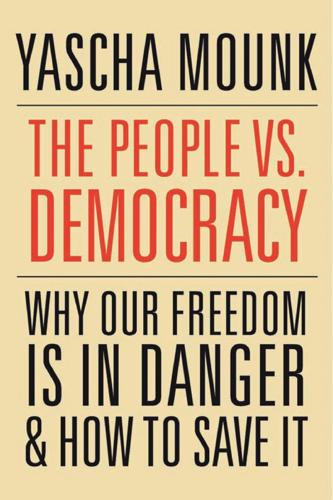
The People vs. Democracy: Why Our Freedom Is in Danger and How to Save It
by
Yascha Mounk
Published 15 Feb 2018
Among those who shared those demographic fears, Donald Trump trounced the competition: 63 percent reported having warm feelings about him, compared to 26 percent who had cool feelings about him. Among people who did not share the same demographic fear, by contrast, Trump was seen much less positively: 46 percent reported liking him, with 40 percent disliking him.48 Politicians in Western Europe are just as concerned by the coming demographic transition—and just as adept at exploiting fears about it. Germany Is Abolishing Itself, published in 2010 and one of the bestselling books of Germany’s postwar history, for example, is animated by the fear that ethnic Germans will one day cease to be a majority in their own country. (The problem is especially acute, Thilo Sarrazin, the book’s author, mused, because Germans are genetically predisposed to be more intelligent than Turks.)49 But it was a few years later, as the Syrian civil war brought millions of refugees to Western Europe, that demographic fears came to be at the center of the political discourse there.

Bourgeois Dignity: Why Economics Can't Explain the Modern World
by
Deirdre N. McCloskey
Published 15 Nov 2011
In Ireland at the time Malthus was writing, for example, such a rise in population was happening, fueled by Ireland’s (in fact) nourishing diet of milk and potatoes. At length the Famine of 1845–1850 descended.6 What the Malthus of 1798 could not have known, considering the frailty of social statistics in his time, is that the falling birth rate in France betokened a demographic transition to smaller family sizes; or, indeed, that in Britain itself the recent rapid population growth, without sharply falling wages, had already betokened quick enough betterment through new ideas for sawmills and seed drills and colonizing overseas to offset diminishing returns. The usual story had been that the supply of labor grew too fast, that when wages rose so did birth rates, and then in a generation or two, according to the Malthusian logic of entry to an ecological niche in a world of diminishing returns, the real wage would be pushed down again to subsistence, to $5 or $3 or even $1 a day.
…
.: Bismarck, 606 Deaton, Angus: postwar betterment, 43 Deaton, Clifford, 693n5 Declaration of the Intellectuals: German professors, 91 Defoe, Daniel: bourgeois novel, 255; busy ness, 256; Essay on Projects, 217, chap. 27, 257–259; fiction, 314–317; Moll Flanders, 163; newspapers, 392; pro-business, 156; quoted, 674n6, 674n7, 674n8; realism, 256; and slavery, 378 Degas, Edgar: on work, 590 Deimel, Fr. Anton: temple theory of Mesopotamia, 549–550 Dekker, Thomas: bourgeoisie, 307; The Shoemaker’s Holiday, chap. 33, 305 Delacroix, Jacques, 508 Deloney, Thomas: The Gentle Craft, part 1, 310 Deming, W. Edward, 361 demographic transition: in France, 16; Johansson, 517 Demsetz, Harold: property, 652n16, 698n1 Deng, Kent G., 652n15 Denmark: windmills, 68 Denyer, Simon: Chinese air pollution, 660n25 dependency theory: André Gunder Frank, 92; mercantilism, 513 Derrida, Jacques: deconstruction, 647 Descartes, René: method as rhetoric, 647 DeScioli, P.: humans punish for ethics, 652n19 de Soto, Hernando, 144, 537 de Stefano, Antonino: materialist history, 681n30 Deursen, A.

Whole Earth: The Many Lives of Stewart Brand
by
John Markoff
Published 22 Mar 2022
It had been four years since The Population Bomb had been published, and the issue of potentially mandatory population control remained a flashpoint in international forums. Barry Commoner, a rival biologist who was also in Stockholm, actively attacked Ehrlich’s view. Commoner argued that there would be a demographic “transition” and that population growth would abate. At the time, Brand remained firmly in Ehrlich’s camp, although years later he would change his view and acknowledge that Commoner had been correct. One evening he accompanied Healy to hear Peter Berg, an environmental activist who had been a member of the Diggers and the San Francisco Mime Troupe, make a distinction between “one world,” which he called a “bullshit transnational fuckup” idea, and “one planet,” which he considered a timeless idea grounded in experience.

Super Continent: The Logic of Eurasian Integration
by
Kent E. Calder
Published 28 Apr 2019
Aging also casts a deepening shadow on the long-term future of Northeast Asia. Japan now has nearly 70,000 centenarians11 and a population that has been dropping since 2010.12 Twenty-seven percent of its people are now over 65.13 Korea is similarly steadily graying, with a fertility rate of only 1.2 babies per woman (among the lowest on earth).14 And China’s demographic transition is impending, influenced by its longstanding one-child policy, only fully abandoned in 2015.15 By 2050 the number of births in China is projected by the US Census Bureau to be 35 percent less than in 2000, with China’s median population age rising close to 50.16 China’s total population will likely begin declining around 2025, the working-age population will fall more than 100 million workers by 2035, and before 2050 China will likely have more elderly than all the G-7 nations (North America, Europe, and Japan) combined.17 The Socioeconomic Impact of Globalization The incorporation of three billion new active participants in the world economy over the past three decades has had many positive effects, as China, India, Russia, and surrounding countries have at last begun interacting systematically with global markets.

The Pursuit of Power: Europe, 1815-1914
by
Richard J. Evans
Published 31 Aug 2016
French historians of the Annales school have become accustomed to speaking of an immobile history which persisted well into modern times in many parts of Europe, so that despite the fall of the ancien régime in European political systems at the end of the eighteenth century, the ancien régime économique et social persisted well into the second half of the nineteenth century. It took until this point, for example, for serfdom to disappear from the scene in most of Europe, while the long-established demographic pattern of high birth rates and high death rates did not begin to change, except in France, until the so-called ‘demographic transition’ of the decades after 1850. On the other hand, industrialization was a marginal process confined to small pockets of the European economy until the same period. Some historians, indeed – notably Arno Mayer in his book The Persistence of the Ancien Régime (1981) – have argued that the dominance of traditional aristocratic elites remained all the way up to the First World War, so that not much of significance changed in the political sphere either, despite all the surface turmoil of the era.
…
CONTROLLING THE PRIMAL URGE The fall in death rates that was one of the most striking aspects of the demographic history of nineteenth-century Europe was followed, at an interval, by a corresponding fall in birth rates: taken together the two trends constituted what historians call the ‘demographic transition’. Birth rates fell across Europe, from 31 live births per 1,000 population in Sweden in 1800 to 14 live births in 1913; in England the decline was from 38 to 24 live births, in Germany 40 to 28, in France 33 to 19, in Austria-Hungary 41 to 30. By contrast, in Italy the decline was far slower and less marked, from 37 in 1850 to 32 in 1913.

The Zero Marginal Cost Society: The Internet of Things, the Collaborative Commons, and the Eclipse of Capitalism
by
Jeremy Rifkin
Published 31 Mar 2014
David Madland and Ruy Teixeira, “New Progressive America: The Millennial Generation,” Center for American Progress, May 13, 2009, http://www.americanprogress.org/issues/progres sive-movement/report/2009/05/13/6133/new-progressive-america-the-millennial-generation/ (accessed March 14, 2013). 29. Ibid. 30. Ronald Lee, “The Demographic Transition: Three Centuries of Fundamental Change,” Journal of Economic Perspectives 17(4) (Fall 2003): 167–90. 31. “Kandeh K. Yumkella and Jeremy Rifkin Speaking about the Third Industrial Revolution,” UNIDO video, 3:27, November 29, 2011, http://www.youtube.com/watch?v=wJYuMTKG8bc (accessed June 6, 2013). 32.

The Precipice: Existential Risk and the Future of Humanity
by
Toby Ord
Published 24 Mar 2020
Population is now increasing in a roughly linear manner, with a fixed number of people being added each year instead of a fixed proportion. This change has been driven not by the feared increase in death rates, but by a dramatic change in fertility, as more and more countries have undergone the demographic transition to a small family size. In 1950, the average number of children born to each woman was 5.05. It is now just 2.47—not so far above the replacement rate of 2.1 children per woman.98 While we can’t know what will happen in the future, the current trends point to a rapid stabilization of the population.

Politics on the Edge: The Instant #1 Sunday Times Bestseller From the Host of Hit Podcast the Rest Is Politics
by
Rory Stewart
Published 13 Sep 2023
I continued to work on the strategy for seven months, partly with Lindy Cameron, the director general, who had been assigned as my pair, and partly with a DfID director, George Turkington, who debated much of the content with me on unpressurised aircraft flying between Virunga and Kasaï in the Democratic Republic of the Congo. Seven months of work with a Civil Service team meant that my ideas were now buried beneath Civil Service jargon (I found our ideas on girls’ education, for example, lumped under a ‘shift on demographic transition’ among four other ‘shifts’ and three ‘enablers’). But the strategy still included a transformation of the British presence in the Sahel, opening new embassies in Niger and Chad, and increased funding, staff and troop presence throughout the region. Across Africa as a whole, I and my DfID co-author proposed almost doubling our existing numbers, and opening five new embassies.

MacroWikinomics: Rebooting Business and the World
by
Don Tapscott
and
Anthony D. Williams
Published 28 Sep 2010
While North America and Europe still boast the largest pools of highly skilled creative professionals, it is unlikely to be the case for much longer. As we go forward the talent required to produce market-leading products and services will increasingly reside in locations such as Brazil, China, and India—largely because a seismic demographic transition unfolding today places the locus of growth in the global economy squarely in these developing markets. Two billion people from Asia and Eastern Europe have already joined the global workforce over the past decade and more will soon follow. Indeed, while developed countries worry about growing dependency ratios, most of the increase in world population and consumer demand will take place in developing nations.

Superintelligence: Paths, Dangers, Strategies
by
Nick Bostrom
Published 3 Jun 2014
Average income thus started to rise, first in the early-industrializing countries of Western Europe, subsequently in most of the world. Even in the poorest countries today, average income substantially exceeds subsistence level, as reflected in the fact that the populations of these countries are growing. The poorest countries now have the fastest population growth, as they have yet to complete the “demographic transition” to the low-fertility regime that has taken hold in more developed societies. Demographers project that the world population will rise to about 9 billion by mid-century, and that it might thereafter plateau or decline as the poorer countries join the developed world in this low-fertility regime.12 Many rich countries already have fertility rates that are below replacement level; in some cases, far below.13 Yet there are reasons, if we take a longer view and assume a state of unchanging technology and continued prosperity, to expect a return to the historically and ecologically normal condition of a world population that butts up against the limits of what our niche can support.

Thank You for Being Late: An Optimist's Guide to Thriving in the Age of Accelerations
by
Thomas L. Friedman
Published 22 Nov 2016
Indeed, if we eat enough yogurt, exercise well, and practice yoga, we could live long enough to see it triple. It was three billion in 1959 and six billion in 1999 and, as I said, is now expected to hit 9.7 billion in 2050. I use the phrase “now expected to hit” to underscore the point emphasized by the Population Institute in its 2015 report: it’s true that the world generally is undergoing a demographic transition from high mortality and high fertility to low mortality and low fertility; in many parts of the world that transition is well under way. In Europe, North America, and much of Latin America and East Asia, mortality and fertility rates have fallen so far so fast that they are now at, or below, the replacement rate, and population is actually declining in countries such as Taiwan, Germany, and Japan.

The Secret of Our Success: How Culture Is Driving Human Evolution, Domesticating Our Species, and Making Us Smarter
by
Joseph Henrich
Published 27 Oct 2015
To make the claim that dominance and prestige are genetically evolved forms of social status in humans, it’s crucial that both link to higher reproductive success in small-scale societies. However, in the modern world, the links between status and reproductive fitness are more complicated due to the demographic transition. In Europe in the mid-nineteenth century, women began substantially reducing their fertility (number of children). The pattern has since spread to many countries. The most educated and richest women have reduced their numbers of children most dramatically. Thus, in the modern world, achieving high status may actually be associated with having fewer children, not more, perhaps because having fewer children allows one to achieve greater prestige in a world with meritocratic institutions (Richerson and Boyd 2005). 10.
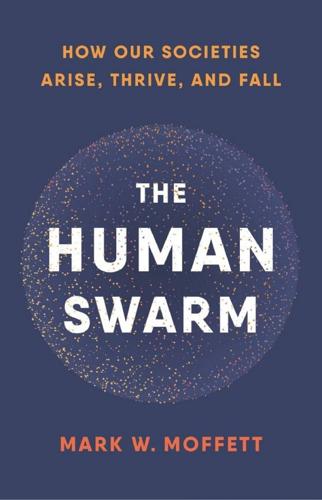
The Human Swarm: How Our Societies Arise, Thrive, and Fall
by
Mark W. Moffett
Published 31 Mar 2019
Annu Rev Sociol 34:153–179. Bloom P, C Veres. 1999. Perceived intentionality of groups. Cognition 71:B1–B9. Blurton-Jones N. 2016. Demography and Evolutionary Ecology of Hadza Hunter-Gatherers. Cambridge: Cambridge University Press. Bocquet-Appel J-P, O Bar-Yosef, eds. 2008. The Neolithic Demographic Transition and its Consequences. New York: Springer. Bodnar JE. 1985. The Transplanted: A History of Immigrants in Urban America. Bloomington: Indiana University Press. Boehm C. 1999. Hierarchy in the Forest: The Evolution of Egalitarian Behavior. Cambridge, MA: Harvard University Press. . 2013. The biocultural evolution of conflict resolution between groups.

The Life and Death of Ancient Cities: A Natural History
by
Greg Woolf
Published 14 May 2020
Philologists have read ancient texts more and more closely, putting aside modern assumptions about their meaning, looking more closely at their rhetorical and political agenda. Historians have compared ancient Greek and Roman cities with those of other societies from the time before industrial revolutions and demographic transitions changed everything. Most recently historians have engaged with the life sciences, which have taught us so much in recent years about the human animal, about the primate bases of our social life, about ecology and climate. Our new understandings of antiquity depend on a collaboration between the humanities and social science and biology.
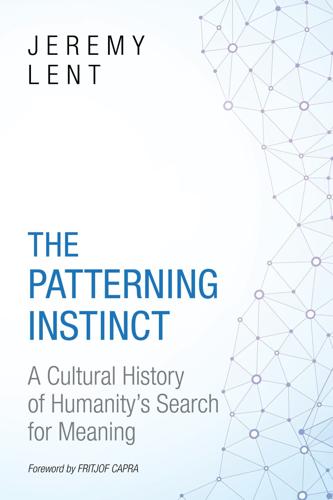
The Patterning Instinct: A Cultural History of Humanity's Search for Meaning
by
Jeremy Lent
Published 22 May 2017
Also, see Alexander, “Peak Oil”; Luis de Sousa, “What Is a Human Being Worth (in Terms of Energy)?,” The Oil Drum: Europe, 2008, http://europe.theoildrum.com/node/4315. 40. Will Steffen, cited in Wijkman and Rockström, Bankrupting Nature, locs. 968–73. See also John Bongaarts, “Human Population Growth and the Demographic Transition,” Philosophical Transactions of the Royal Society B: Biological Sciences 364, no. 1532 (2009): 2985–90; E. O. Wilson, The Future of Life (New York: Vintage Books, 2003), 28–29. 41. Julian L. Simon, “The State of Humanity: Steadily Improving,” Cato Policy Report, Cato Institute, 1995, https://www.cato.org/policy-report/septemberoctober-1995/state-humanity-steadily-improving (accessed February 5, 2017); Department of Economic and Social Affairs, Population Division, Charting the Progress of Populations (New York: United Nations, 2000), 45–49, http://www.un.org/esa/population/publications/charting/charting.htm (accessed February 5, 2017).

Immigration worldwide: policies, practices, and trends
by
Uma Anand Segal
,
Doreen Elliott
and
Nazneen S. Mayadas
Published 19 Jan 2010
The program has been widely criticized (e.g., Calliste, 1991; Cohen, 1994; Cunningham, 1995; Stasiulis & Bakan, 1997a, 1997b; Villasin & Phillips, 1994) for its sexist and classist regulations, such as the ‘‘livein’’ requirement. The province of Quebec has its own immigration regulations. Canada’s Demographic Transition Primary Sending Countries The peak years of immigration in Canadian history were 1913, when more than 400,000 newcomers came to Canada, and 1957, when over 280,000 newcomers arrived. The periods with the least number of newcomers since 1860 are 1895–1896, when less than 20,000 immigrants entered the country, and the 1940s, when the number of immigrants decreased to less than 10,000 (CIC, 2002).

Why the West Rules--For Now: The Patterns of History, and What They Reveal About the Future
by
Ian Morris
Published 11 Oct 2010
“Radiocarbon Dating of Charcoal and Bone Collagen Associated with Early Pottery at Yuchanyan Cave, Hunan Province, China.” Proceedings of the National Academy of Sciences 106 (2009), doi: 10.1073/pnas.0900539106. Boaz, Noel, and Russell Ciochon. Dragon Bone Hill: An Ice-Age Saga of Homo erectus. New York: Oxford University Press, 2004. Bocquet-Appel, Jean-Pierre, and Ofer Bar-Yosef, eds. The Neolithic Demographic Transition and its Consequences. Amsterdam: Springer, 2008. Bol, Peter. “This Culture of Ours”: Intellectual Transitions in T’ang and Sung China. Stanford: Stanford University Press, 1992. ———. Neo-Confucianism in History. Cambridge, MA: Harvard University Press, 2009. Bond, Gerard, et al. “Persistent Solar Influence on North Atlantic Climate during the Holocene.”

Fall; Or, Dodge in Hell
by
Neal Stephenson
Published 3 Jun 2019
Those who stuck with it had to find new sources of enjoyment, such as zooming in on individual flowers, gazing upon mountain vistas from various angles, going on virtual hikes through frozen landscapes where birds hung nearly motionless in the air. This intermission, if you wanted to think of it that way (in baseball terms, maybe a seventh-inning stretch), lasted for a couple of Meatspace years. During that time both SLU and Z-A were laying plans for the next phase of Bitworld’s expansion: the demographic transition from Mag 6 to Mag 8 (a million souls up to a hundred million); the bringing online, in orbit, of vast new arrays of solar power, computing systems, and thermal radiators to shine dull infrared into the cosmos. So it wasn’t a bad time anyway for an intermission. When finally the switches were thrown and the new equipment brought online, the Time Slip Ratio sprang ahead by orders of magnitude, to the point where months would fly by in Bitworld during a single day in Meatspace.

The Better Angels of Our Nature: Why Violence Has Declined
by
Steven Pinker
Published 24 Sep 2012
Laura Betzig found that emperors often had thousands of wives and concubines, princes had hundreds, noblemen had dozens, upper-class men had up to a dozen, and middle-class men had three or four.115 (It follows mathematically that many lower-class men had none—and thus a strong incentive to fight their way out of the lower class.) Recently, with the advent of reliable contraception and the demographic transition, the correlation has been weakened. But wealth, power, and professional success still increase a man’s sex appeal, and the most visible clue to physical dominance—height—still gives a man an edge in economic, political, and romantic competition.116 Whereas instrumental violence deploys the seeking and calculating parts of the brain, dominance deploys the system that Panksepp calls Intermale Aggression.